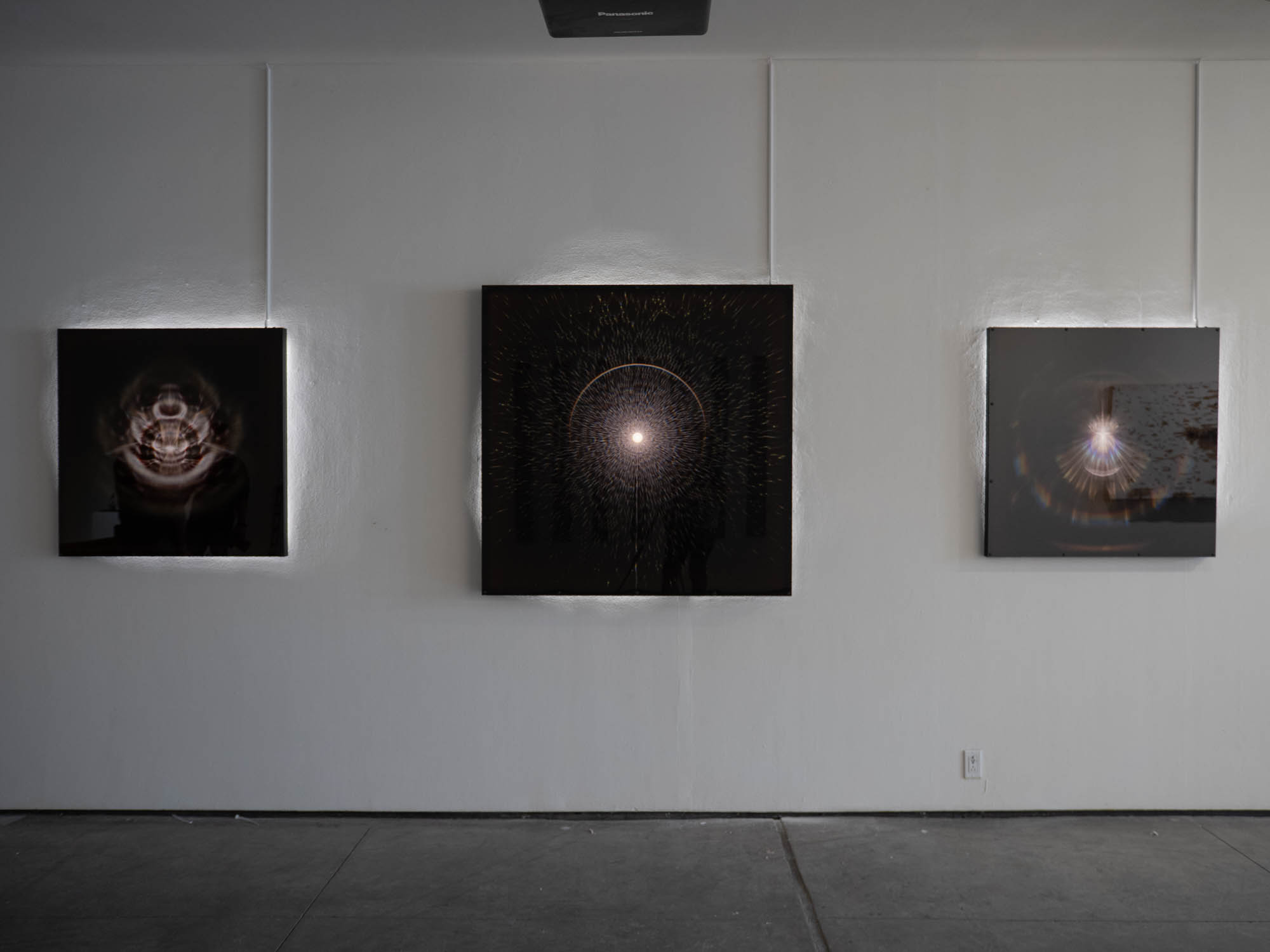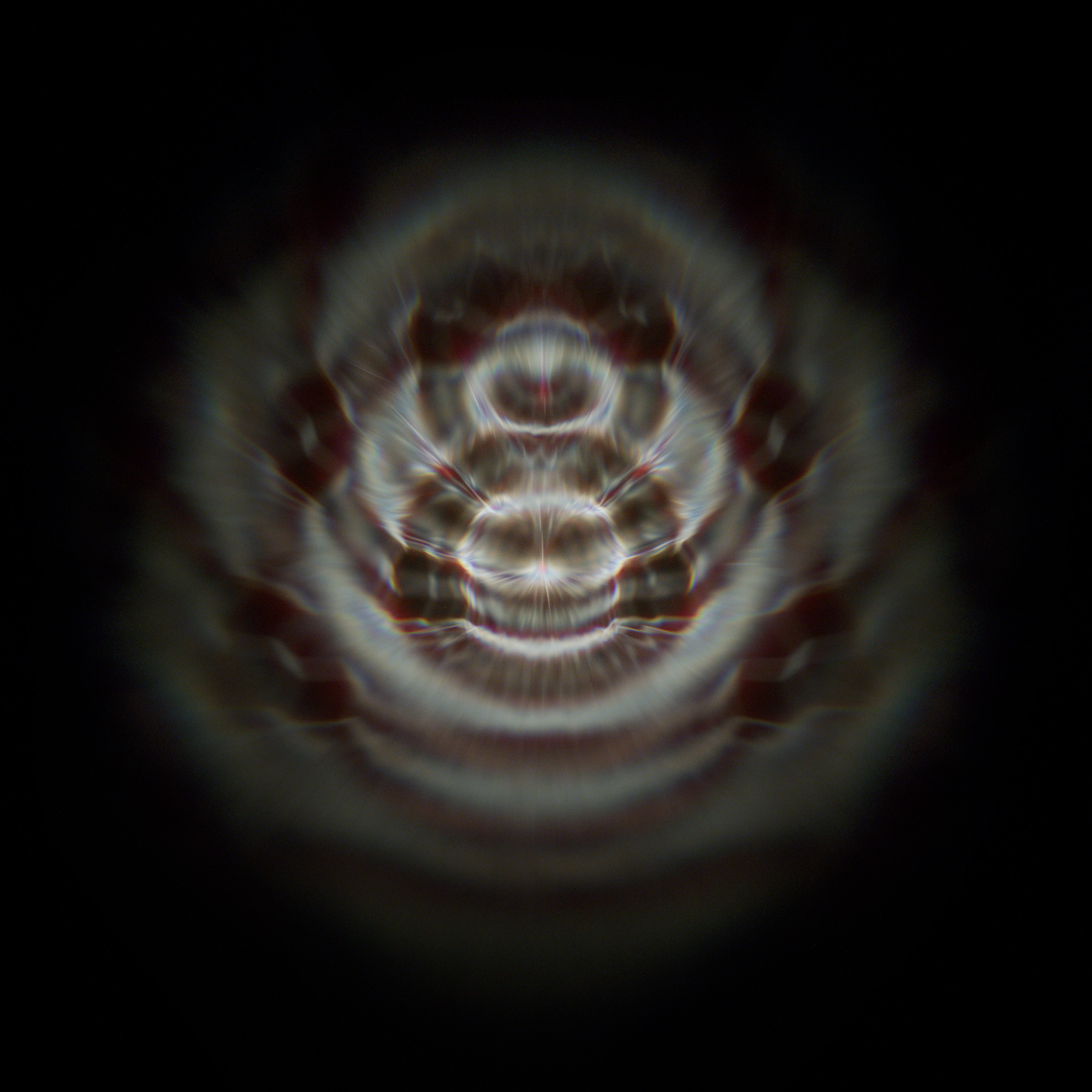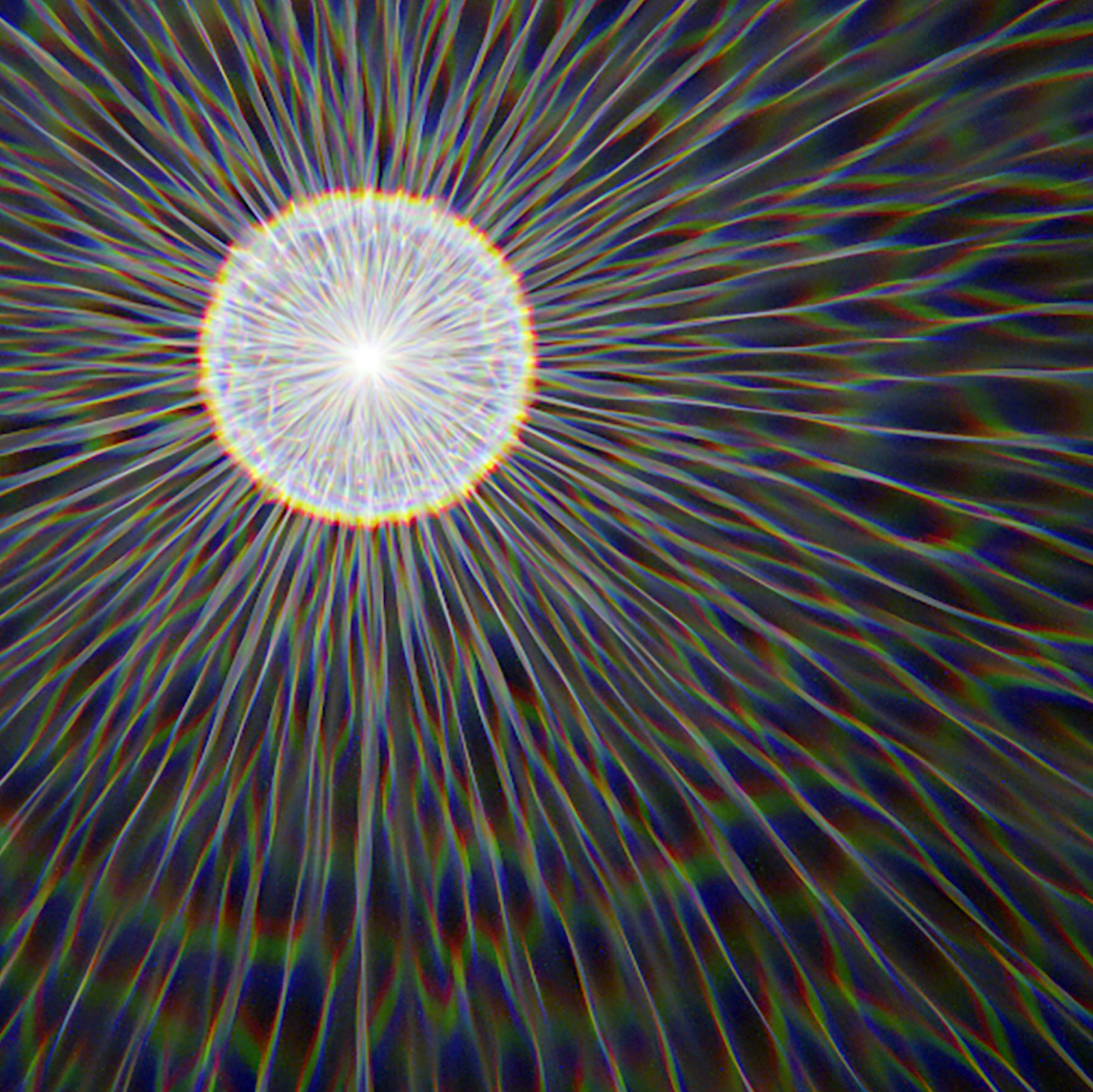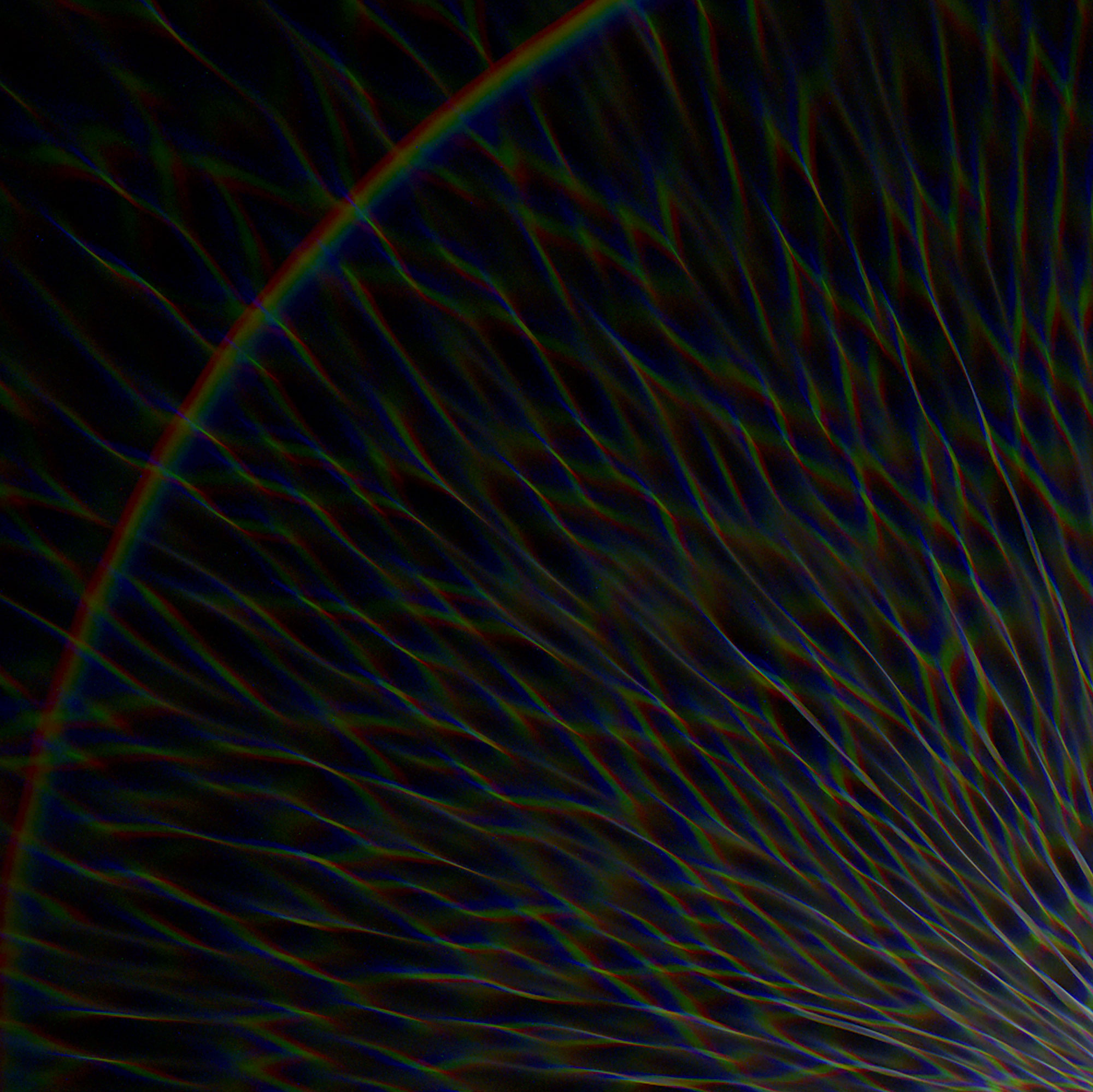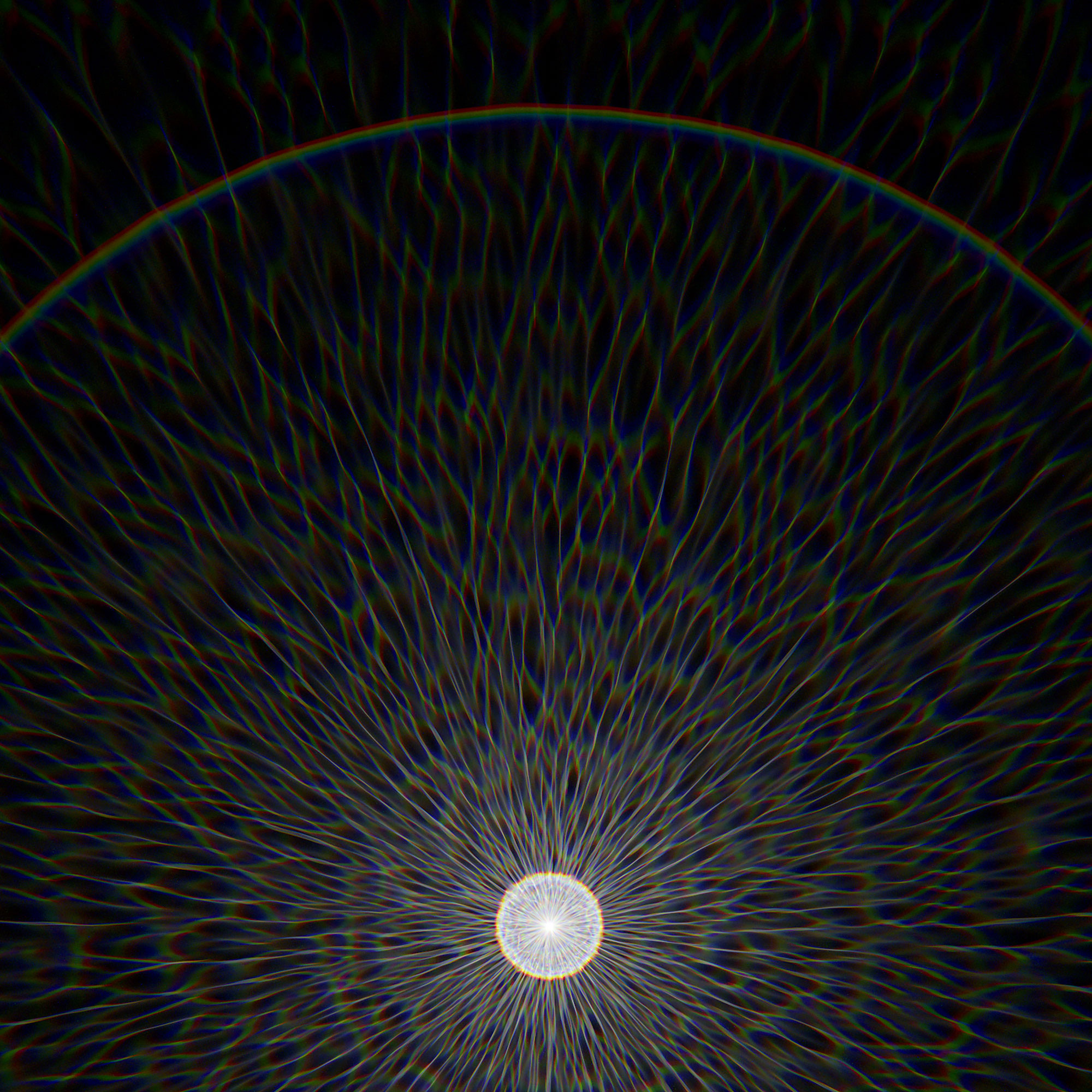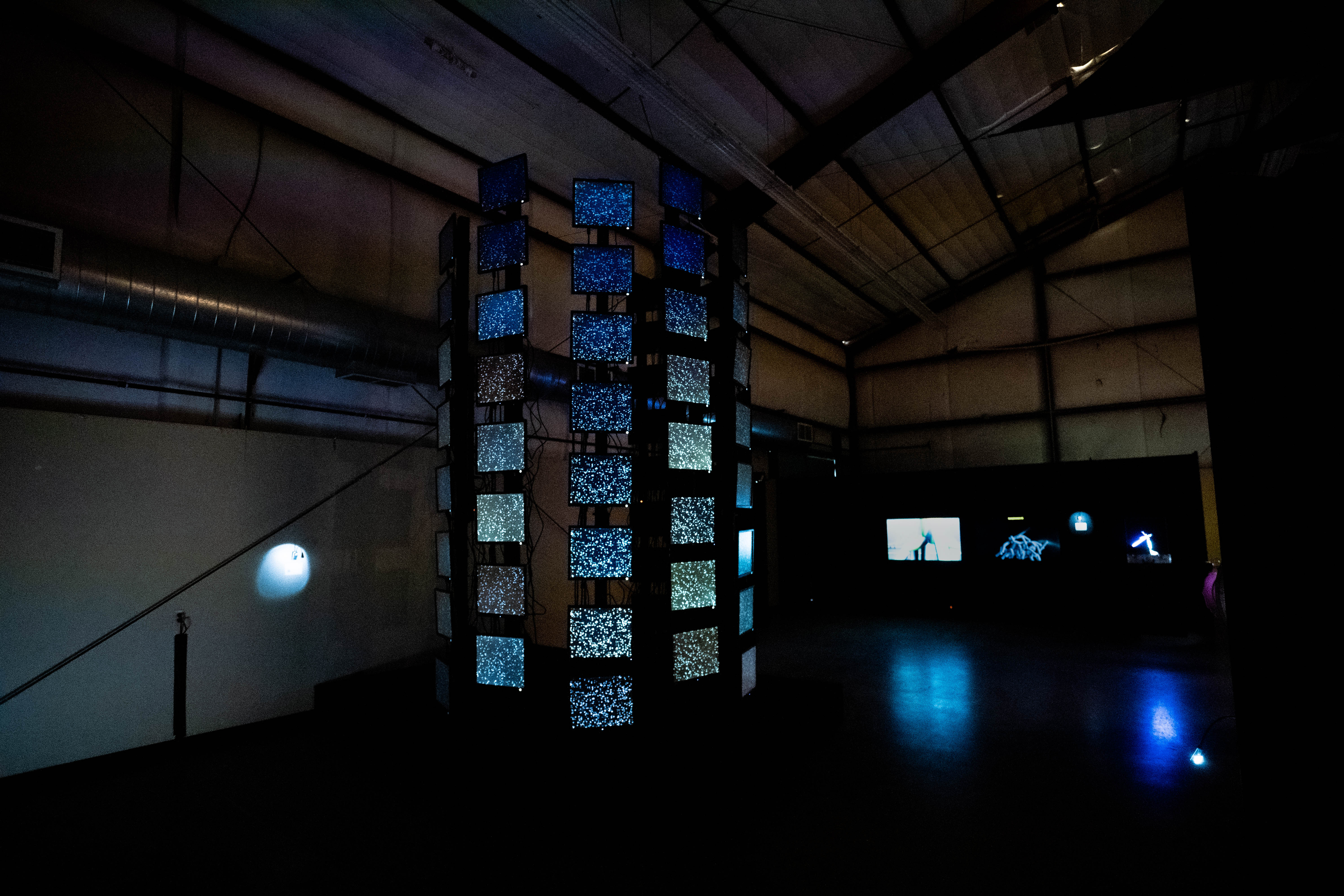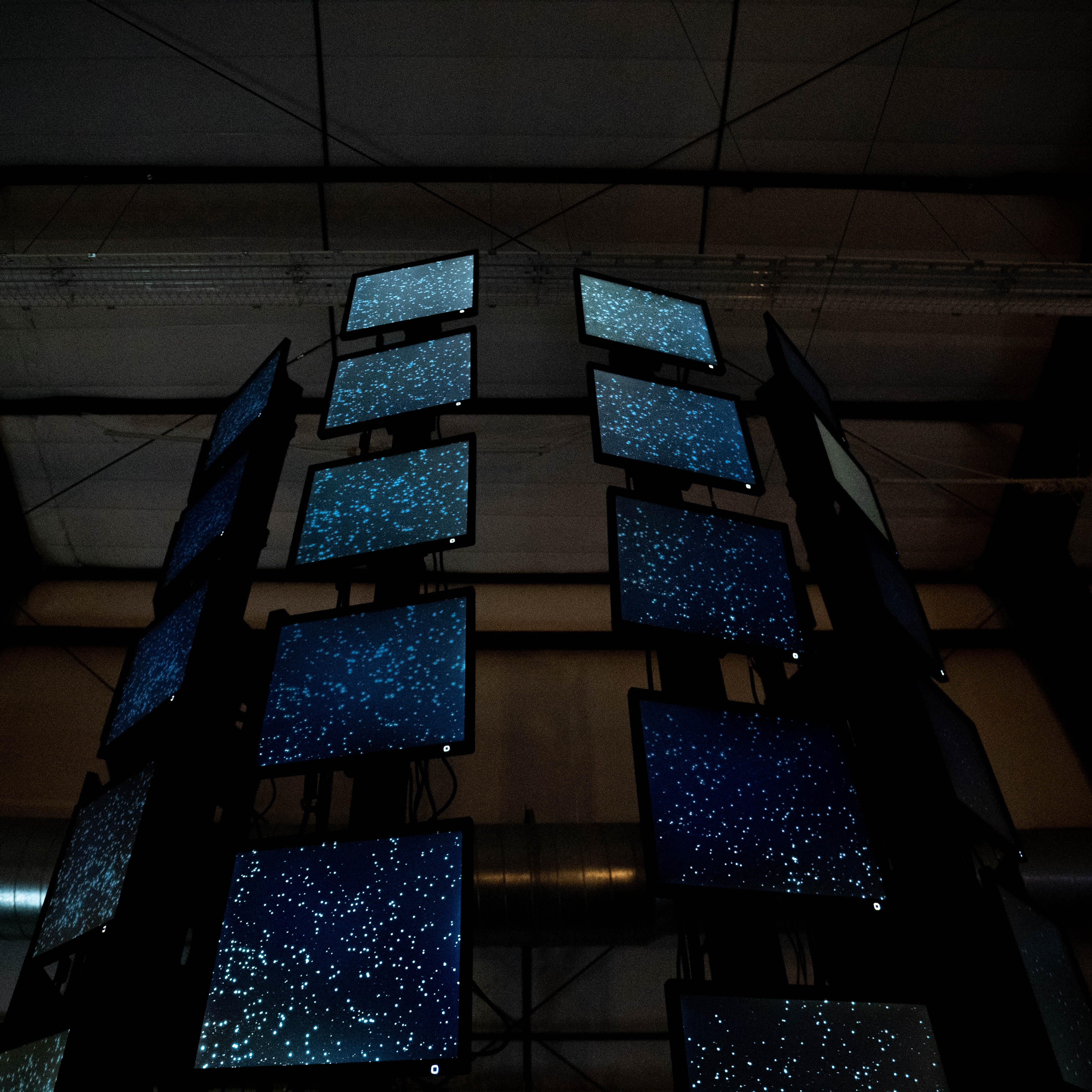Mirage (2025) is a site-specfic public sculpture made as a collaboration with artist Kirsten Angerbauer as part of the City of Albuquerque Public Art’s CityBrights II Project.
Mirage was installed on the exterior of the Rosenwald Building, at 4th and Central in Downtown Albuquerque, from March to May of 2025.
The sculpture consists of a geometric frame strung with bird-scare tape, a reflective agricultural tape designed to protect crops from animals. Natural and projected light reflected off this tape, creating caustics on the building that react to wind and other environmental factors outside.
Several RGB spotlights installed below the structure lit the sculpture throughout the day, changing pattern, speed, and colors based off integrated sensors that collected temperature, humidity and noise data at the installation site. As the day progressed and the crowd off Central got louder, the colors projected on the sculpture became more frequent and vibrant.
Mirage was installed on the exterior of the Rosenwald Building, at 4th and Central in Downtown Albuquerque, from March to May of 2025.
The sculpture consists of a geometric frame strung with bird-scare tape, a reflective agricultural tape designed to protect crops from animals. Natural and projected light reflected off this tape, creating caustics on the building that react to wind and other environmental factors outside.
Several RGB spotlights installed below the structure lit the sculpture throughout the day, changing pattern, speed, and colors based off integrated sensors that collected temperature, humidity and noise data at the installation site. As the day progressed and the crowd off Central got louder, the colors projected on the sculpture became more frequent and vibrant.
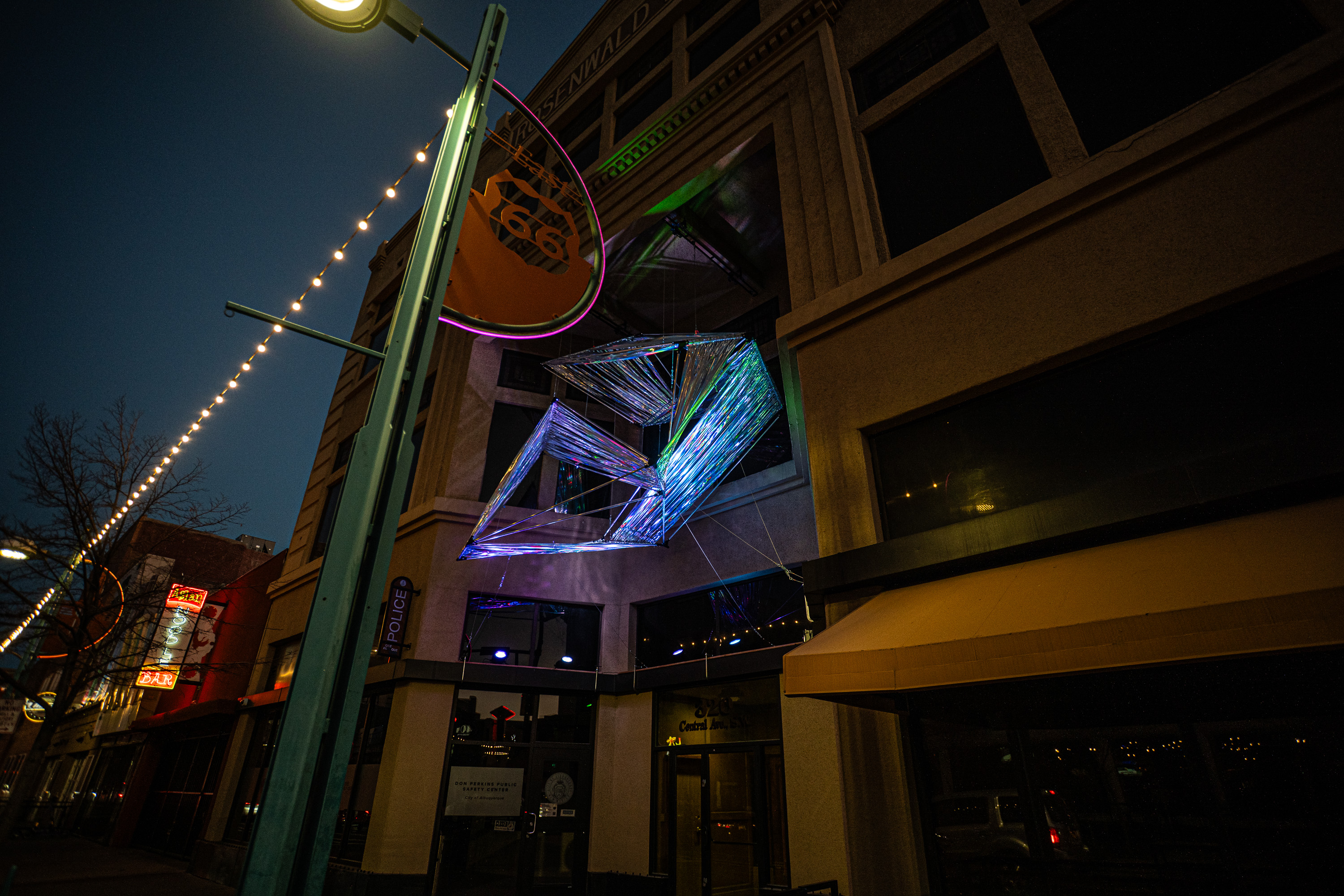

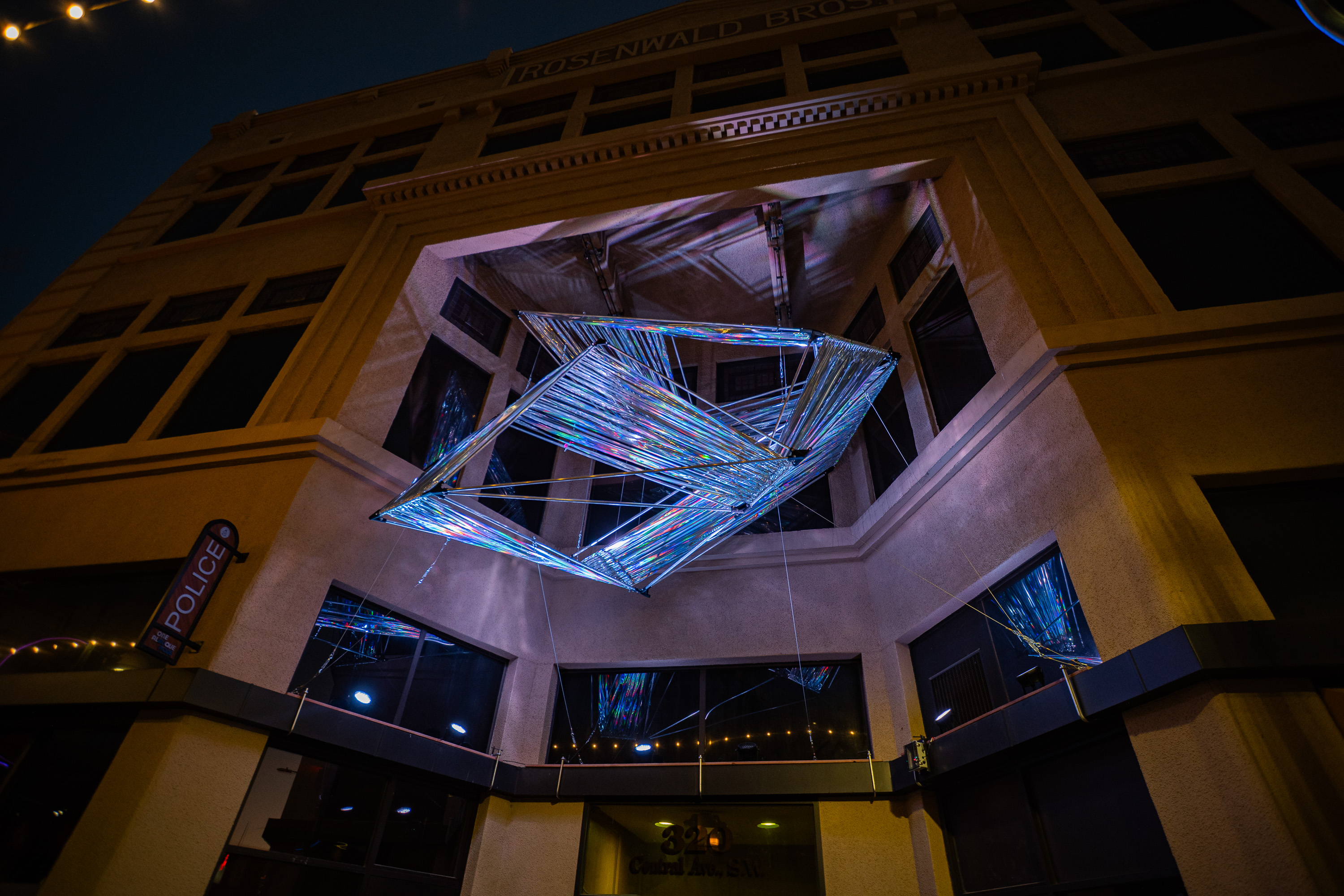












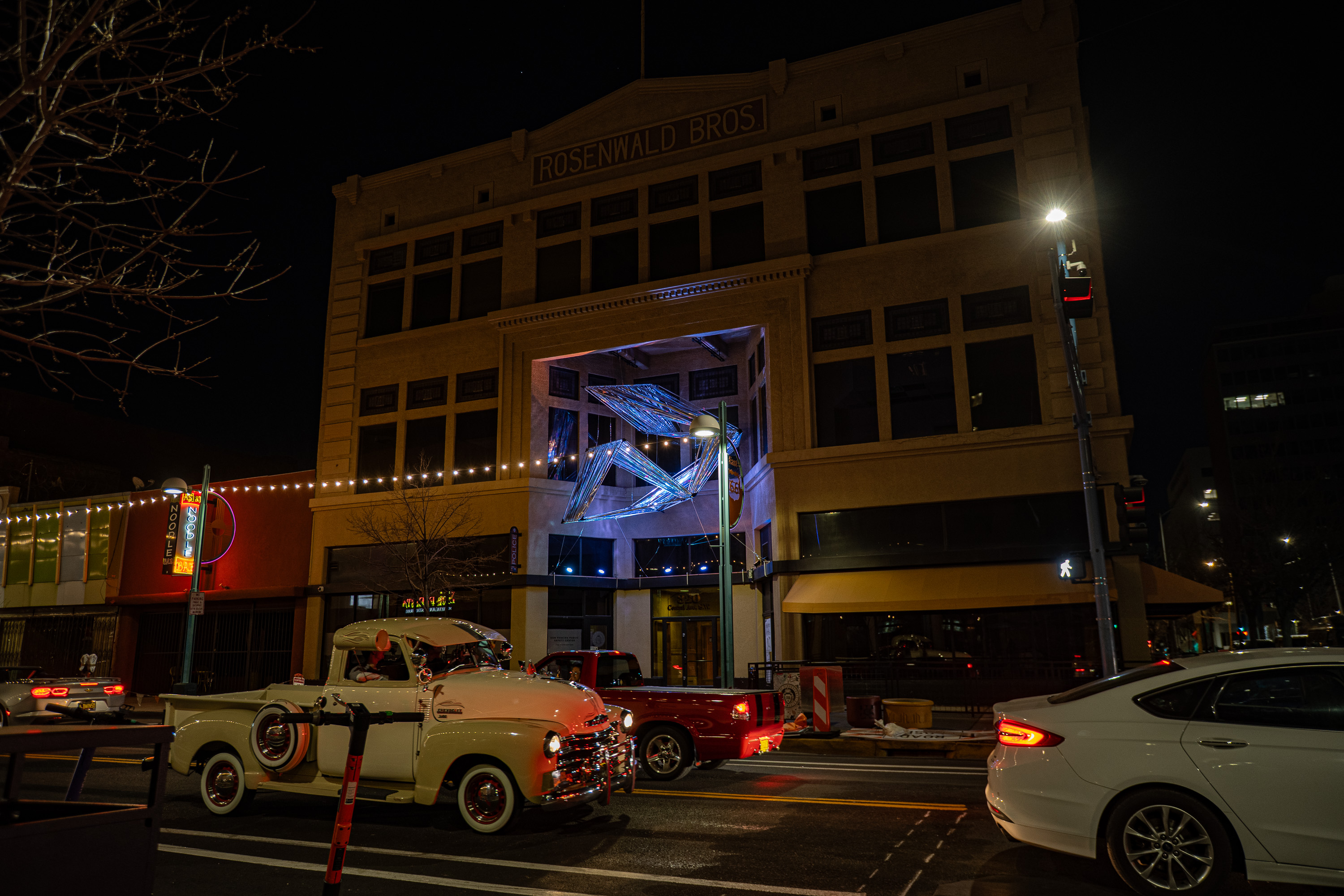



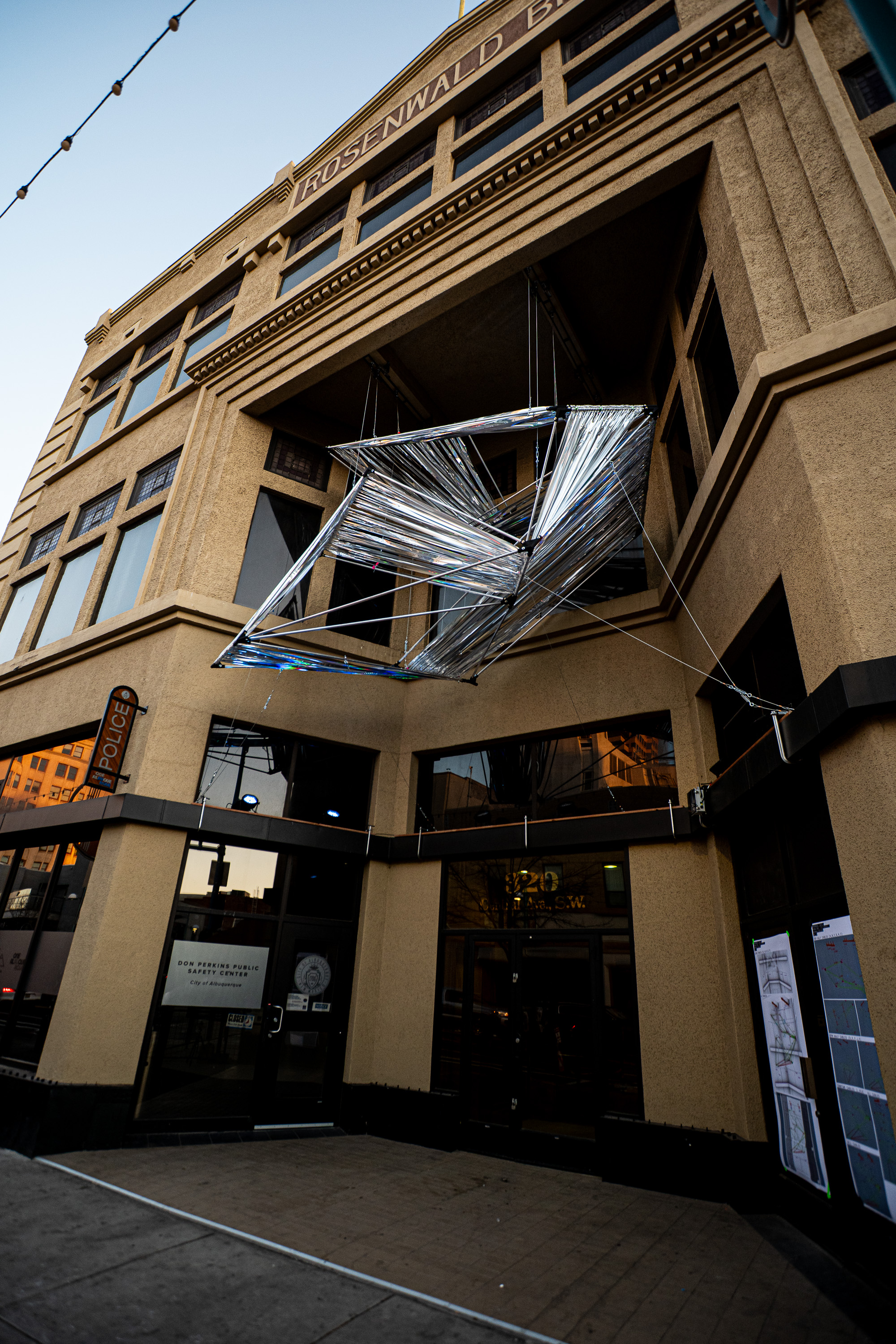


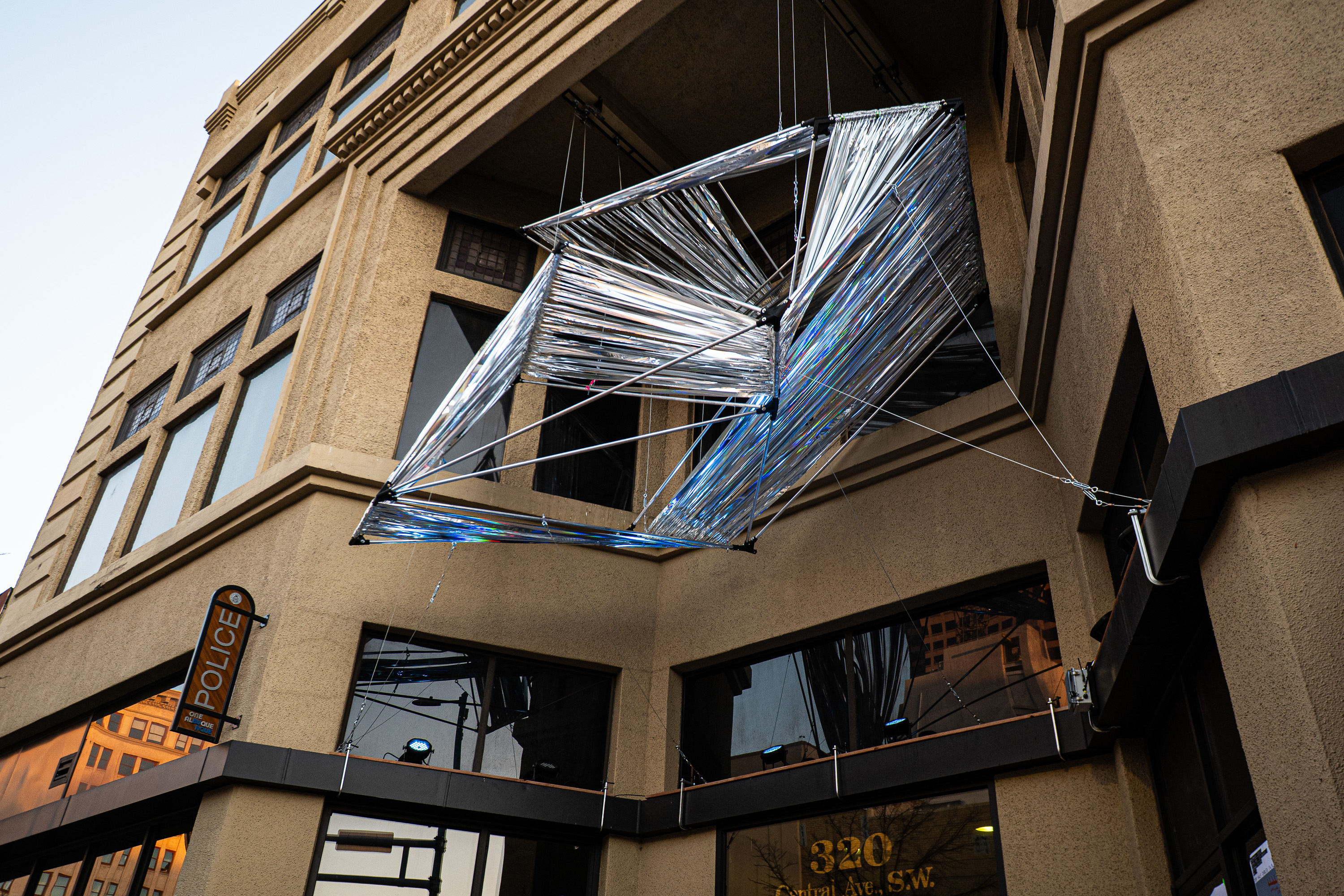


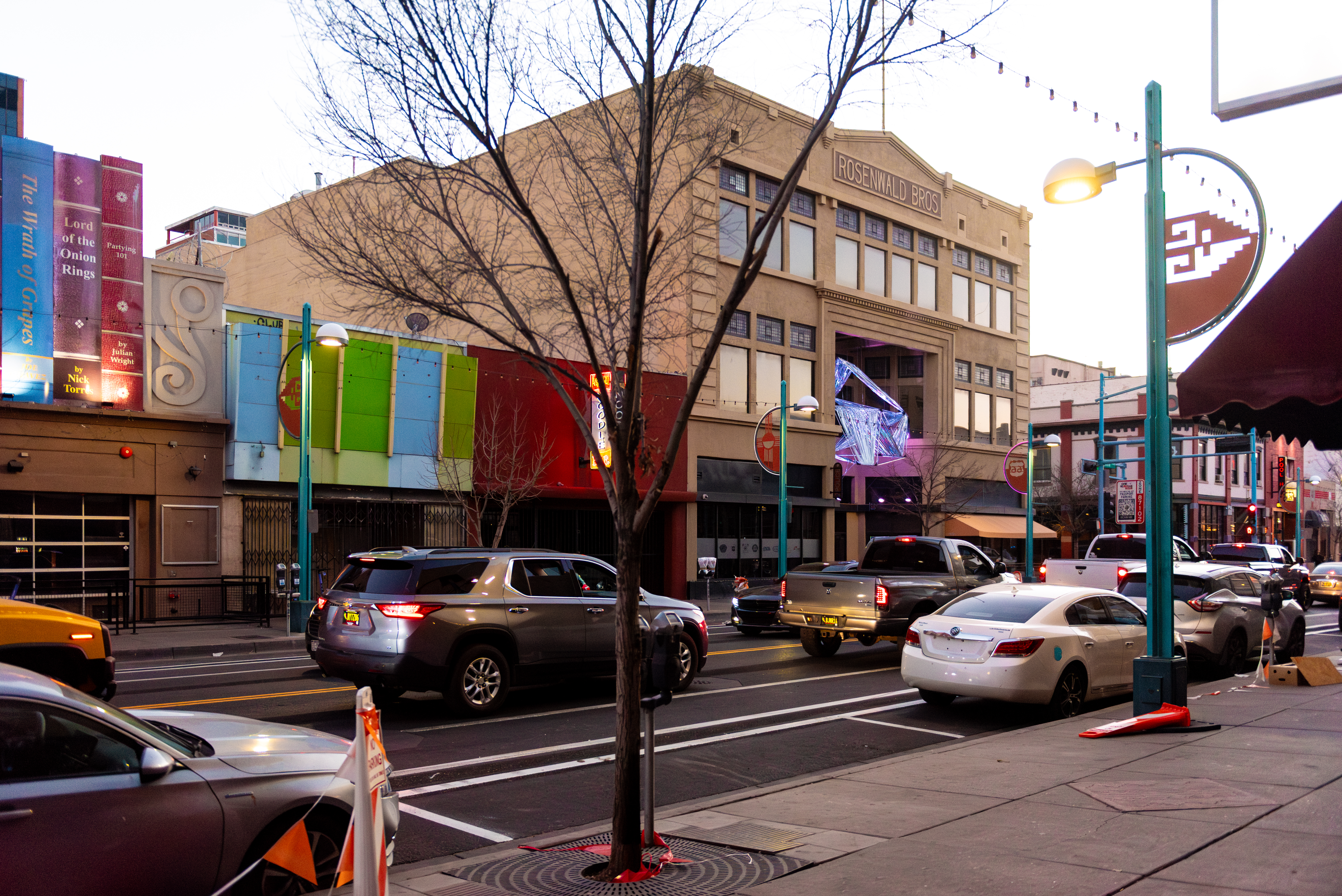


Counters (2023-) are a series of alternative-base counting visualizers.
They were made as a proposal for the City of Albuquerque Rail Trail Public Arts project, specifically as the final project for the Internet of Things Bootcamp.
The concept is inspired by the form and use of Dienes blocks and indigenous counting frames- specifically other cultures’ uses of numbering systems other than the standard base 10.
The work’s declaration of a ‘count’ as a meaningful action sets a stage to handle information generated as energy.
In their proposed final form, Counters would exist as a series of large scale outdoor lighting sculptures, playing heavily into the industrial design of transportation lighting.
In their current physical form, Counters are wall-scaled LED matrices as a proof of concept. These have been done in a pental, octal, and binary base configuration.
Counters obviously serve to perform a super-simple action, count. But its use of non-standard bases and LEDs as visual manipulatives serve to recontextualize ‘amounts’ into different forms. While the impact of this change seems non-transformative at small values, I hope to use it to visualize mentally unfathomable numbers at a new scale.
While the simplest action is a timer, the alternate base matrix could visualize any data, especially data that could be gathered from a public sculpture.
Counter 6 is a larger scale version made for public display. It consists of two rows of 16 signal lights, visualizing the direct 16-bit measurement values from an environmental light and temperature sensor through bitshifting techniques.
Counter 6 was on display at Albuquerque City Hall until June 7, 2024, as part of the Prototype show, along with the other artists part of the IoT Rail Trail art initiative.
They were made as a proposal for the City of Albuquerque Rail Trail Public Arts project, specifically as the final project for the Internet of Things Bootcamp.
The concept is inspired by the form and use of Dienes blocks and indigenous counting frames- specifically other cultures’ uses of numbering systems other than the standard base 10.
The work’s declaration of a ‘count’ as a meaningful action sets a stage to handle information generated as energy.
In their proposed final form, Counters would exist as a series of large scale outdoor lighting sculptures, playing heavily into the industrial design of transportation lighting.
In their current physical form, Counters are wall-scaled LED matrices as a proof of concept. These have been done in a pental, octal, and binary base configuration.
Counters obviously serve to perform a super-simple action, count. But its use of non-standard bases and LEDs as visual manipulatives serve to recontextualize ‘amounts’ into different forms. While the impact of this change seems non-transformative at small values, I hope to use it to visualize mentally unfathomable numbers at a new scale.
While the simplest action is a timer, the alternate base matrix could visualize any data, especially data that could be gathered from a public sculpture.
Counter 6 is a larger scale version made for public display. It consists of two rows of 16 signal lights, visualizing the direct 16-bit measurement values from an environmental light and temperature sensor through bitshifting techniques.
Counter 6 was on display at Albuquerque City Hall until June 7, 2024, as part of the Prototype show, along with the other artists part of the IoT Rail Trail art initiative.
Counter 6, base 2 (binary) visualizer, at Albuquerque City Hall
![]()
Binary Number Visualized in LEDs
![]()
![]()
![]()
![]()
![]()
![]()
![]()
![]()
Counter 4, base 8 (octal) visualizer
![]()
![]()
![]()
![]()
![]()
![]()
Watch my presentation here:
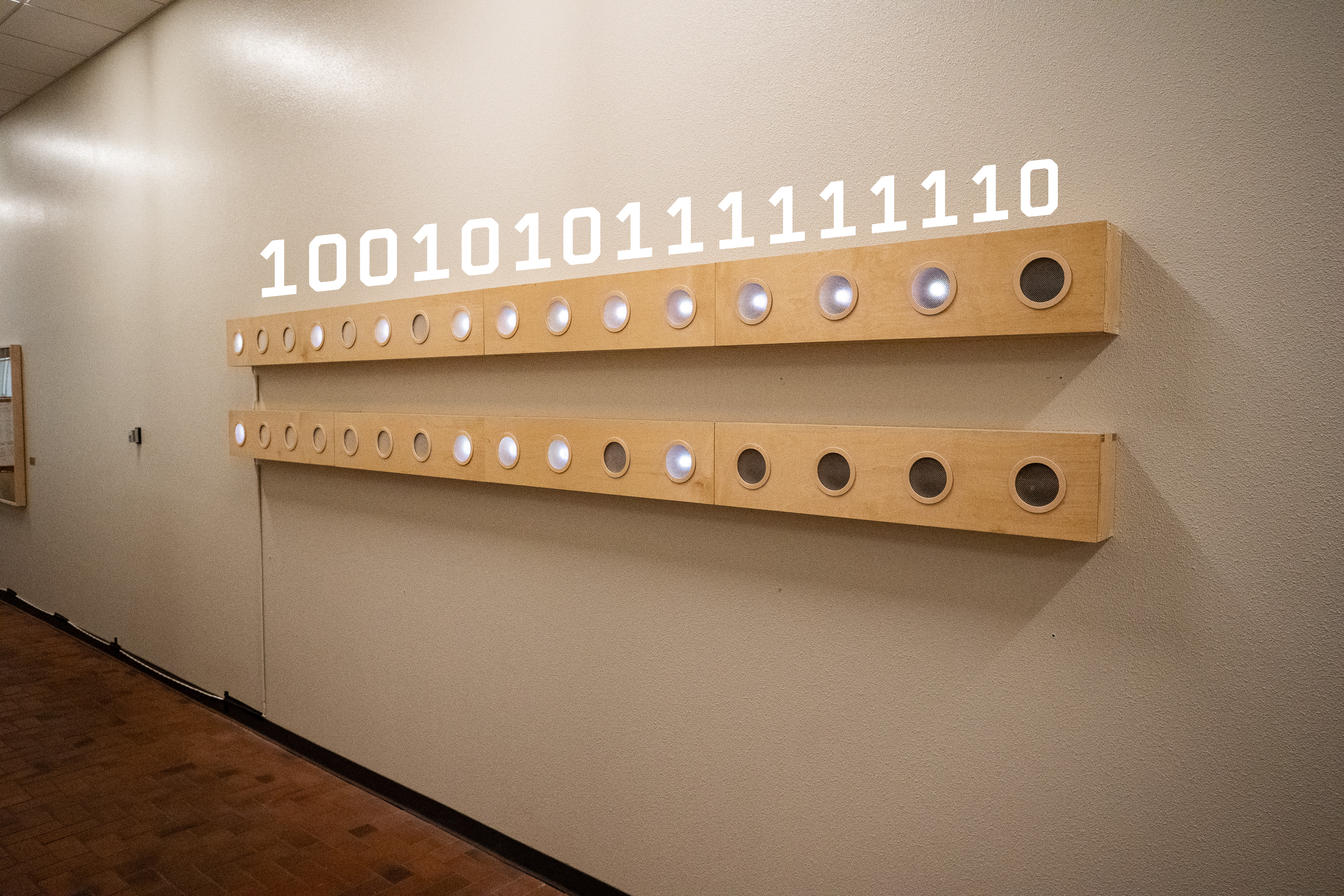
Binary Number Visualized in LEDs
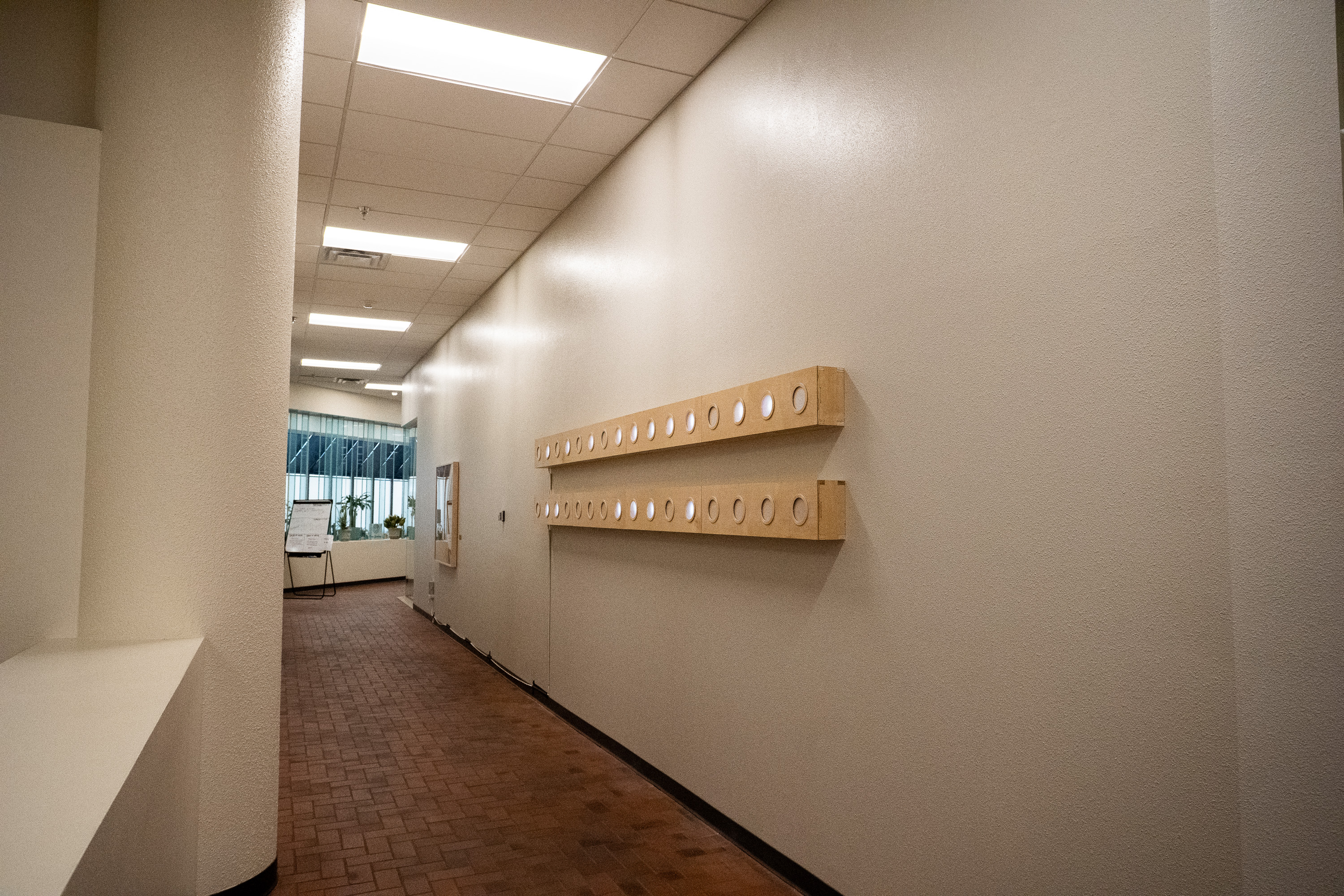
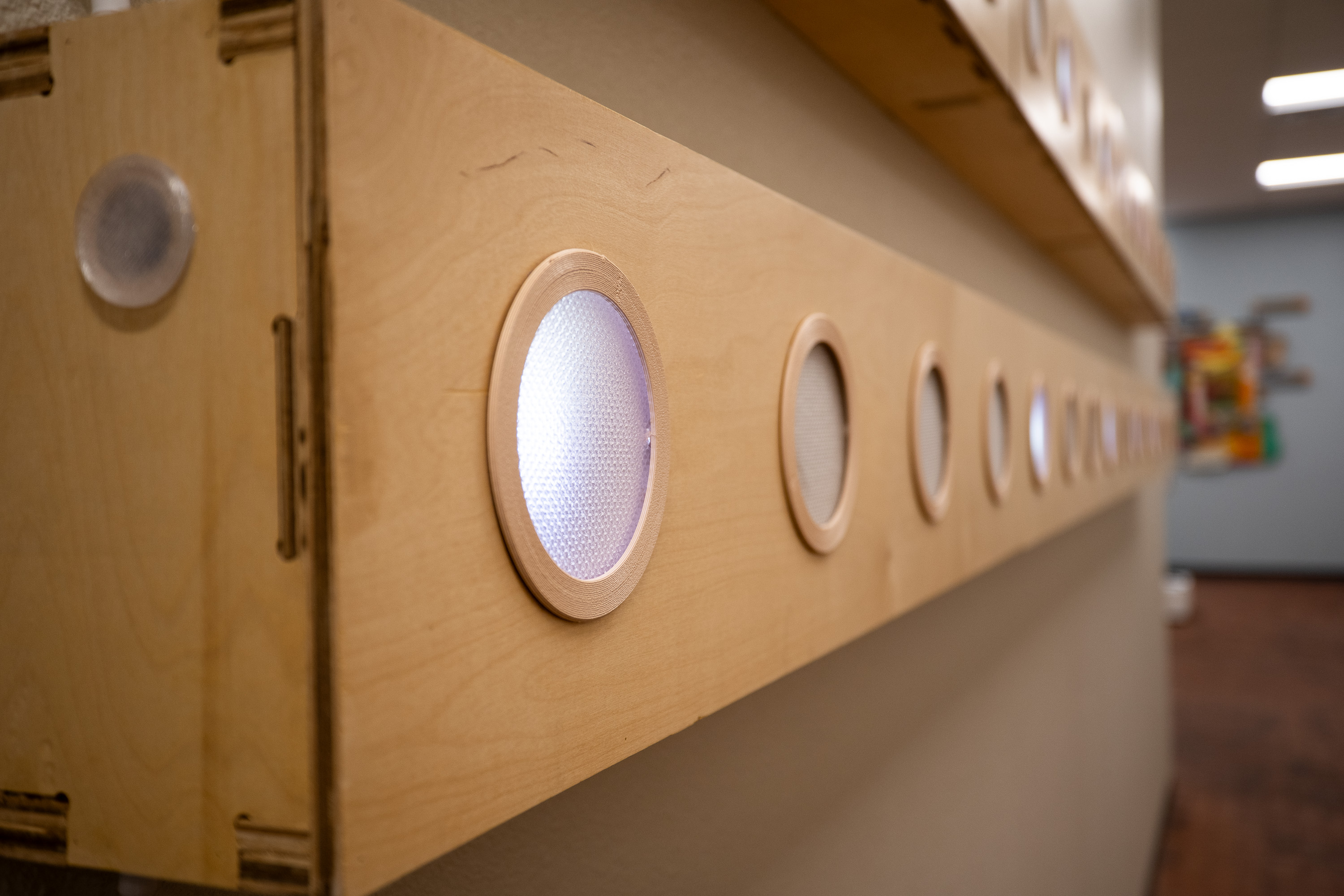
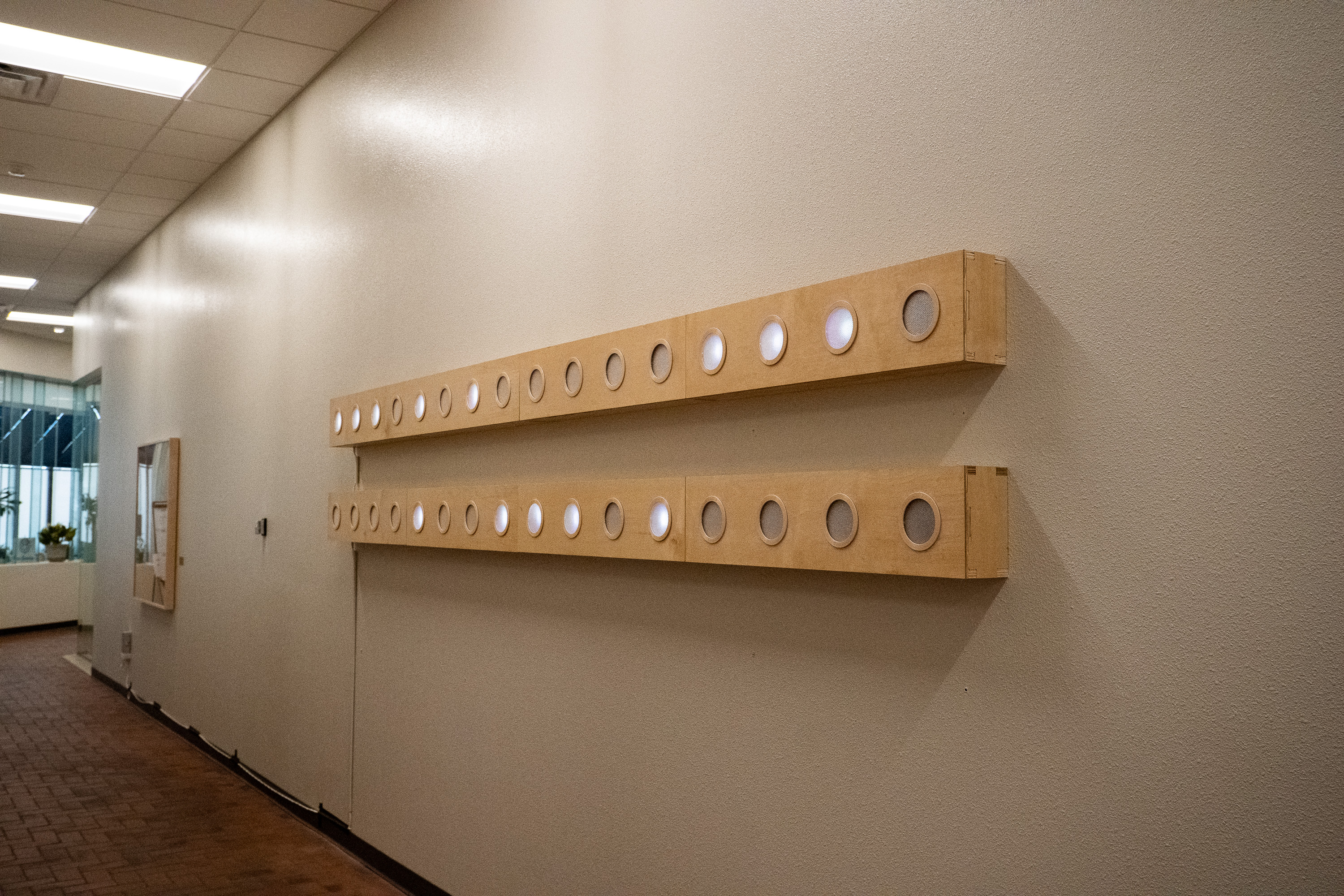
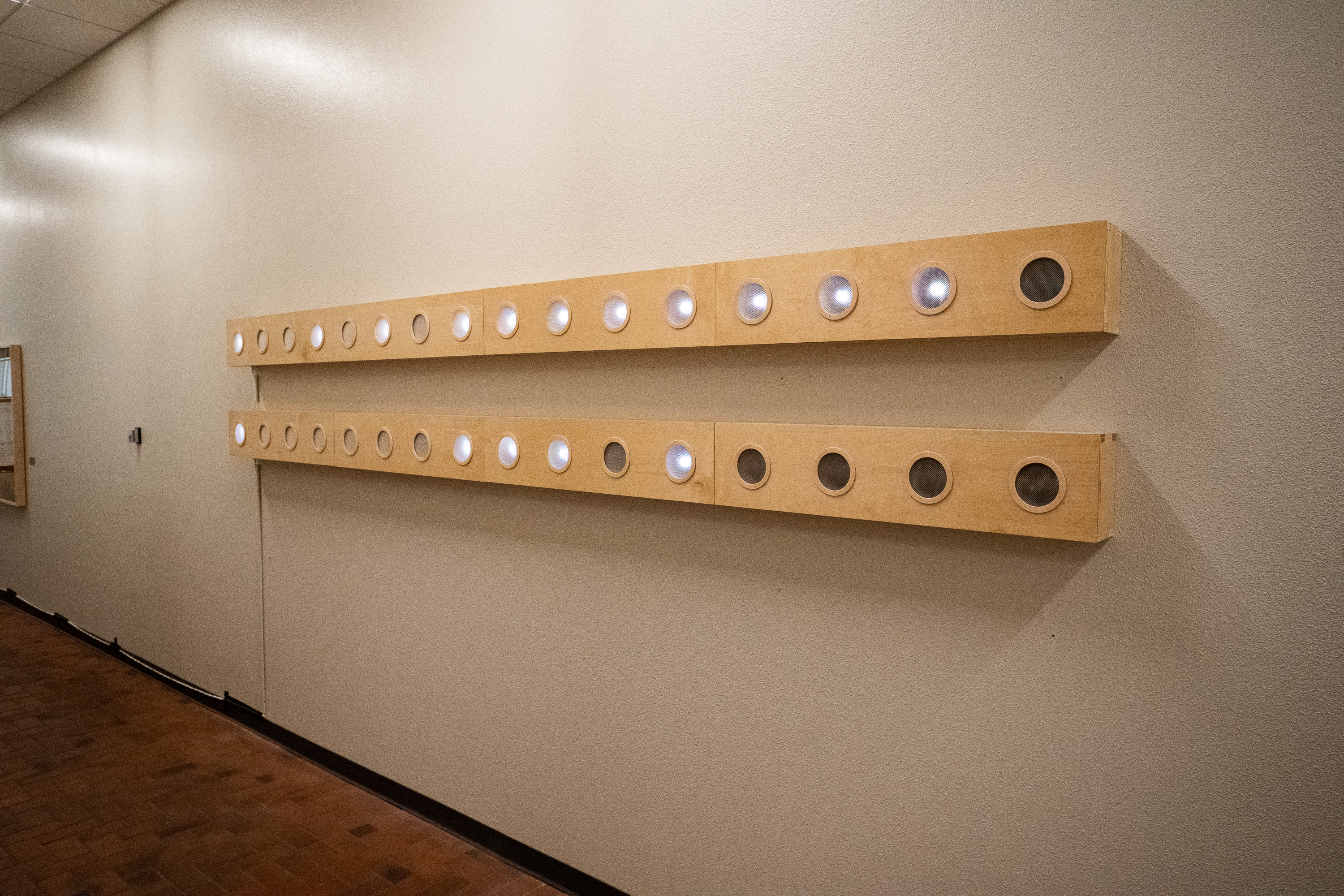
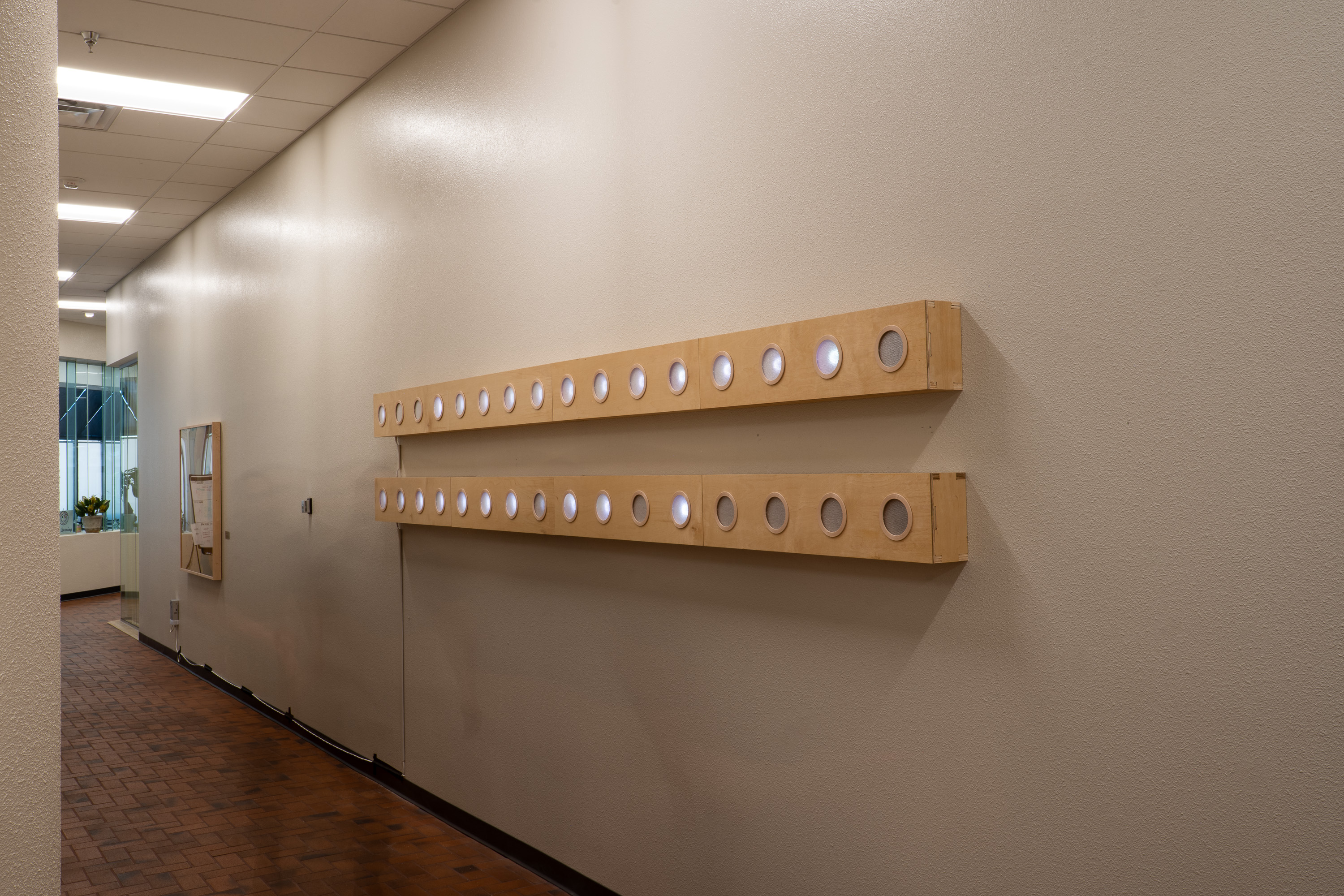
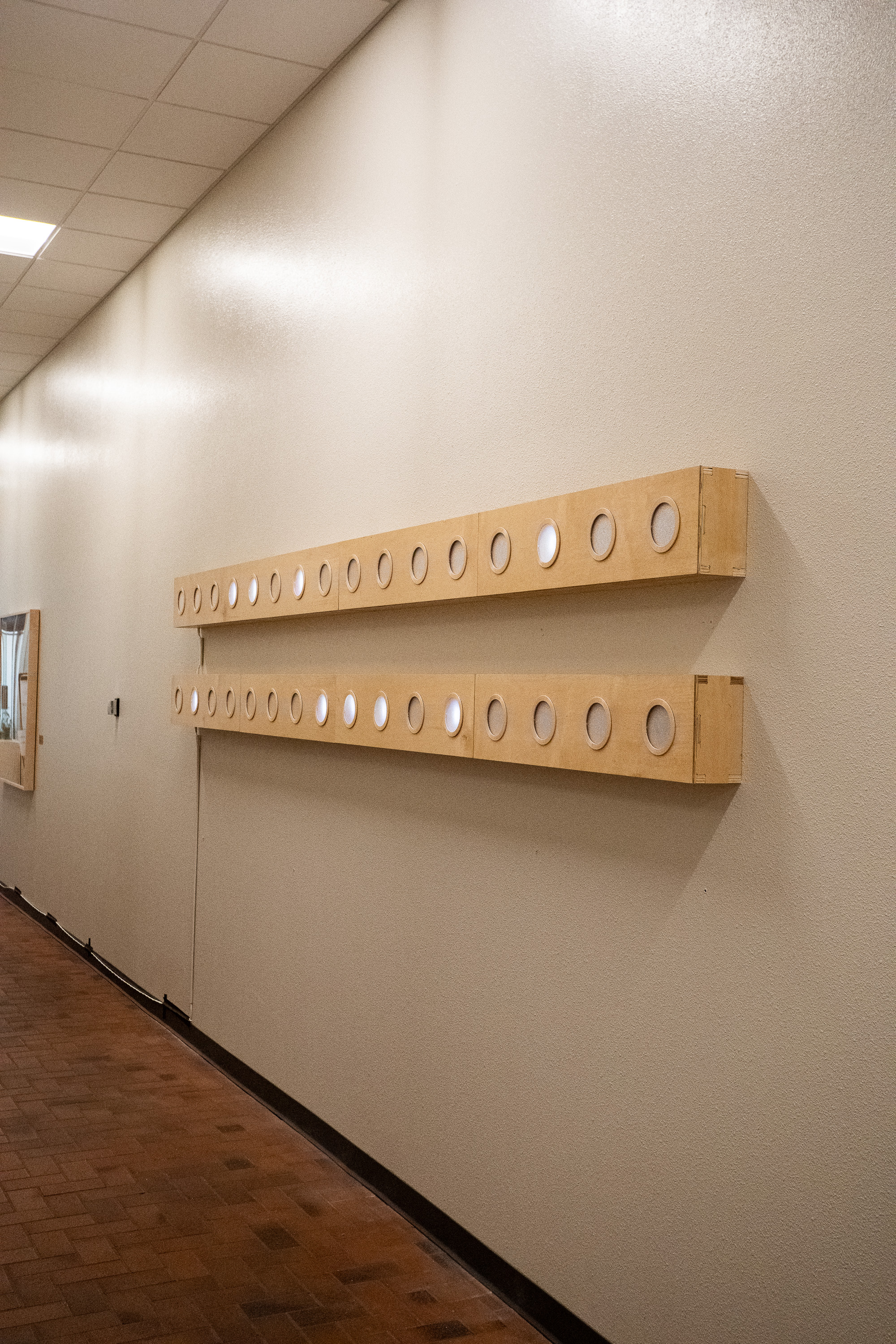
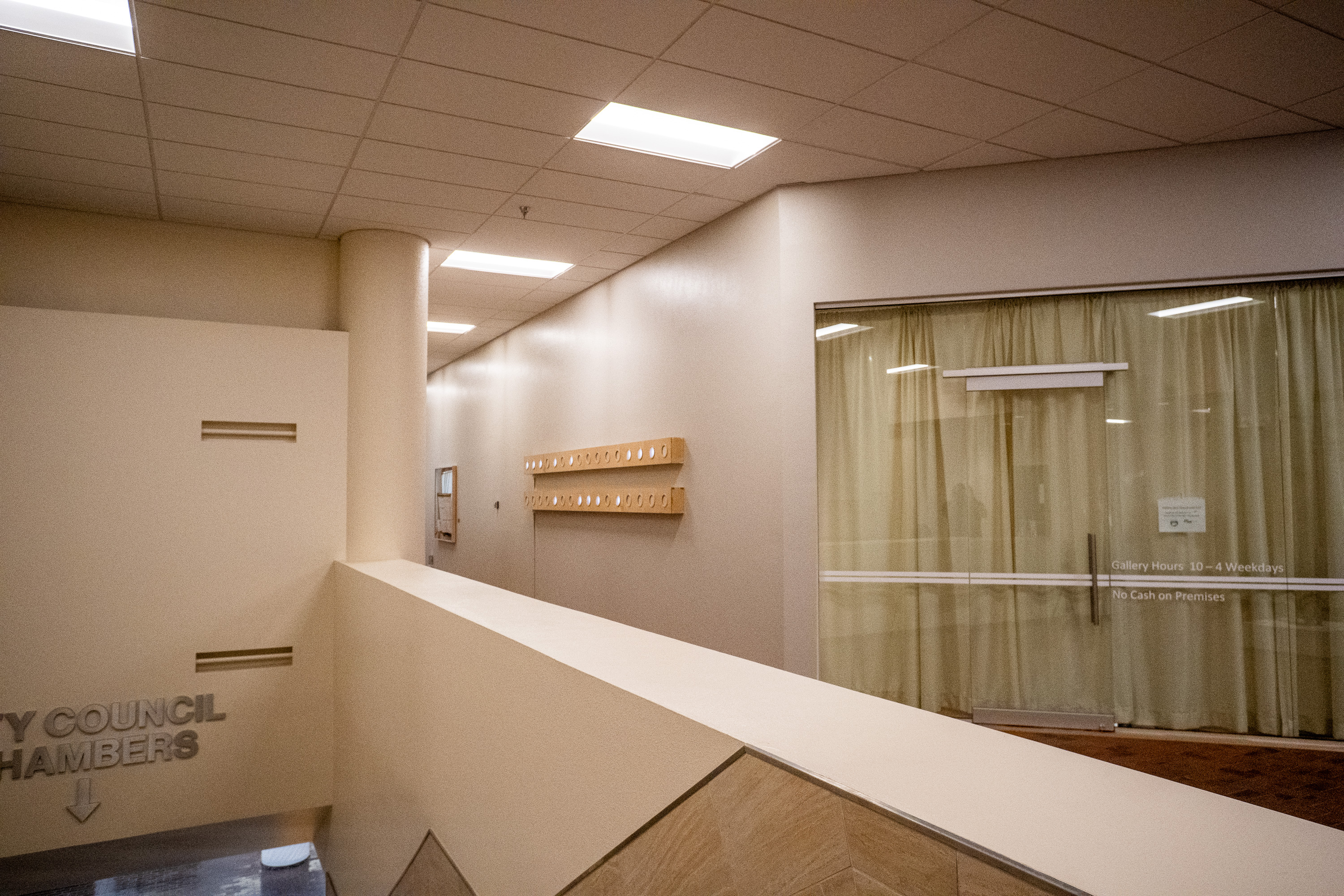

Counter 4, base 8 (octal) visualizer
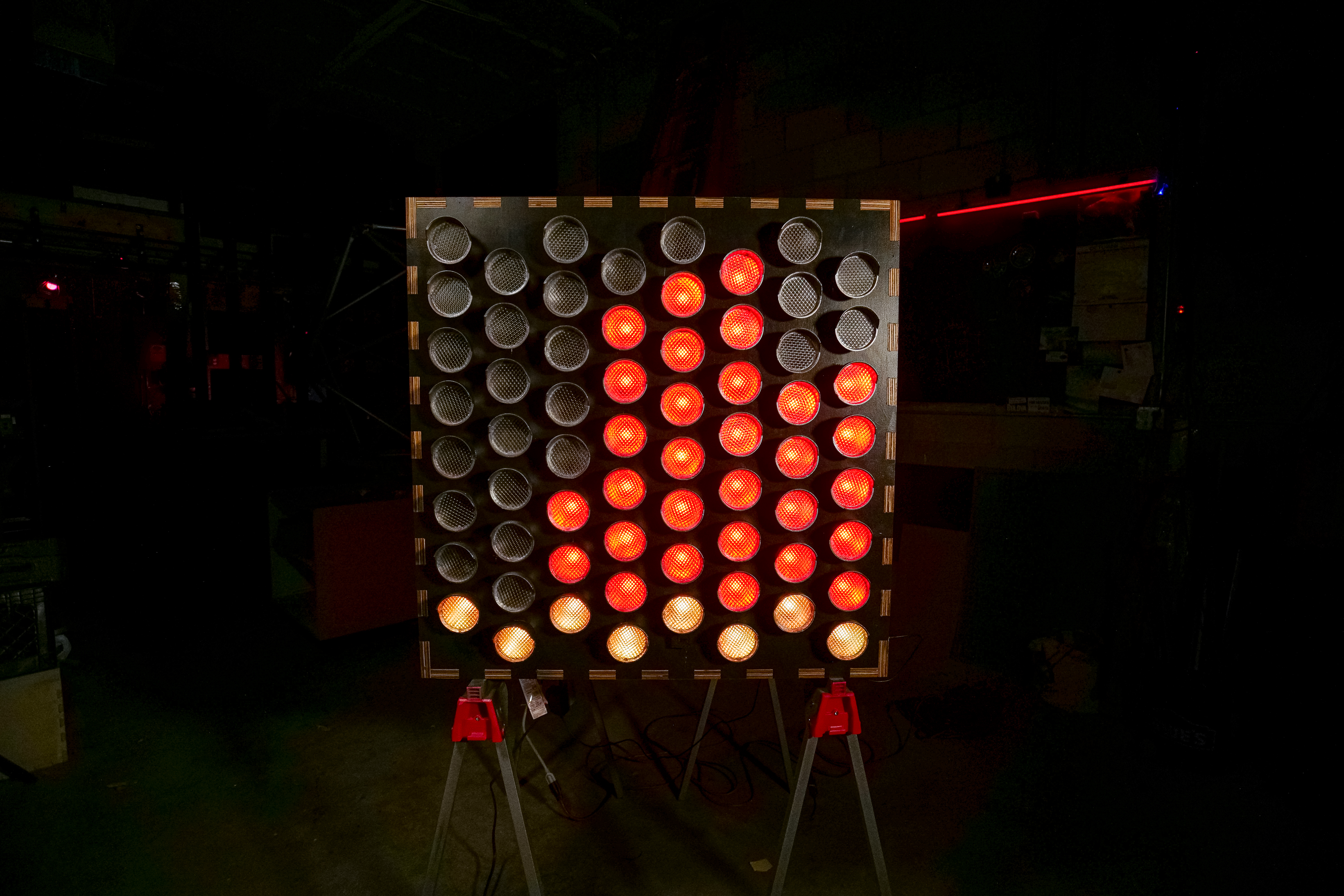


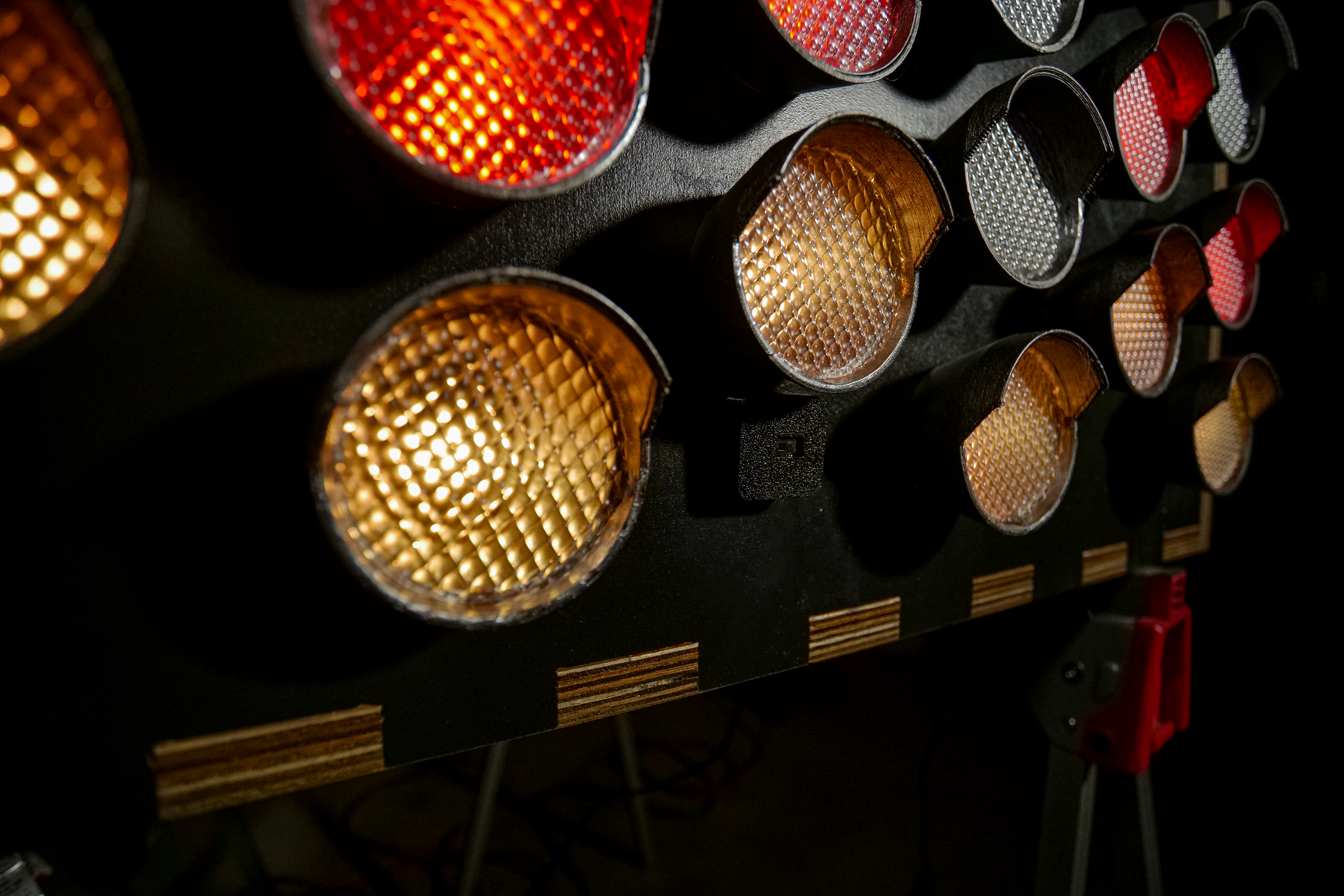
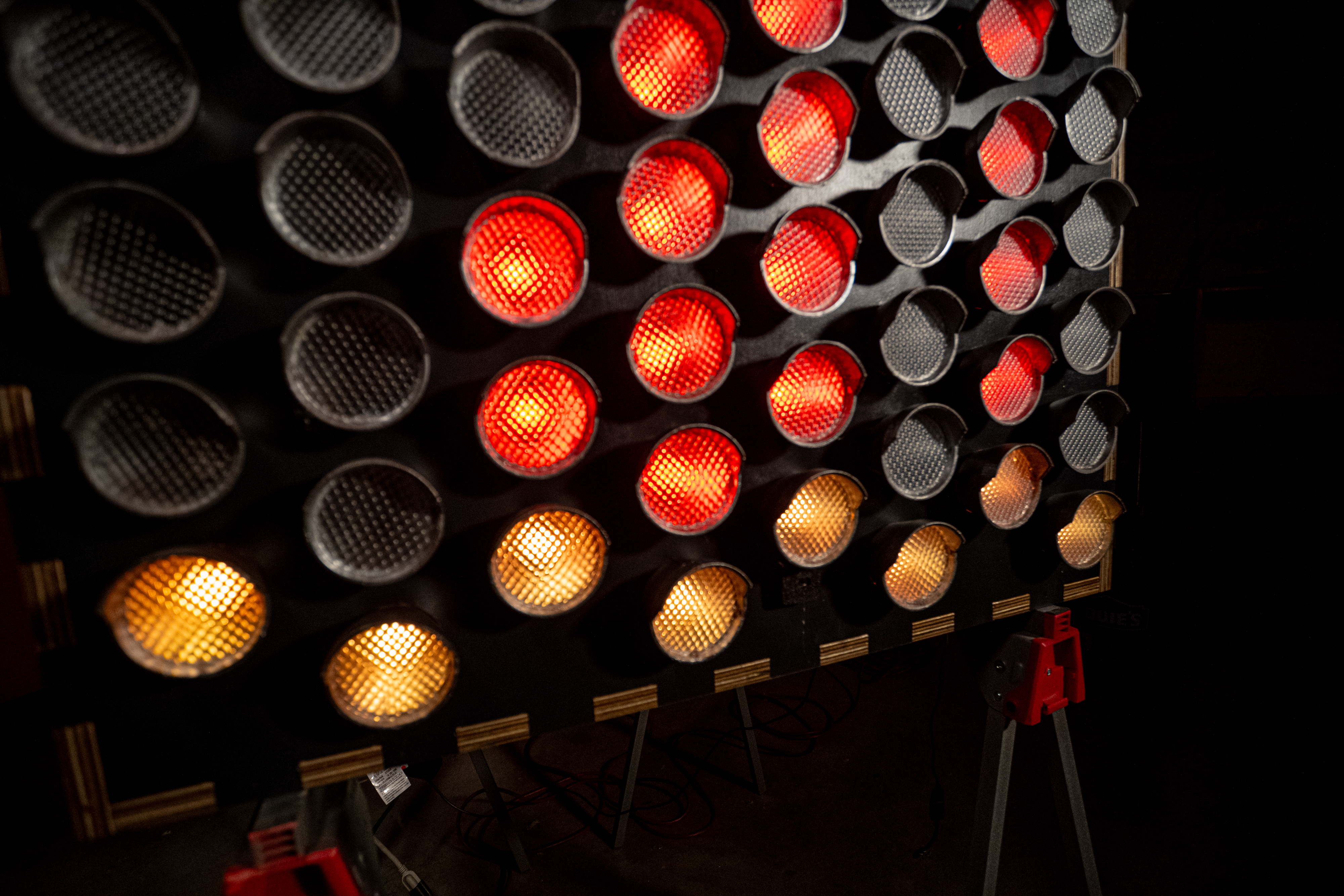
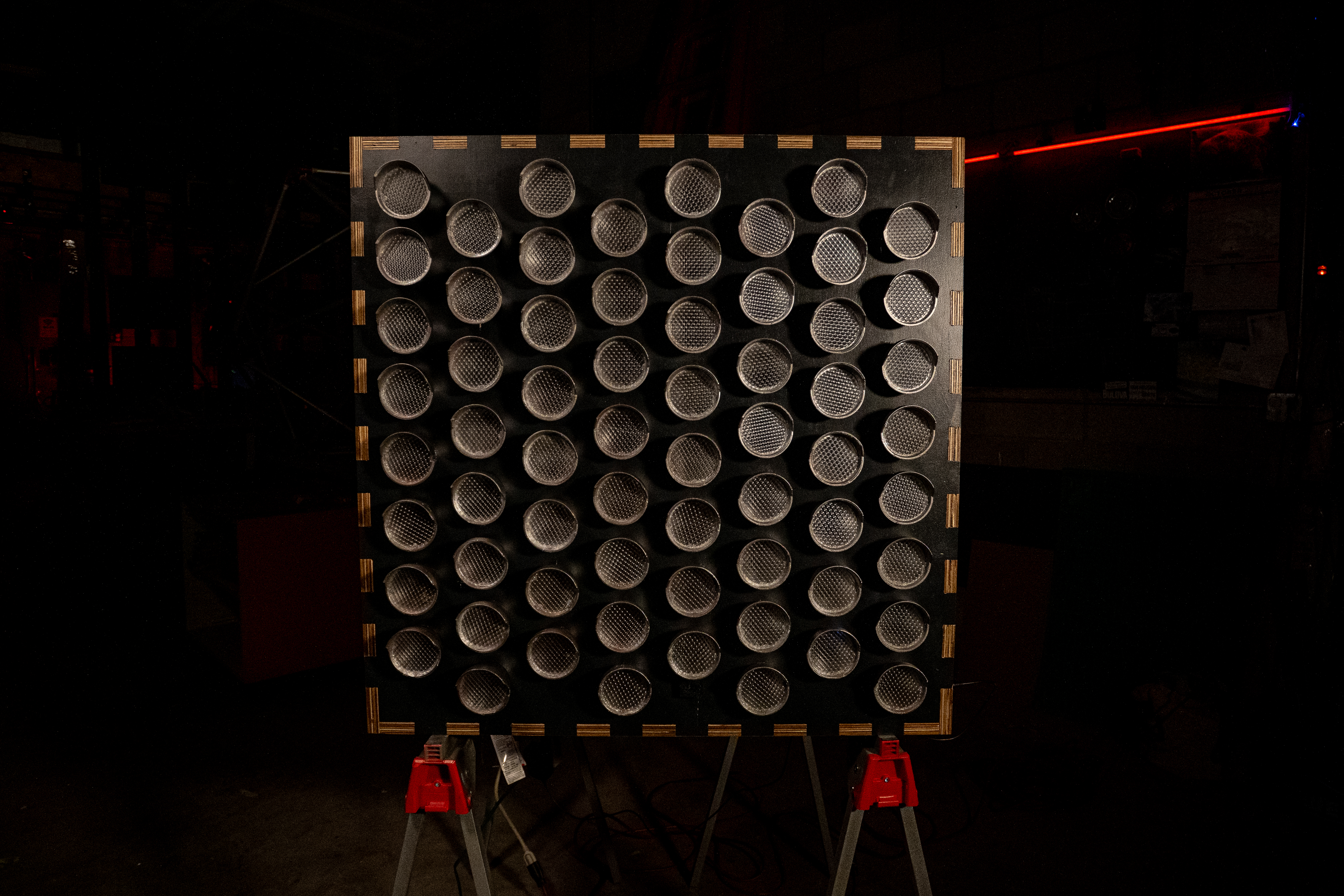
Watch my presentation here:
Sinks (2023-) are a series of thermal sculptures exploring ‘heat’ as both a material and an active process that occurs through space.
Resistive heaters spread warmth onto a steel sheet. A simple control system drives the heaters through a preset pattern, allowing the energy to concentrate then diffuse through the metal.
A thermal camera witnesses these events and helps to project the thermal data back onto the steel sheet, revisualizing an otherwise ethereal event.
Viewers are invited to touch the metal and feel the temperature gradient across the materials. This interaction allows for a transfer of energy between the viewer and the piece. A “warm” feeling is a transfer from Sink to viewer, “cold” the other way around. If you touch long enough, you will see a mark left behind.
As viewers cross in front of the camera, their thermal signature is also projected onto the sheets. This projection will happen even if they are not directly touching the metal.
Sinks exist to facilitate an energy transfer, part of a series of simple actions that form a system of visualization. This steel experiences a thermal rhythm that exists just beyond our visual perception. Technology helps to revisualize that rhythm into something we can witness, while also revealing our connection to the system. It is both sponge and mirror- a tool to convert energy and to release it, a platform for irreversible choreographies.
This concept relies on the use of infrared thermal imaging, a technology not usually encountered in such a public facing way. It is a very useful, if niche, tool, but thermal imaging carries a burden through its uses in security, surveillance, and modern weaponry. It is subject to lawsuits and regulations.
While we might’ve gotten used to infrared thermometers during this last pandemic, it’s rare to see a full thermal print of one’s self.
Sink 2 was on display for the CURRENTS 826 Winter/Spring show, Resonances, until April 9, 2023.
Sink 12 was on display in ABQ, NM, at 516ARTS for Southwest Contemporary’s 2023 12 New Mexico Artists to Know Now.
Sink 13 was part of my solo show, Exchanges, at Old Walls Gallery in Albuquerque.
Sink 17 will be on view in Santa Fe for the 2024 Currents New Media Festival, June 14-23, 2024.
Resistive heaters spread warmth onto a steel sheet. A simple control system drives the heaters through a preset pattern, allowing the energy to concentrate then diffuse through the metal.
A thermal camera witnesses these events and helps to project the thermal data back onto the steel sheet, revisualizing an otherwise ethereal event.
Viewers are invited to touch the metal and feel the temperature gradient across the materials. This interaction allows for a transfer of energy between the viewer and the piece. A “warm” feeling is a transfer from Sink to viewer, “cold” the other way around. If you touch long enough, you will see a mark left behind.
As viewers cross in front of the camera, their thermal signature is also projected onto the sheets. This projection will happen even if they are not directly touching the metal.
Sinks exist to facilitate an energy transfer, part of a series of simple actions that form a system of visualization. This steel experiences a thermal rhythm that exists just beyond our visual perception. Technology helps to revisualize that rhythm into something we can witness, while also revealing our connection to the system. It is both sponge and mirror- a tool to convert energy and to release it, a platform for irreversible choreographies.
This concept relies on the use of infrared thermal imaging, a technology not usually encountered in such a public facing way. It is a very useful, if niche, tool, but thermal imaging carries a burden through its uses in security, surveillance, and modern weaponry. It is subject to lawsuits and regulations.
While we might’ve gotten used to infrared thermometers during this last pandemic, it’s rare to see a full thermal print of one’s self.
Sink 2 was on display for the CURRENTS 826 Winter/Spring show, Resonances, until April 9, 2023.
Sink 12 was on display in ABQ, NM, at 516ARTS for Southwest Contemporary’s 2023 12 New Mexico Artists to Know Now.
Sink 13 was part of my solo show, Exchanges, at Old Walls Gallery in Albuquerque.
Sink 17 will be on view in Santa Fe for the 2024 Currents New Media Festival, June 14-23, 2024.
Sink 17 @ the 2024 Currents New Media Festival
![]()
![]()
![]()
![]()
![]()
![]()
![]()
![]()
![]()
![]()
Sink 17 Concept Render
![]()
Sink 13 @ Old Walls Gallery in Albuquerque
![]()
![]()
![]()
![]()
![]()
![]()
![]()
Sink 12 @ 516ARTS in Albuquerque
![]()
![]()
![]()
![]()
![]()
![]()
![]()
![]()
Sink 2 @ CURRENTS826 Gallery in Santa Fe
![]()
![]()
![]()
![]()
![]()
![]()
![]()
![]()
![]()
![]()
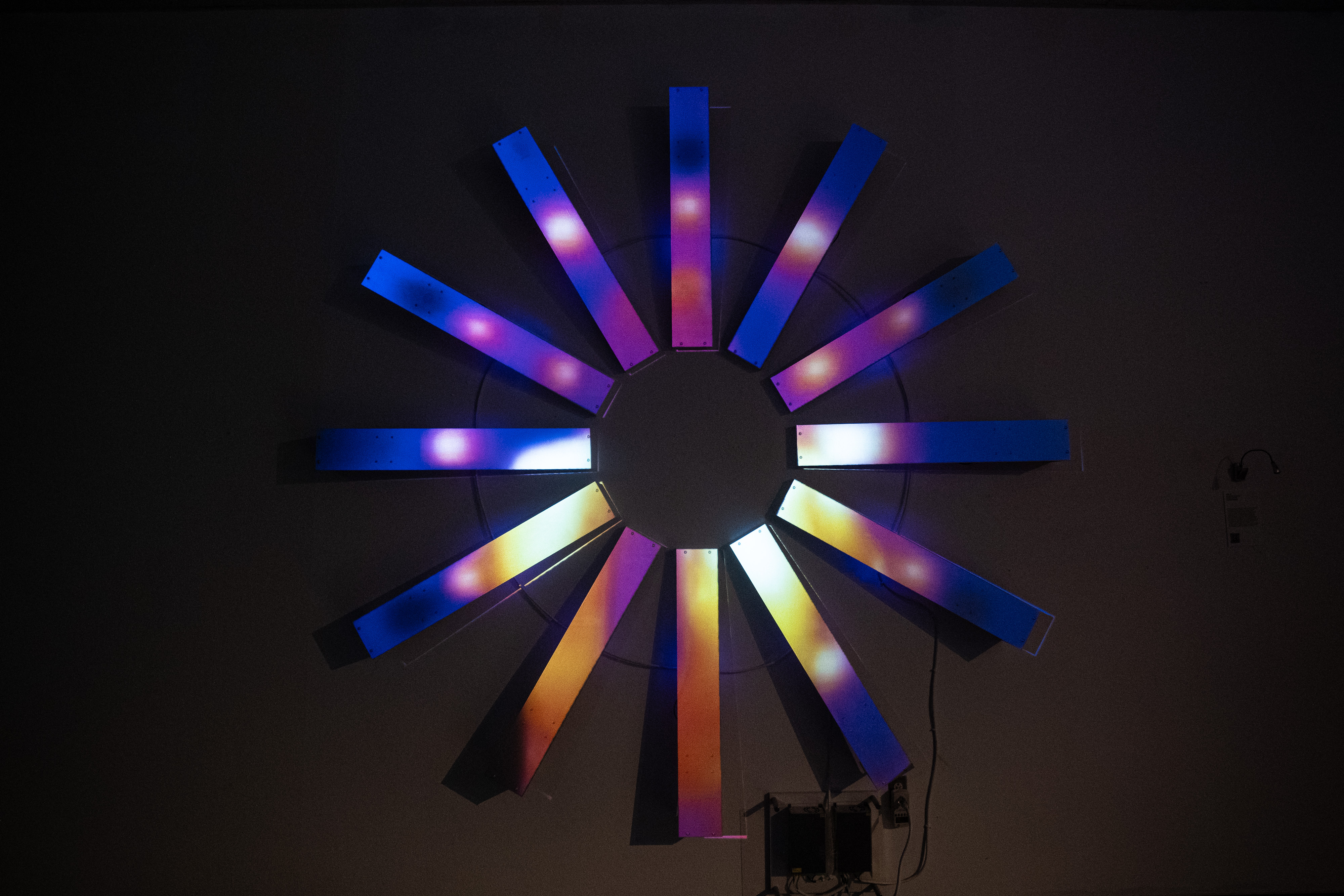
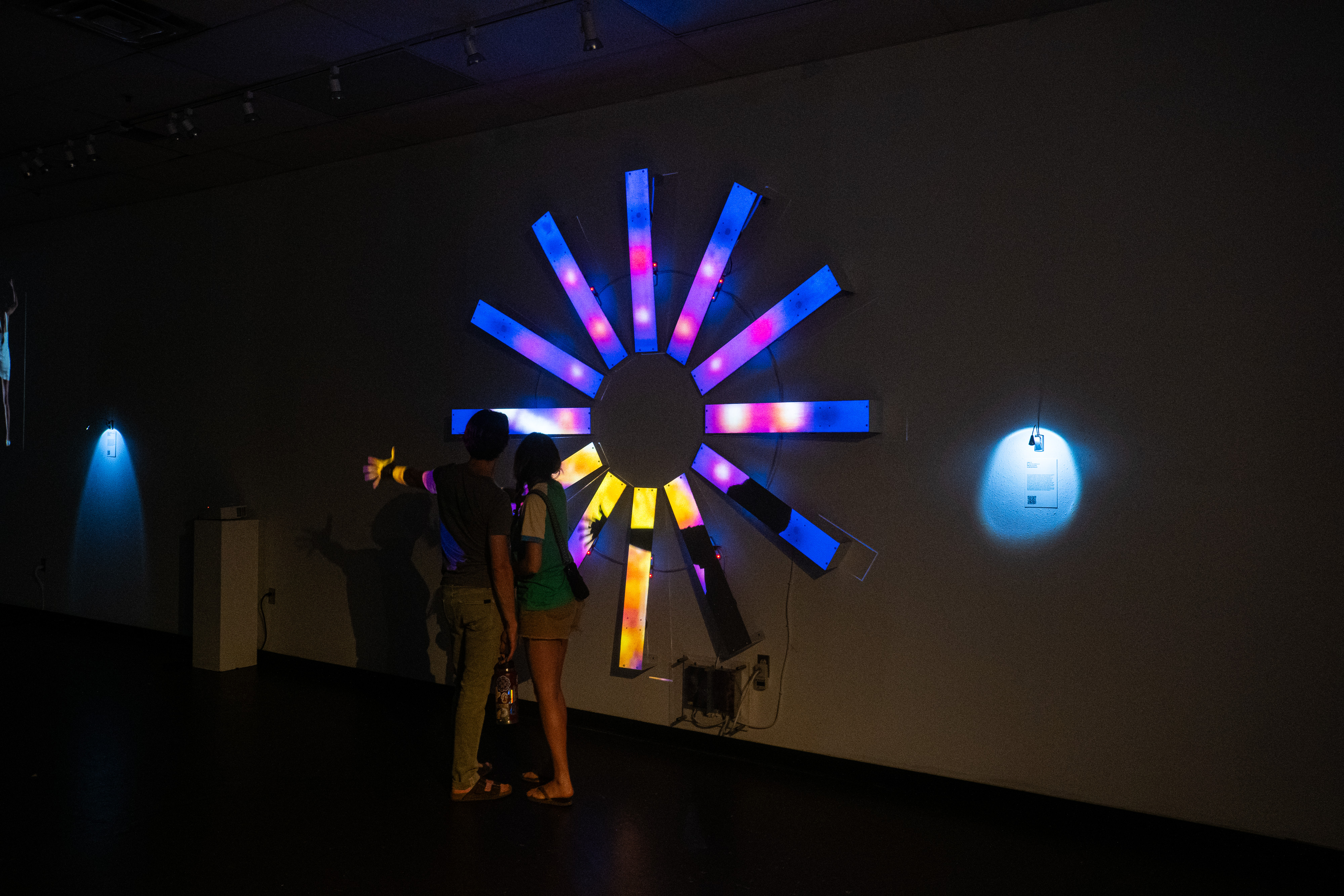
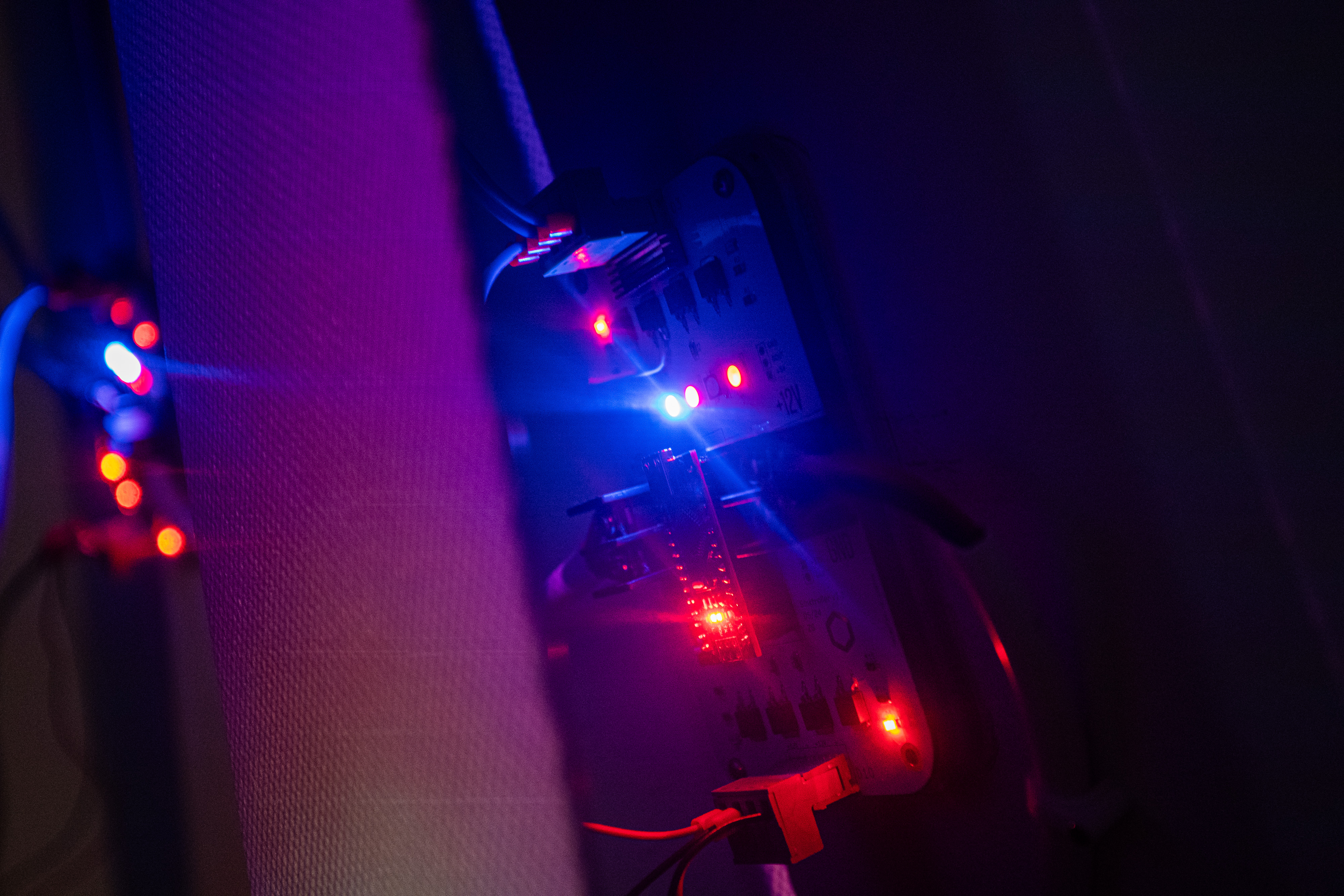
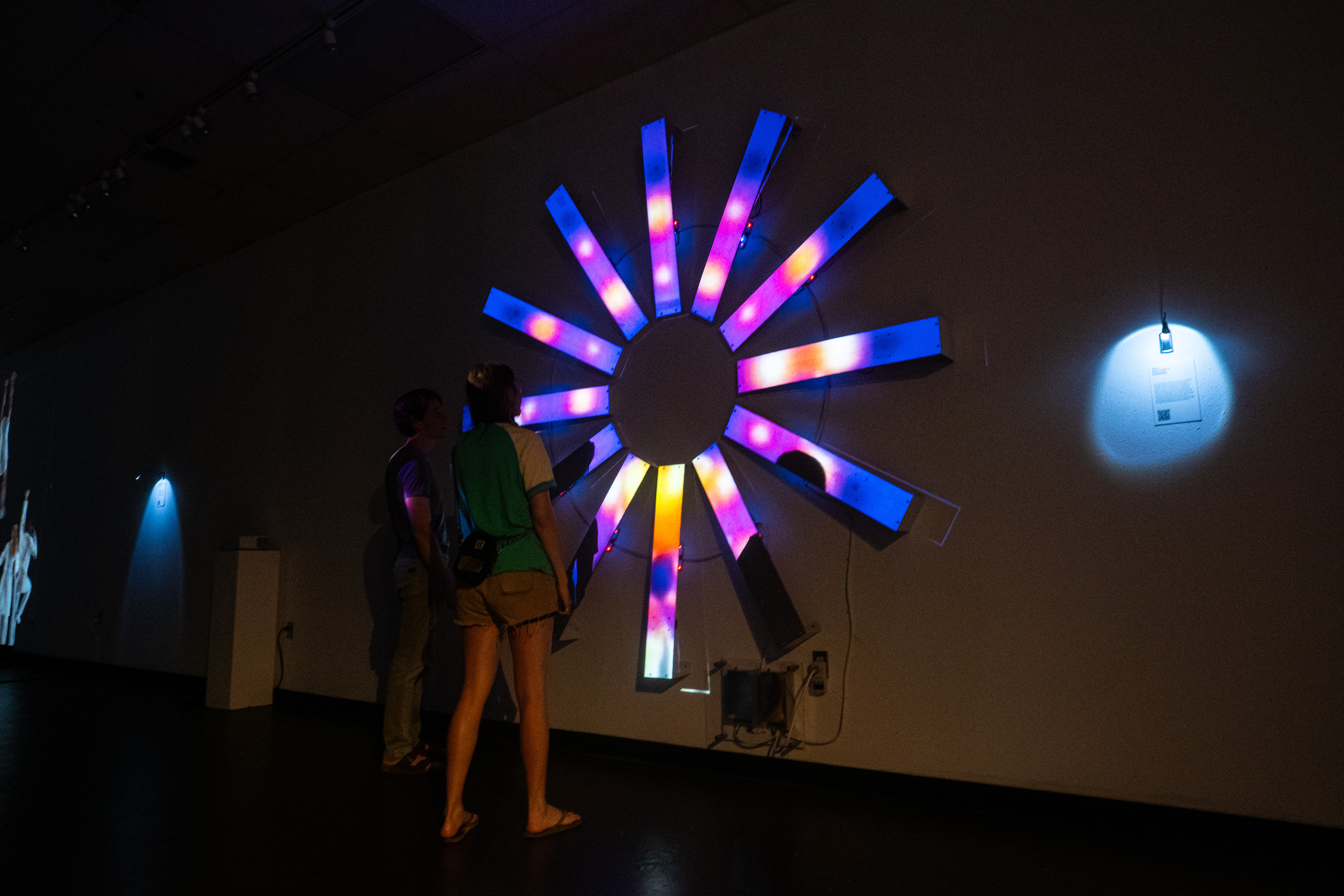
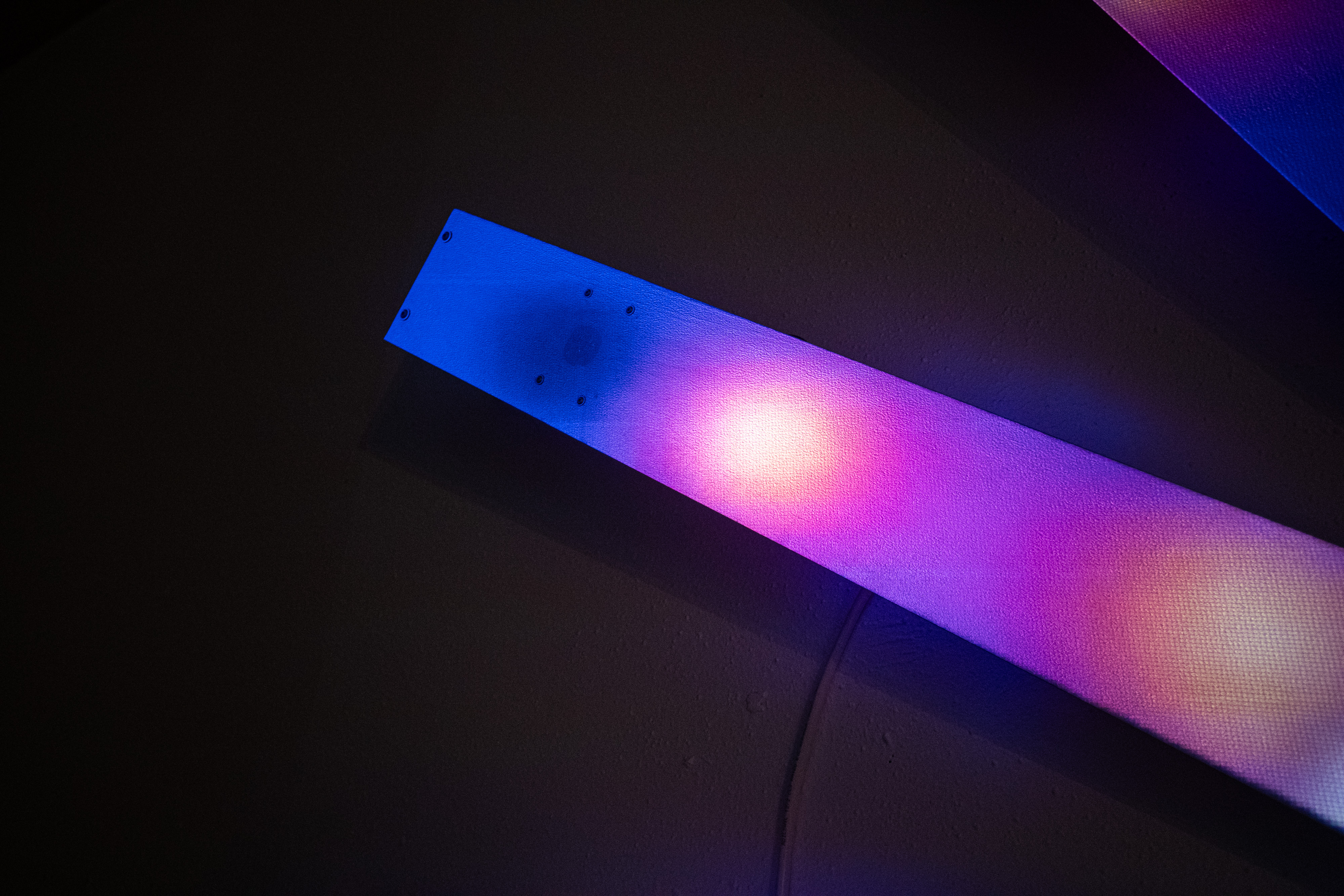
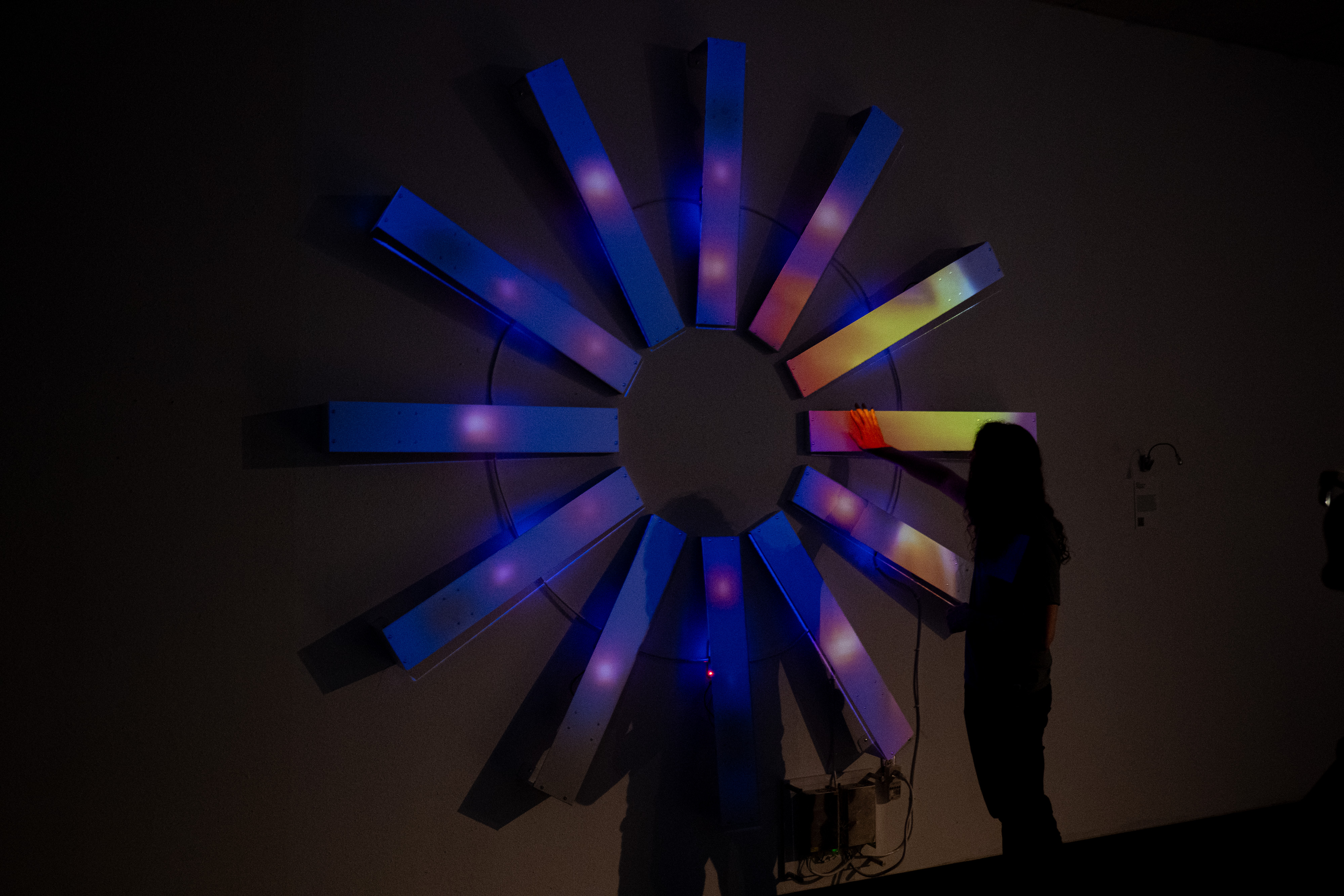
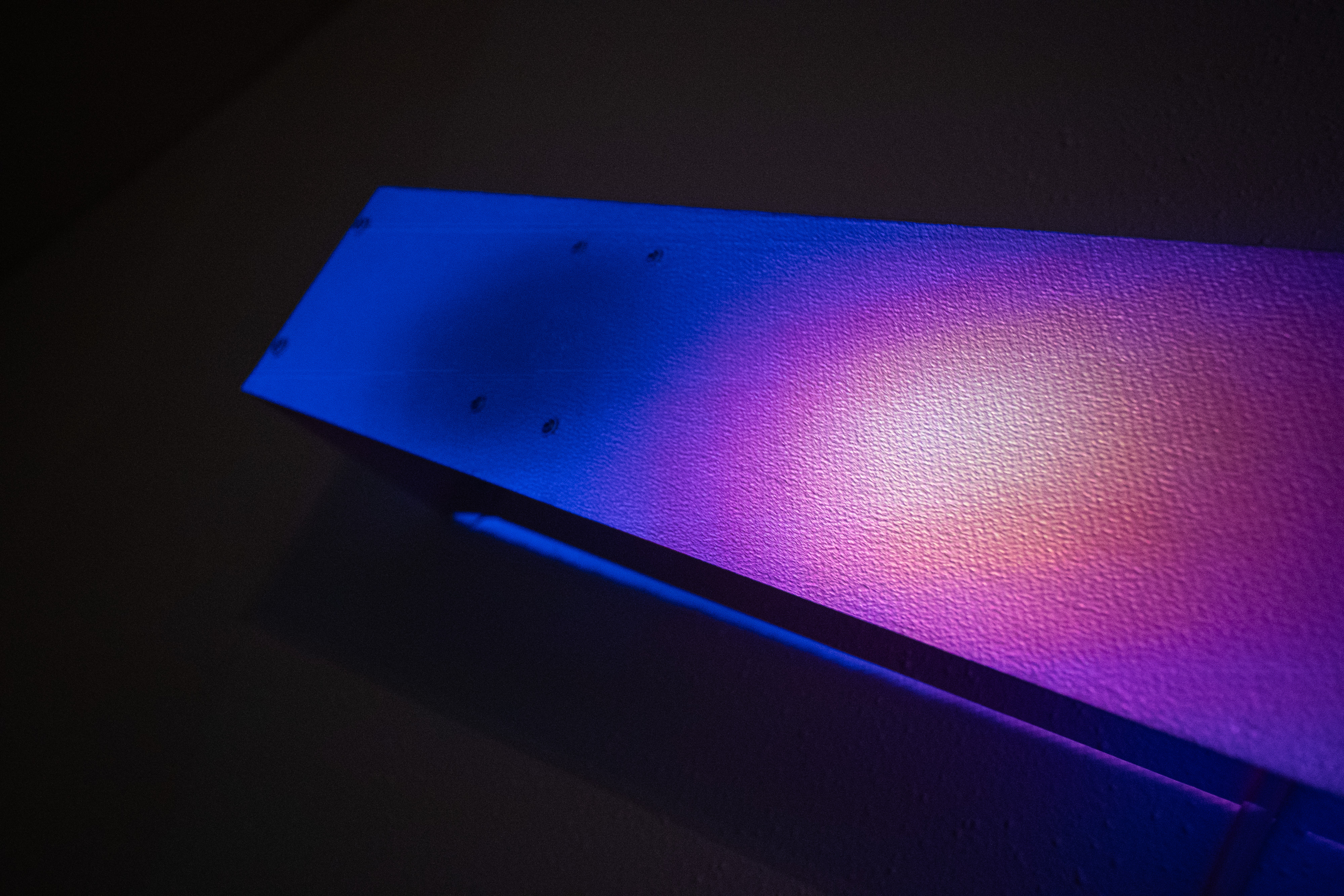

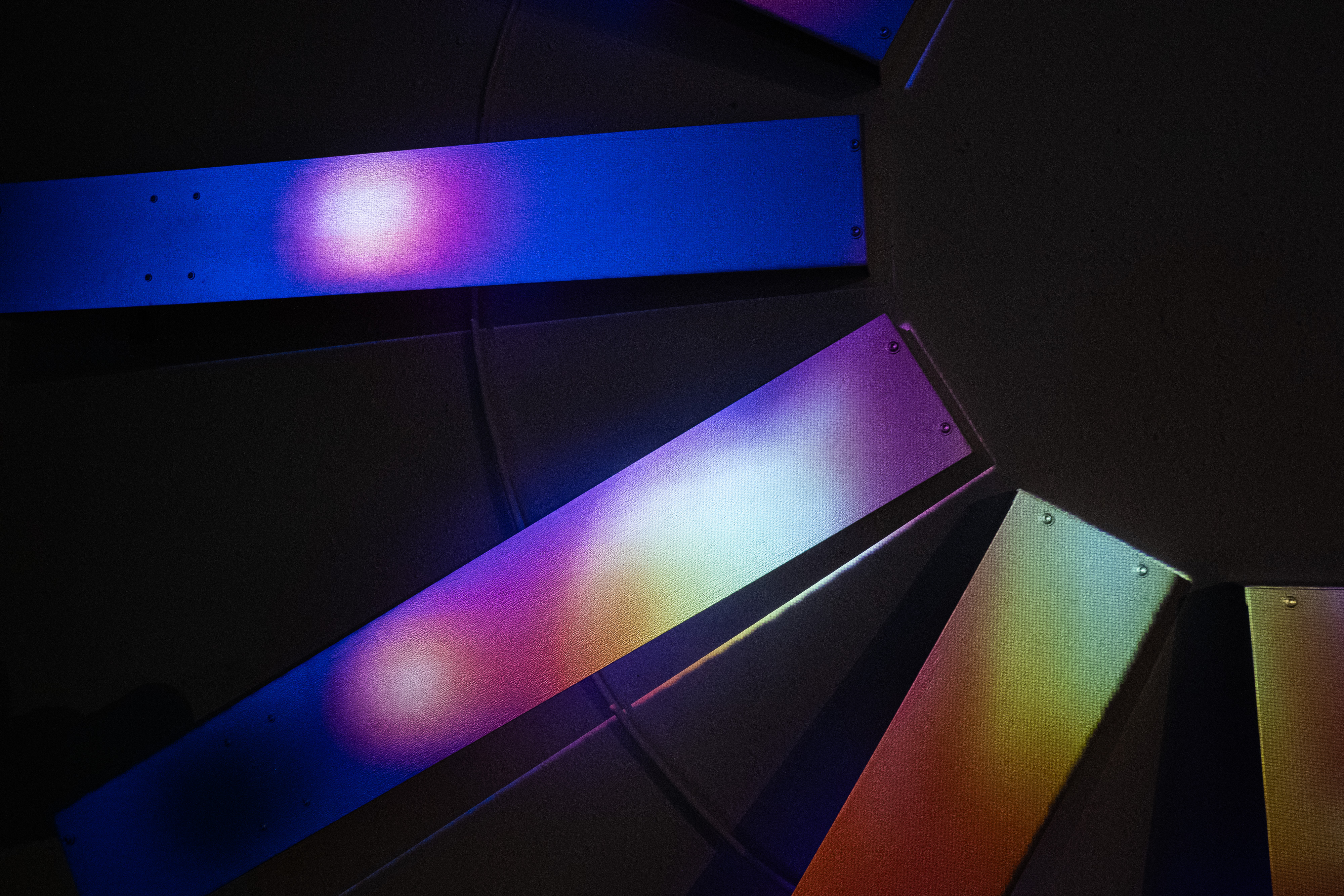

Sink 17 Concept Render
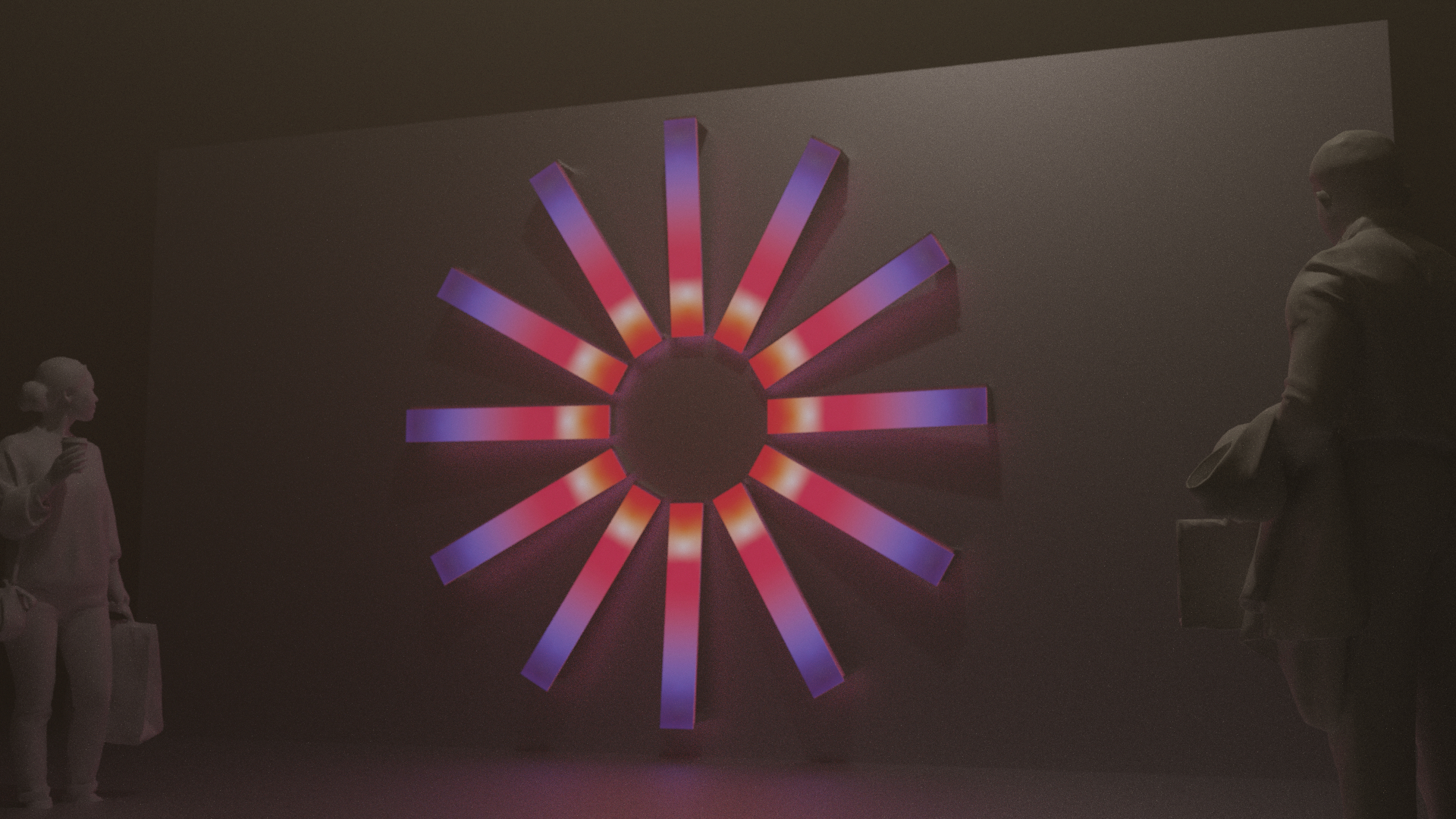
Sink 13 @ Old Walls Gallery in Albuquerque



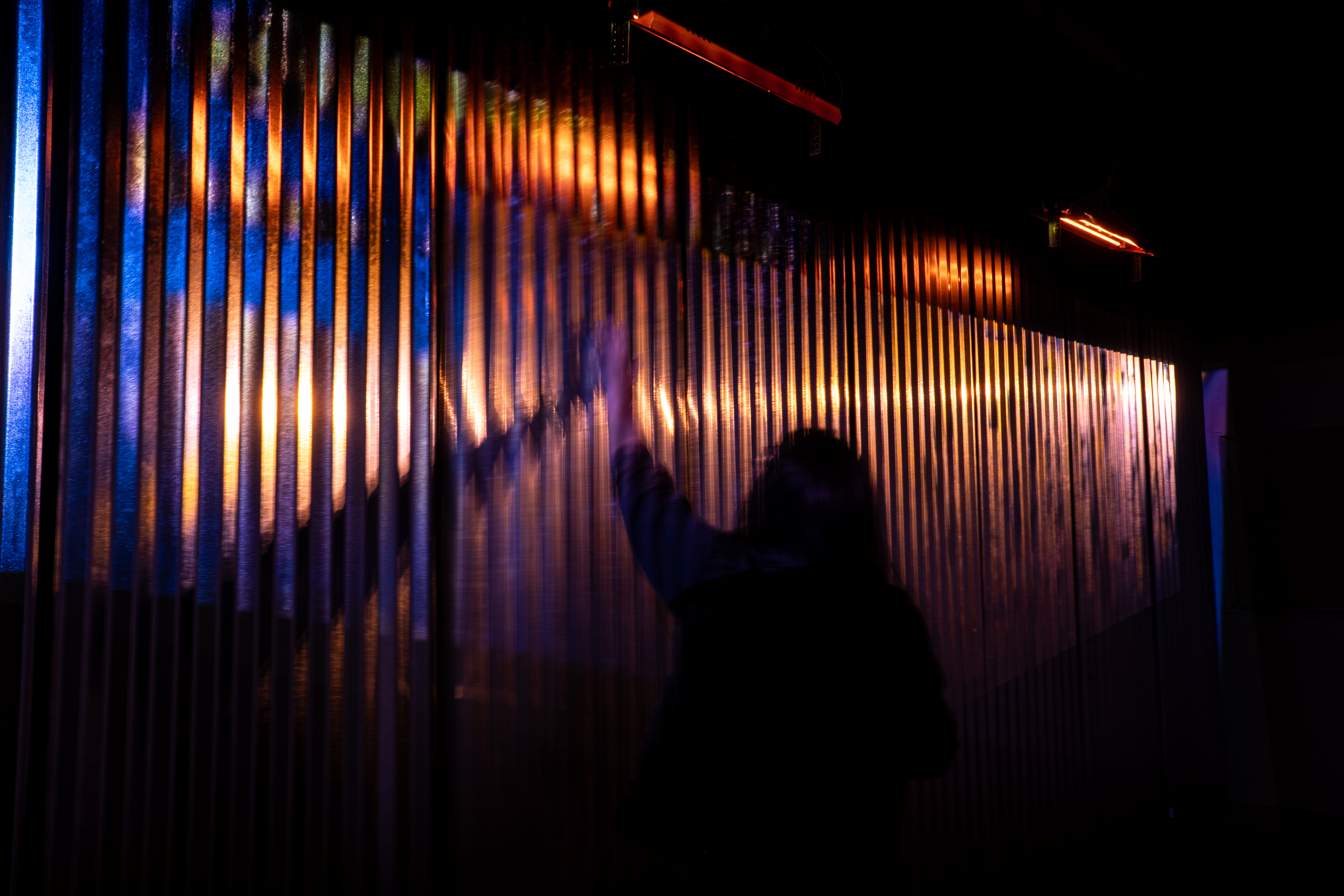
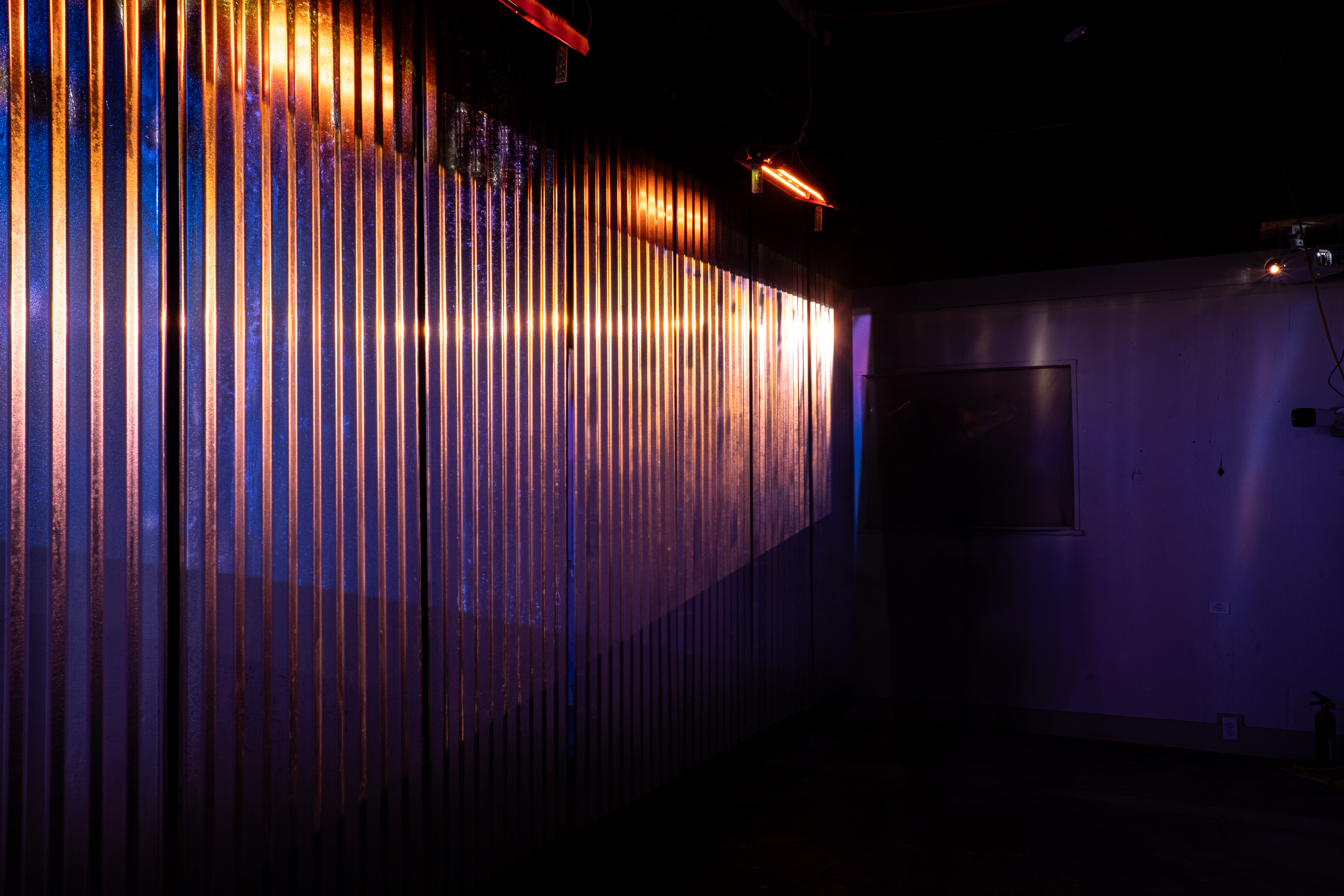

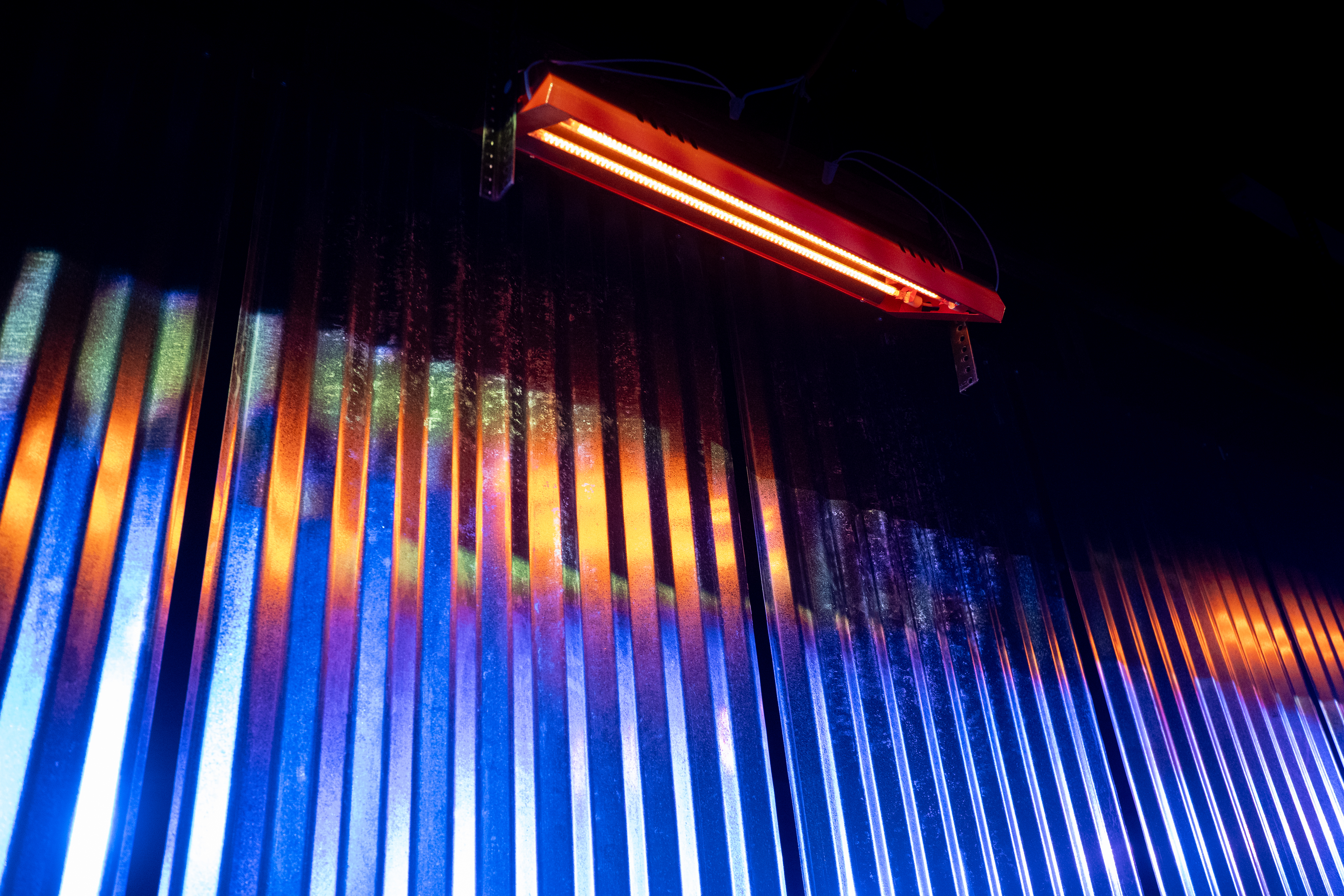
Sink 12 @ 516ARTS in Albuquerque
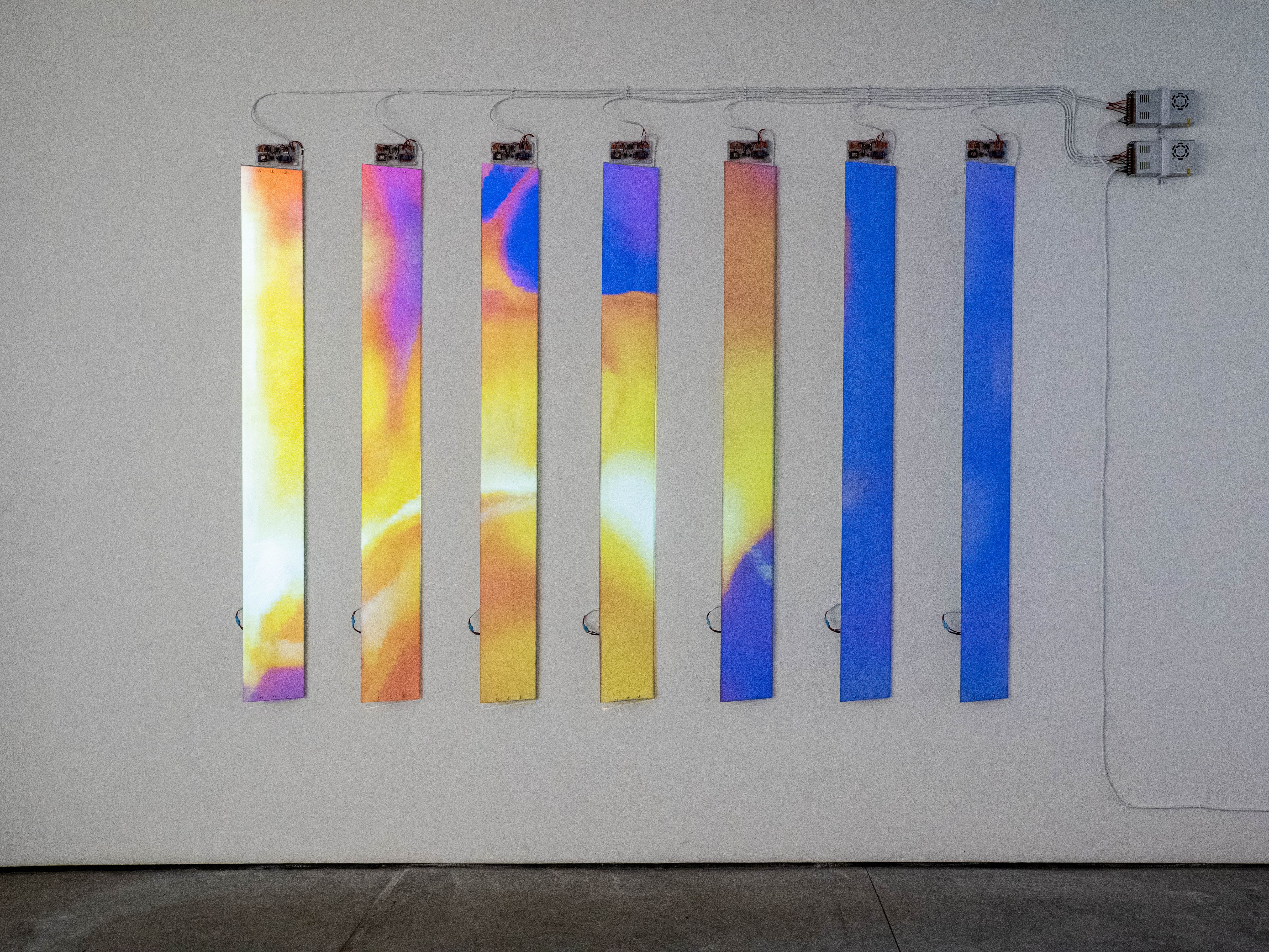
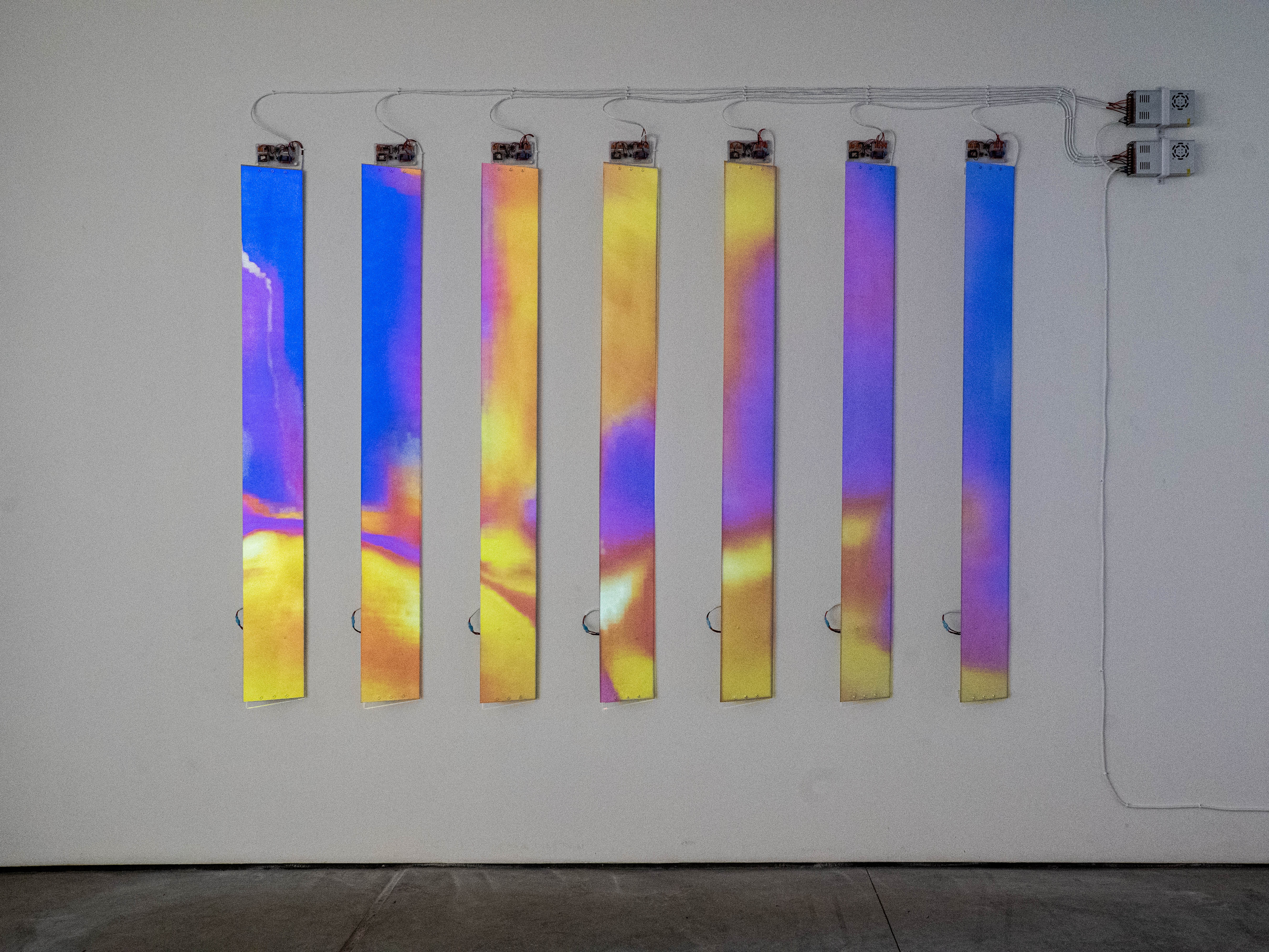


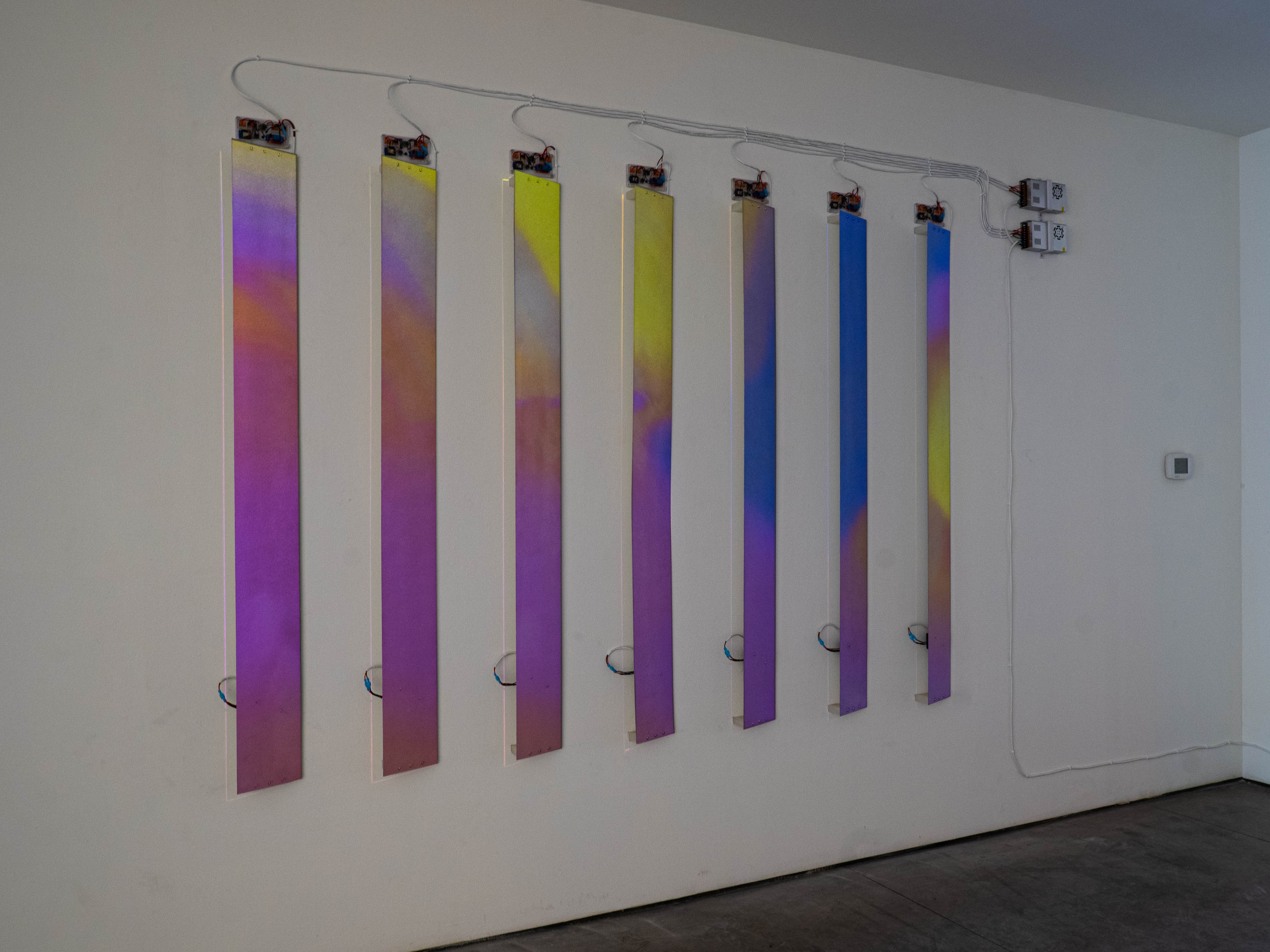
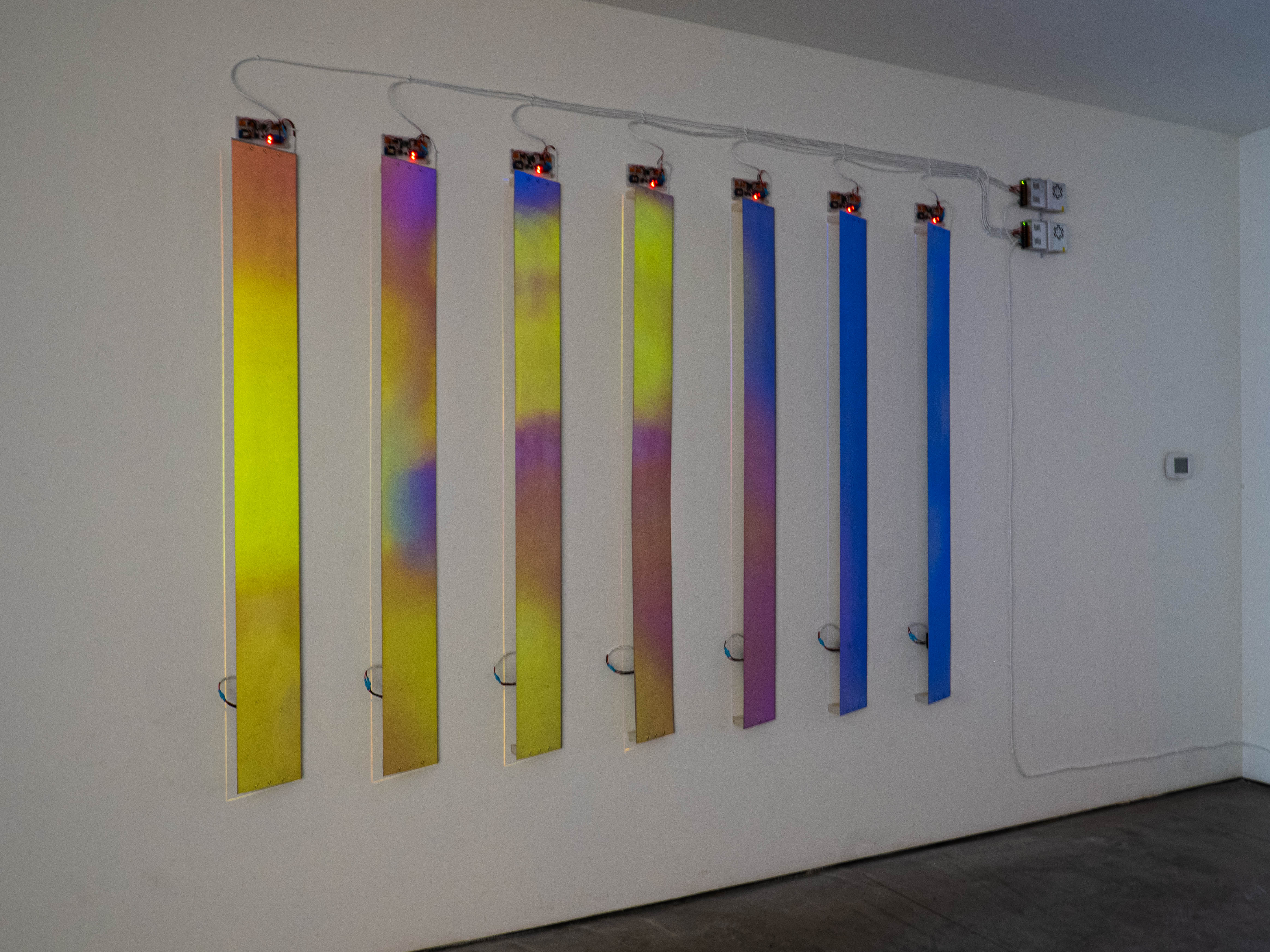

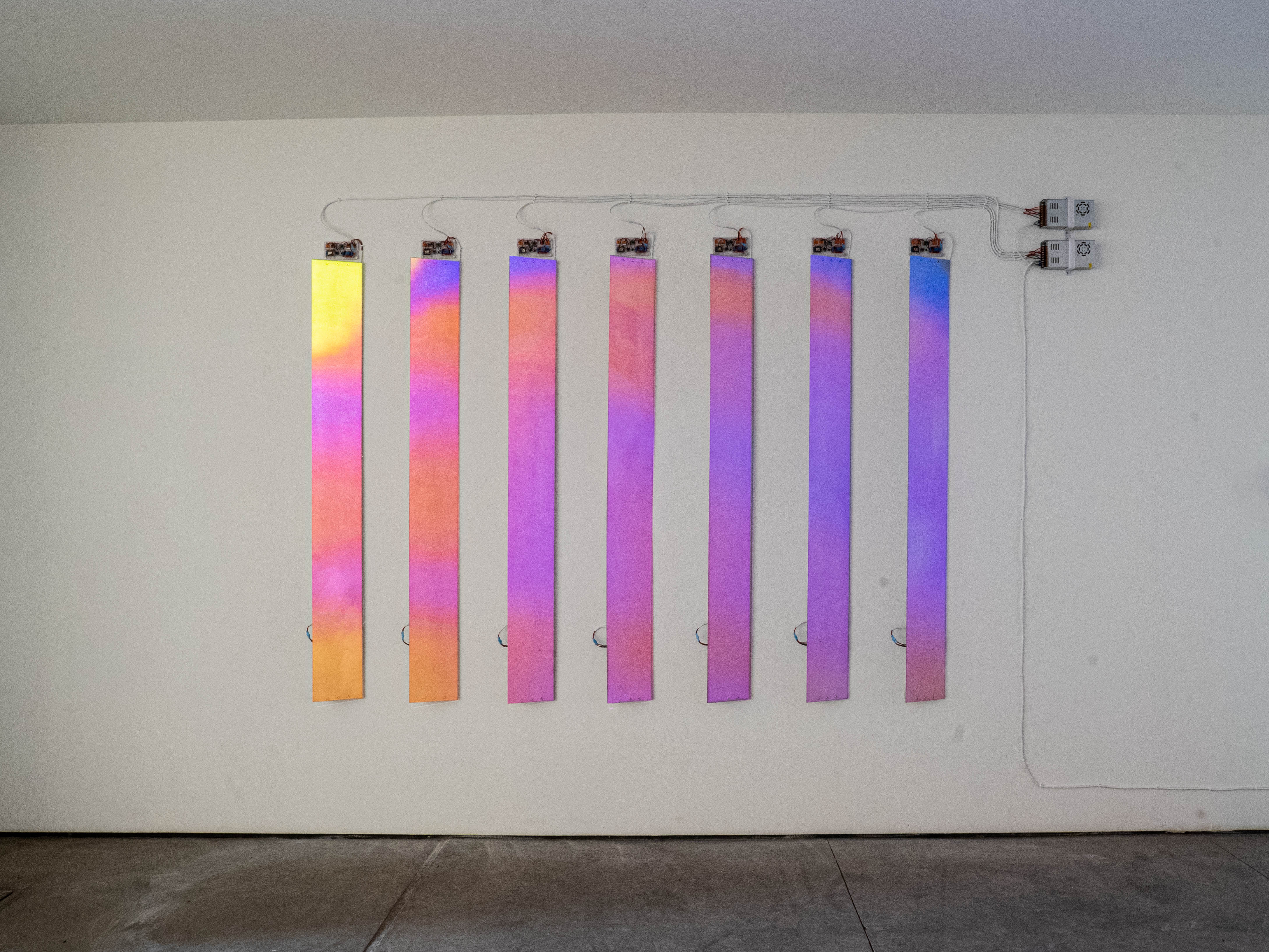
Sink 2 @ CURRENTS826 Gallery in Santa Fe
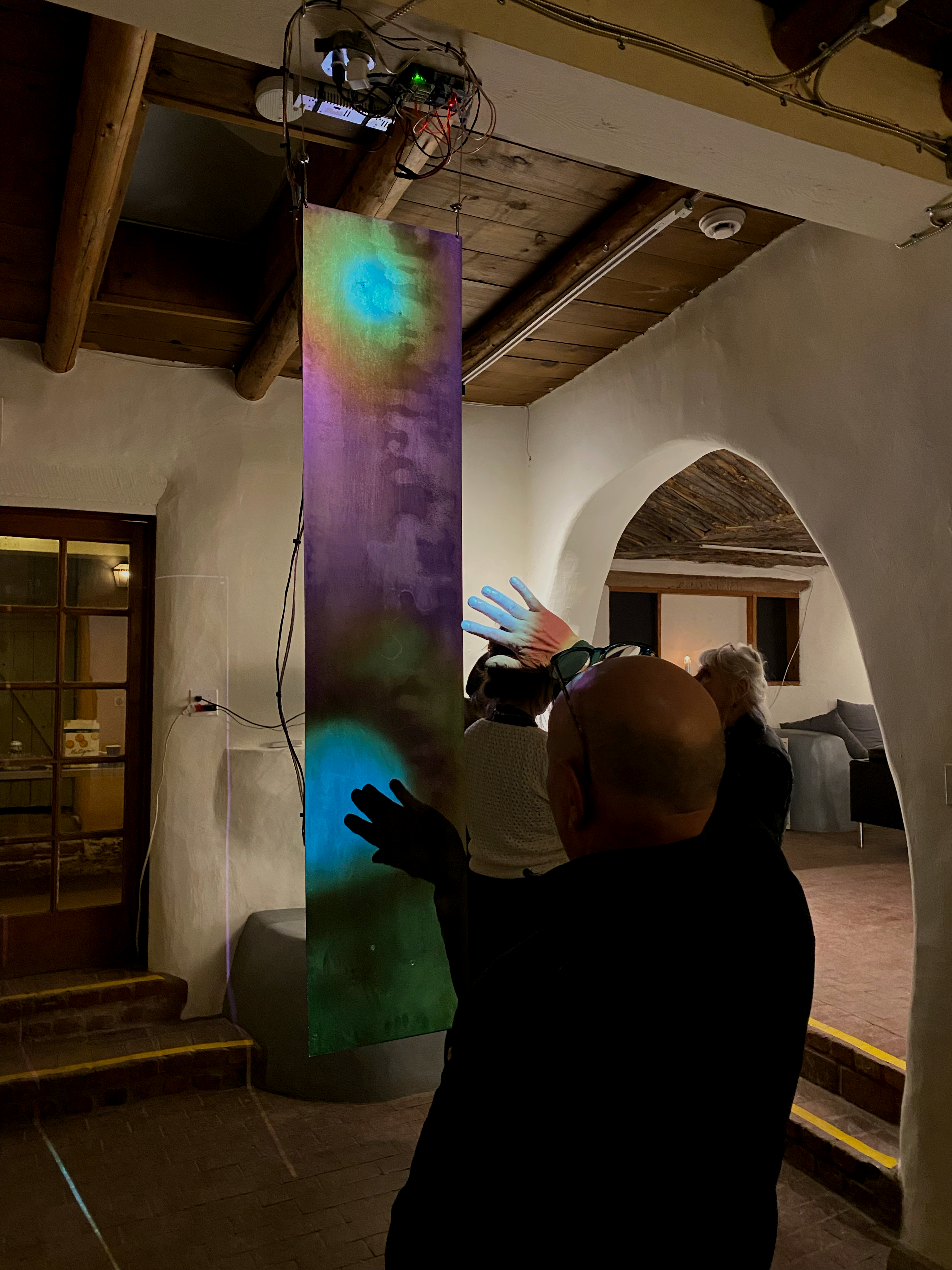
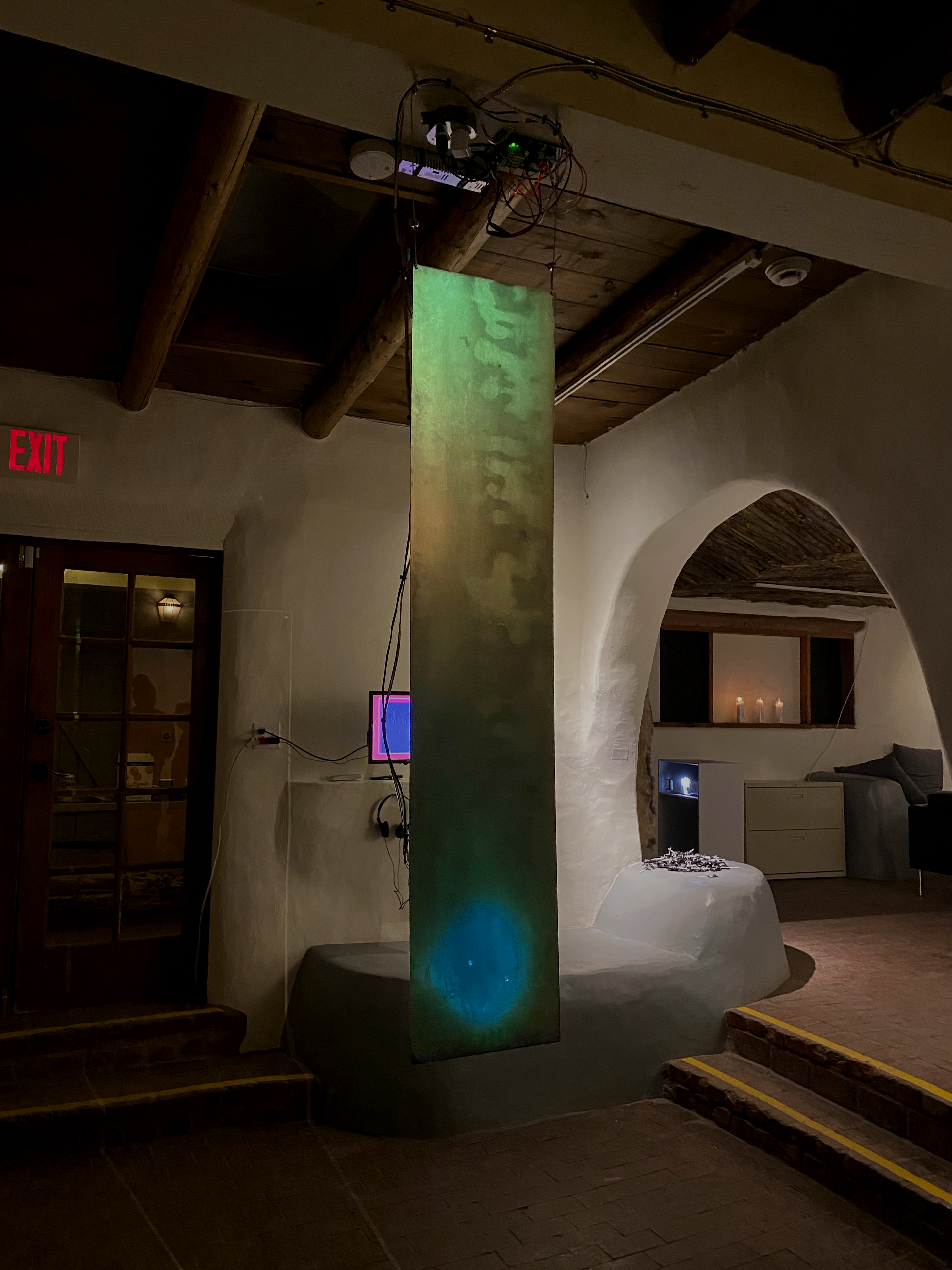
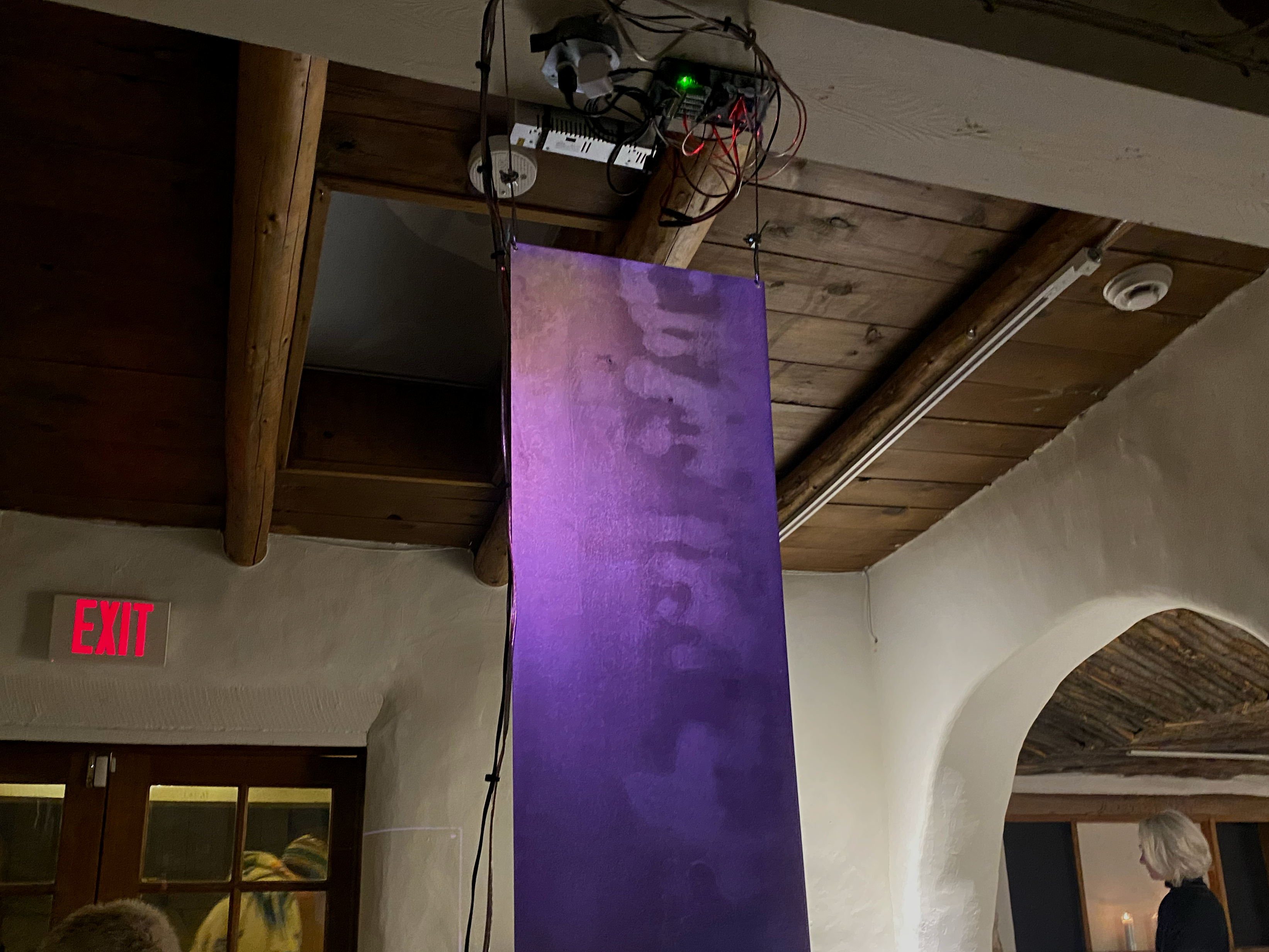
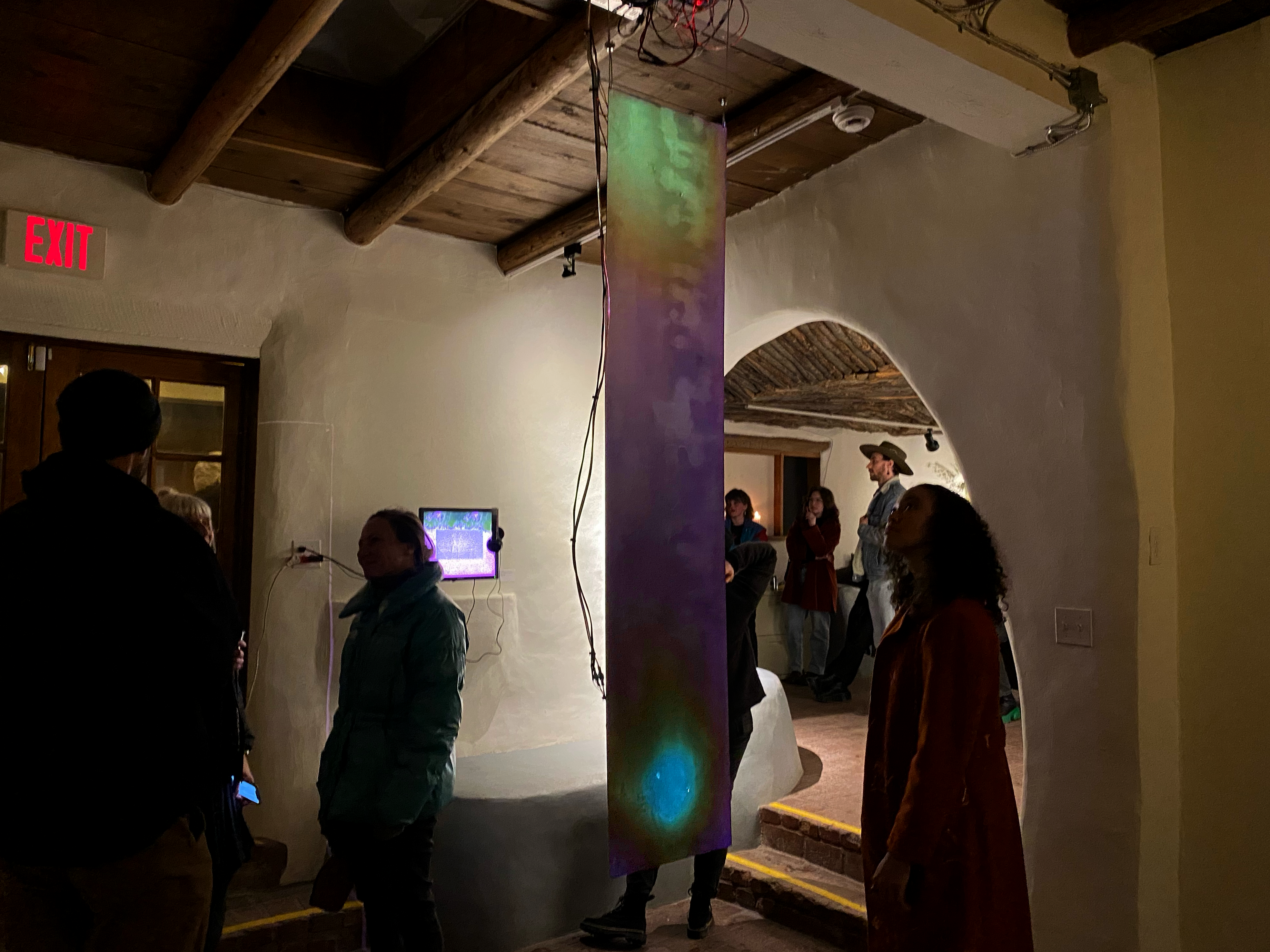
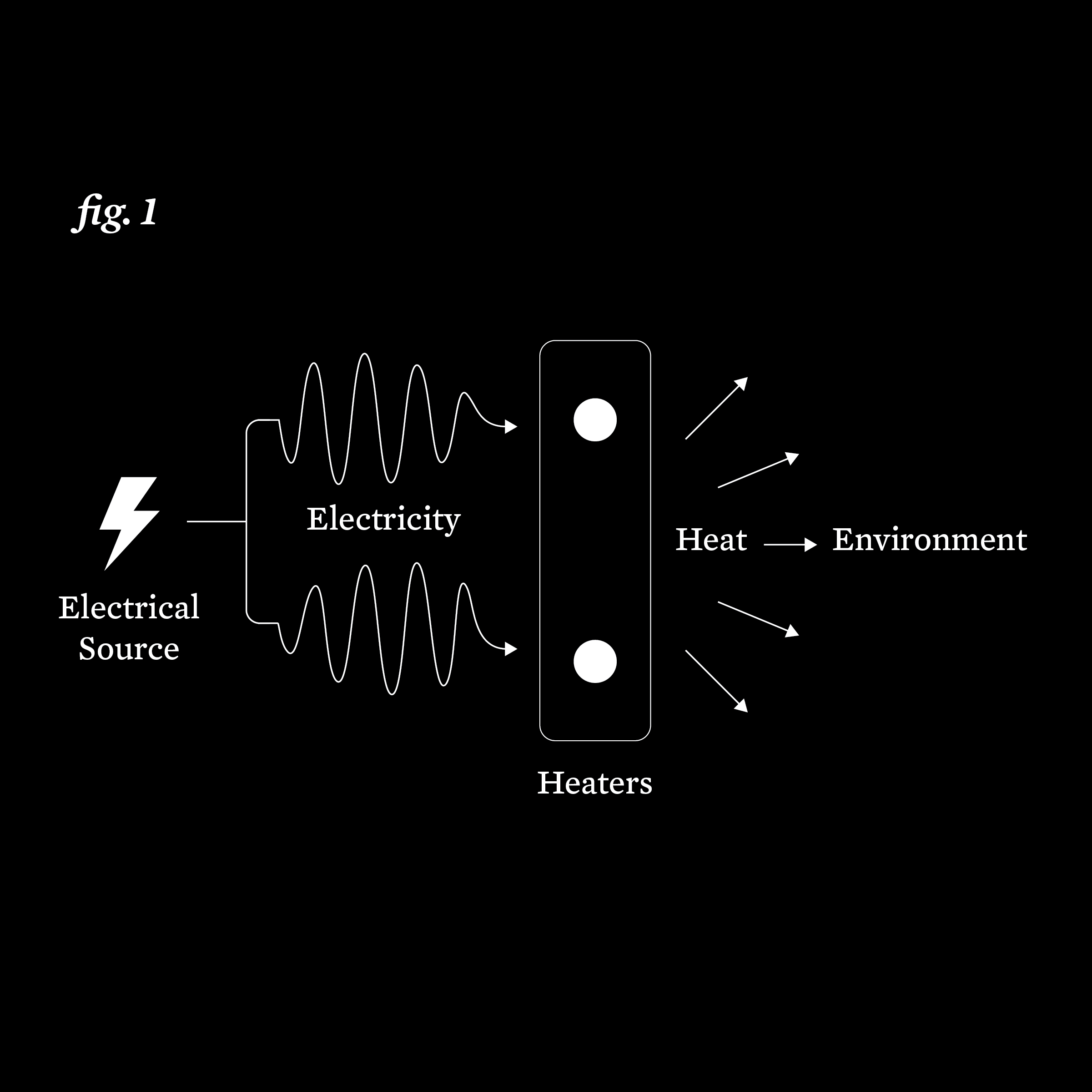

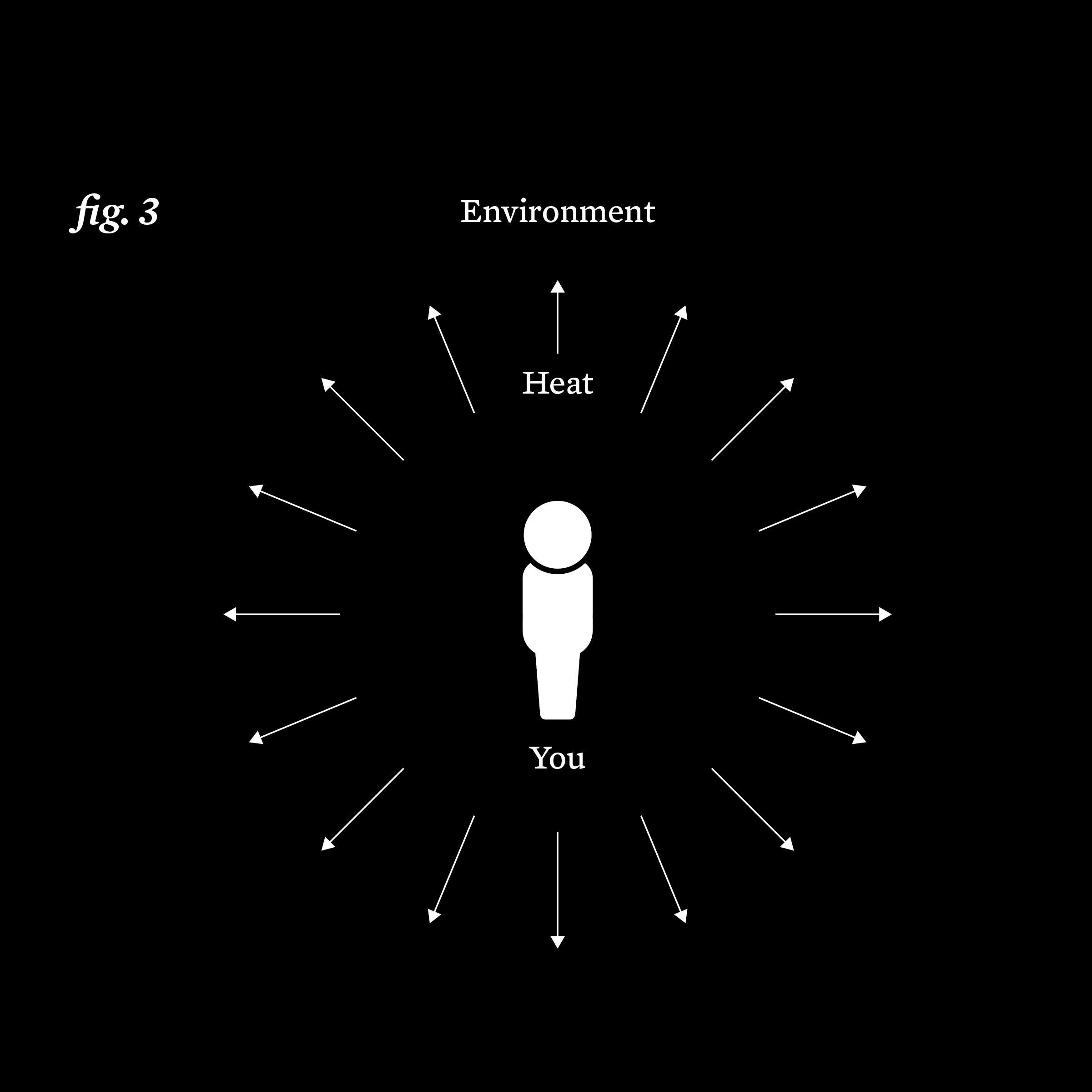

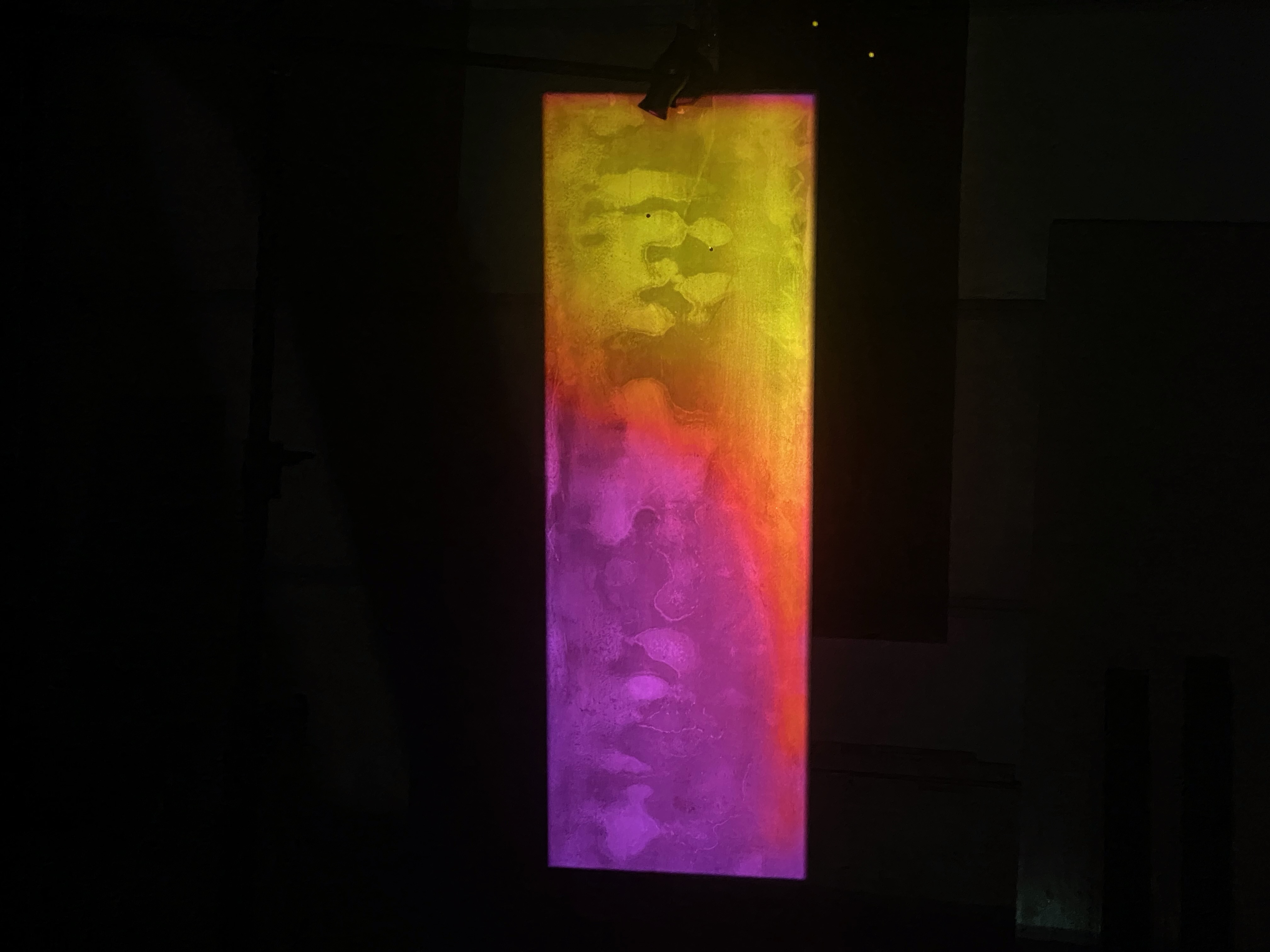
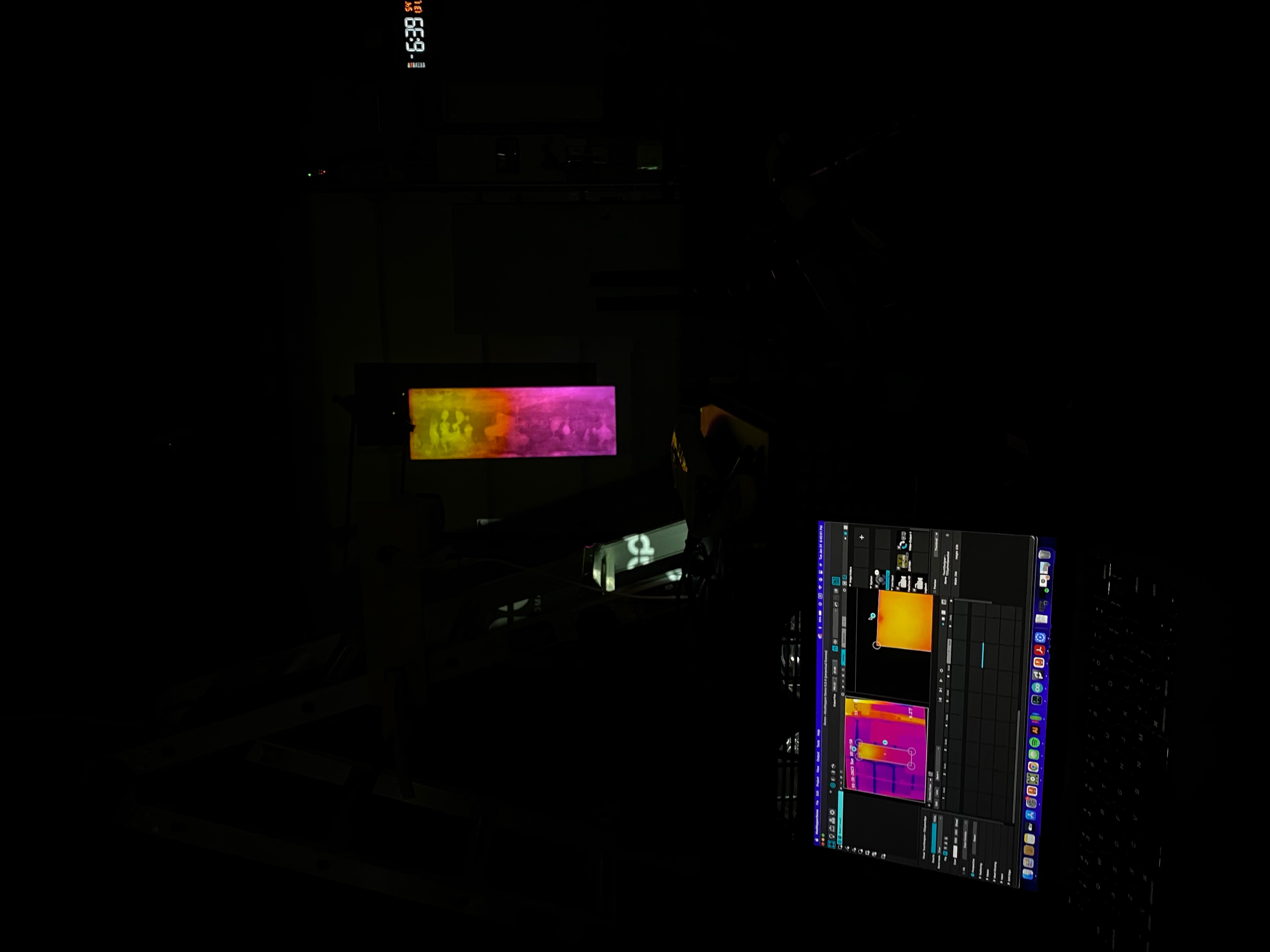
Xeros (2022) is a 64-screen, 8 channel video installation, building on research done for the Synistanai project. Xeros was shown as part of the 2022 Currents New Media festival at the Santa Fe Fairgrounds. The tower plays a live cyclonic particle simulation inspired by dust storms.
Thank you to the crew of Currents for helping me to make this possible!
Thank you to the crew of Currents for helping me to make this possible!
The Hyperlux (2022) are a series of work for the 2022 Winter/Spring show, Vibrant Pool, at Currents 826 in Santa Fe, NM.
The series continued on at 516ARTS and the Harwood Art Center in ABQ.
The entire series of work up to this point, alongside a collect of astrophotography by the Albuquerque Astronomical Society, is on view at Outpost! Performance Space until
the end of March 2024.
See a write-up in Hyperallergic about the show.
Hyperlux exist as a series of lightbox prints depicting simulated light assemblies. This research begun with the Assemblies project. The prints were supplemented with a video sculture and a wood etching.
Light lives as experience and as phenomena. Light exists as the fundamental system that allows for a visible perception of existence. It exists as a cross-dimensional force through our awareness of time. Light exists as dust that isolates the latent print of corporality, a mote of creation. Dust exists as informer. Dust exists as a base-unit, a fundamental particle that reveals energies beyond perception. It is tool, instrument and material.
Simulation acts as a window into possibility. The Hyperlux were created as impressions of simulated photons, inspired by gravity's effect on light as co-existent forces. A simulated existence allows for a systematic level of control of our elementary unit. Through this attempt of control with the use of variable oscillation, patterns start to emerge through overlaps and superpositions, resulting in a type of photonic moire.
The use of a digital space atomizes the line between perceived reality and simulation, and while the digital realm can forever chase the goal of natural physical laws, the fabrication of a simulation provides a new ground plane from which to experiment from. Particles allow analysis of simple bound systems. The particle serves as a dye that reveals hidden dynamics. It is a unit of possibility and potential, a building block in flux, an origin and an end. The particles lay ready to collect and reform and to visualize the forces that lead the way.
Show Copy:
Vibrant Pool presents the work of three New Mexico-based artists working across a variety of disciplines in innovative ways. Vibration—whether it be sonic, photic or chromatic—elicits energy, resonates in the space between us and generates excitement. The bodies of work presented by each artist are emergent processes; pieces that become new again at each interaction or shift of the light. Ranging from sound installation to experimental photography to light sculpture, the work in Vibrant Pool showcases some of New Mexico’s brightest emerging artists: Kirsten Angerbauer, Emily Margarit Mason and Zuyva Sevilla.
@k.angerbauer @emilymargaritmason @galacticatlas
The series continued on at 516ARTS and the Harwood Art Center in ABQ.
The entire series of work up to this point, alongside a collect of astrophotography by the Albuquerque Astronomical Society, is on view at Outpost! Performance Space until
the end of March 2024.
See a write-up in Hyperallergic about the show.
Hyperlux exist as a series of lightbox prints depicting simulated light assemblies. This research begun with the Assemblies project. The prints were supplemented with a video sculture and a wood etching.
Light lives as experience and as phenomena. Light exists as the fundamental system that allows for a visible perception of existence. It exists as a cross-dimensional force through our awareness of time. Light exists as dust that isolates the latent print of corporality, a mote of creation. Dust exists as informer. Dust exists as a base-unit, a fundamental particle that reveals energies beyond perception. It is tool, instrument and material.
Simulation acts as a window into possibility. The Hyperlux were created as impressions of simulated photons, inspired by gravity's effect on light as co-existent forces. A simulated existence allows for a systematic level of control of our elementary unit. Through this attempt of control with the use of variable oscillation, patterns start to emerge through overlaps and superpositions, resulting in a type of photonic moire.
The use of a digital space atomizes the line between perceived reality and simulation, and while the digital realm can forever chase the goal of natural physical laws, the fabrication of a simulation provides a new ground plane from which to experiment from. Particles allow analysis of simple bound systems. The particle serves as a dye that reveals hidden dynamics. It is a unit of possibility and potential, a building block in flux, an origin and an end. The particles lay ready to collect and reform and to visualize the forces that lead the way.
Show Copy:
Vibrant Pool presents the work of three New Mexico-based artists working across a variety of disciplines in innovative ways. Vibration—whether it be sonic, photic or chromatic—elicits energy, resonates in the space between us and generates excitement. The bodies of work presented by each artist are emergent processes; pieces that become new again at each interaction or shift of the light. Ranging from sound installation to experimental photography to light sculpture, the work in Vibrant Pool showcases some of New Mexico’s brightest emerging artists: Kirsten Angerbauer, Emily Margarit Mason and Zuyva Sevilla.
@k.angerbauer @emilymargaritmason @galacticatlas
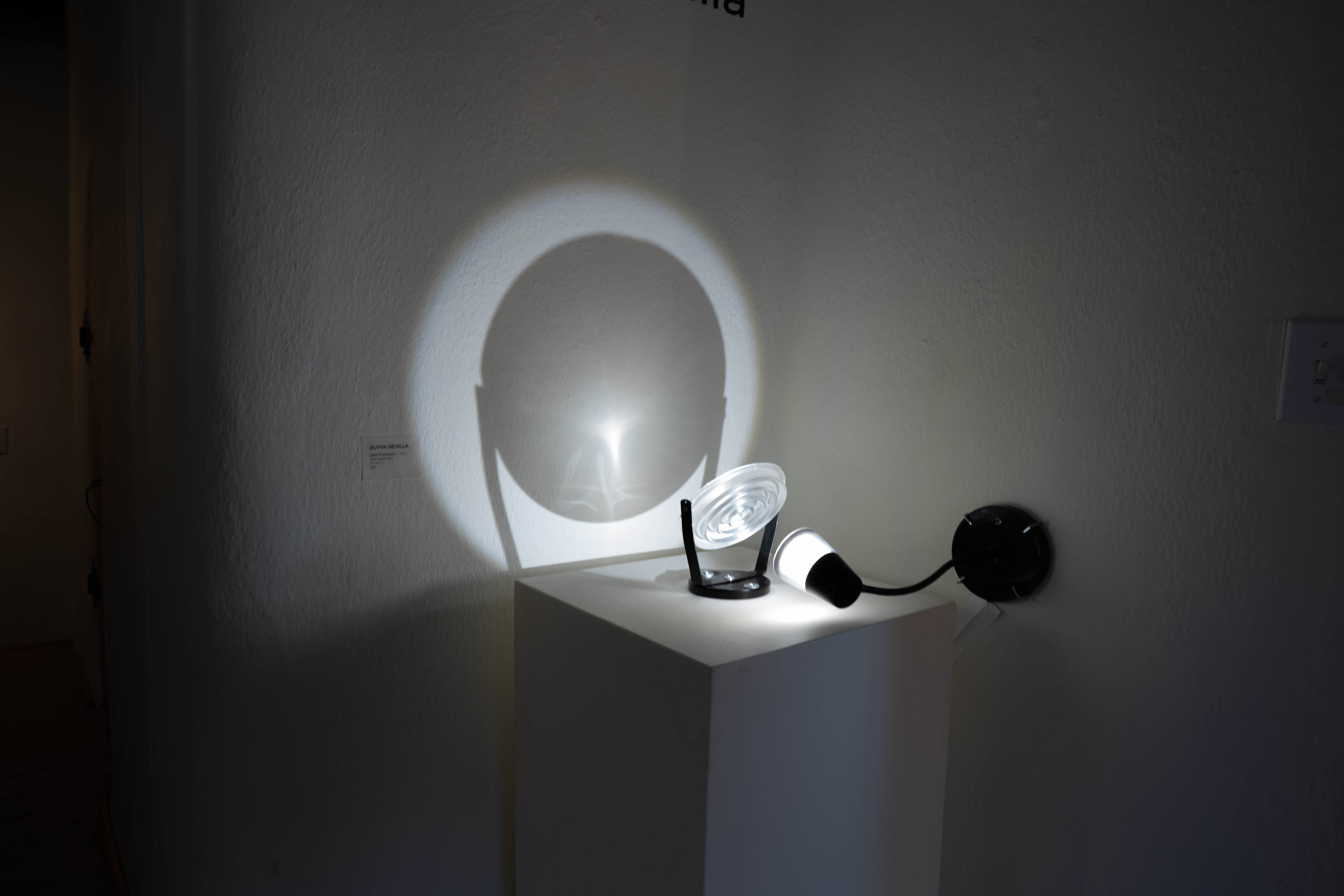
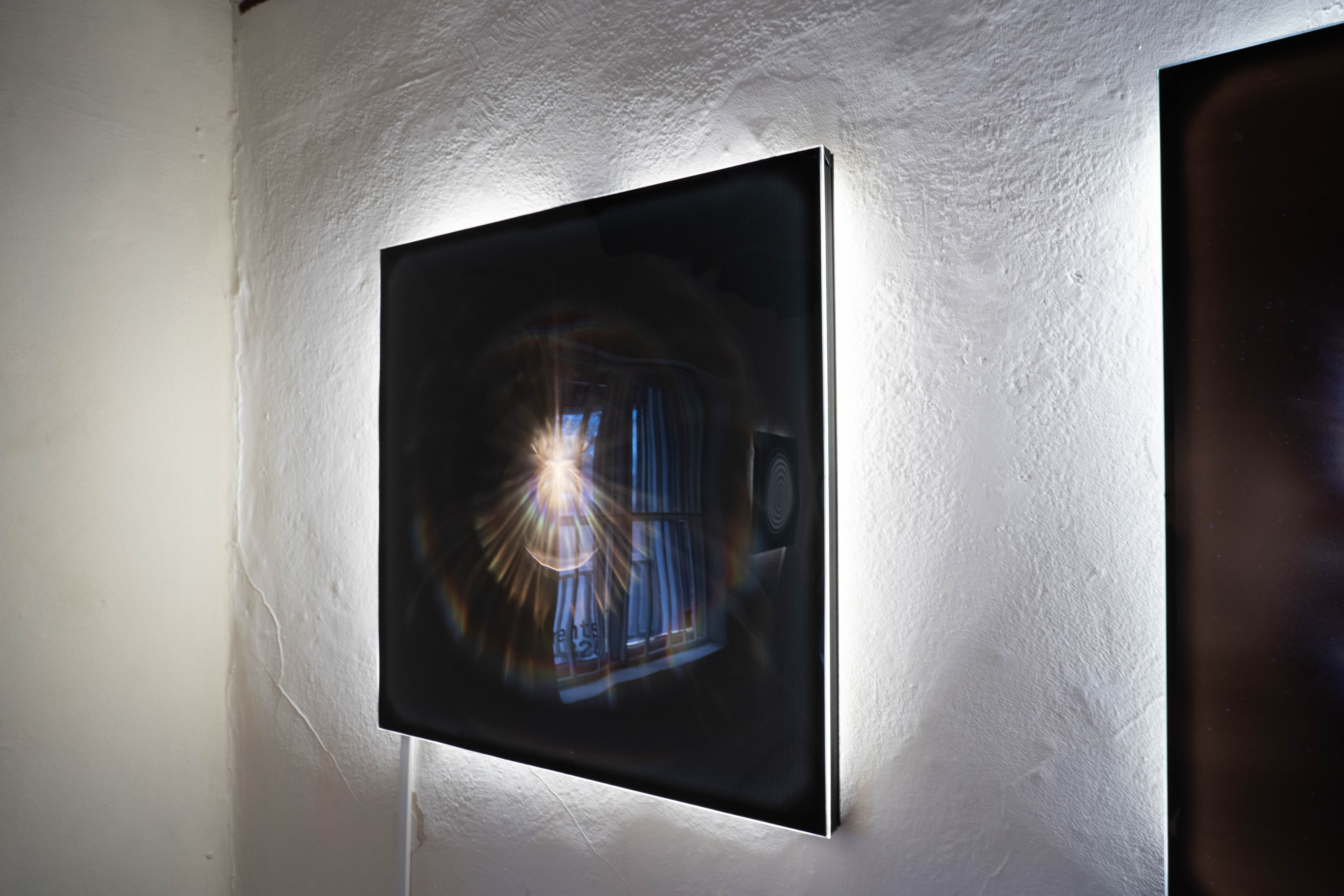
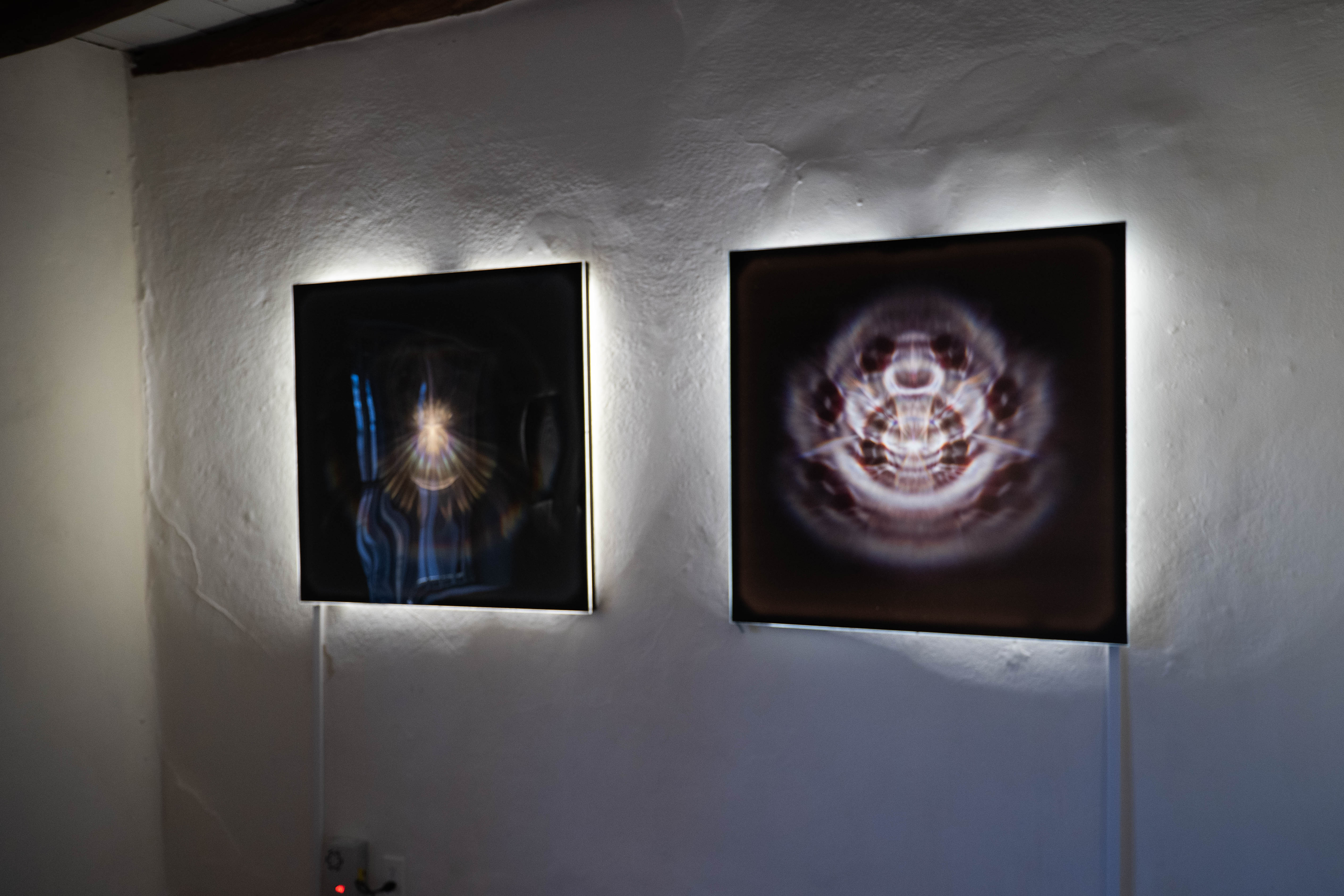
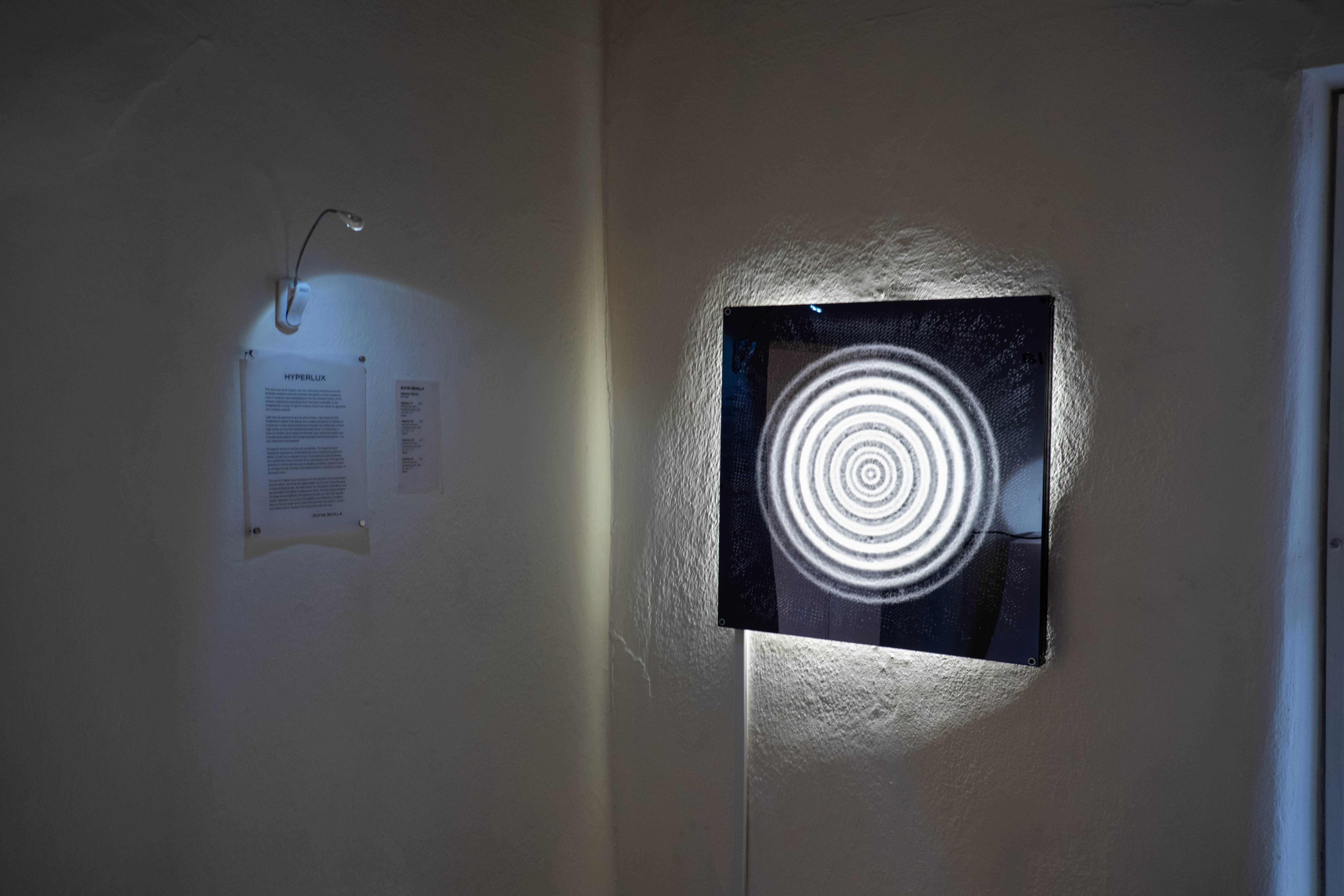
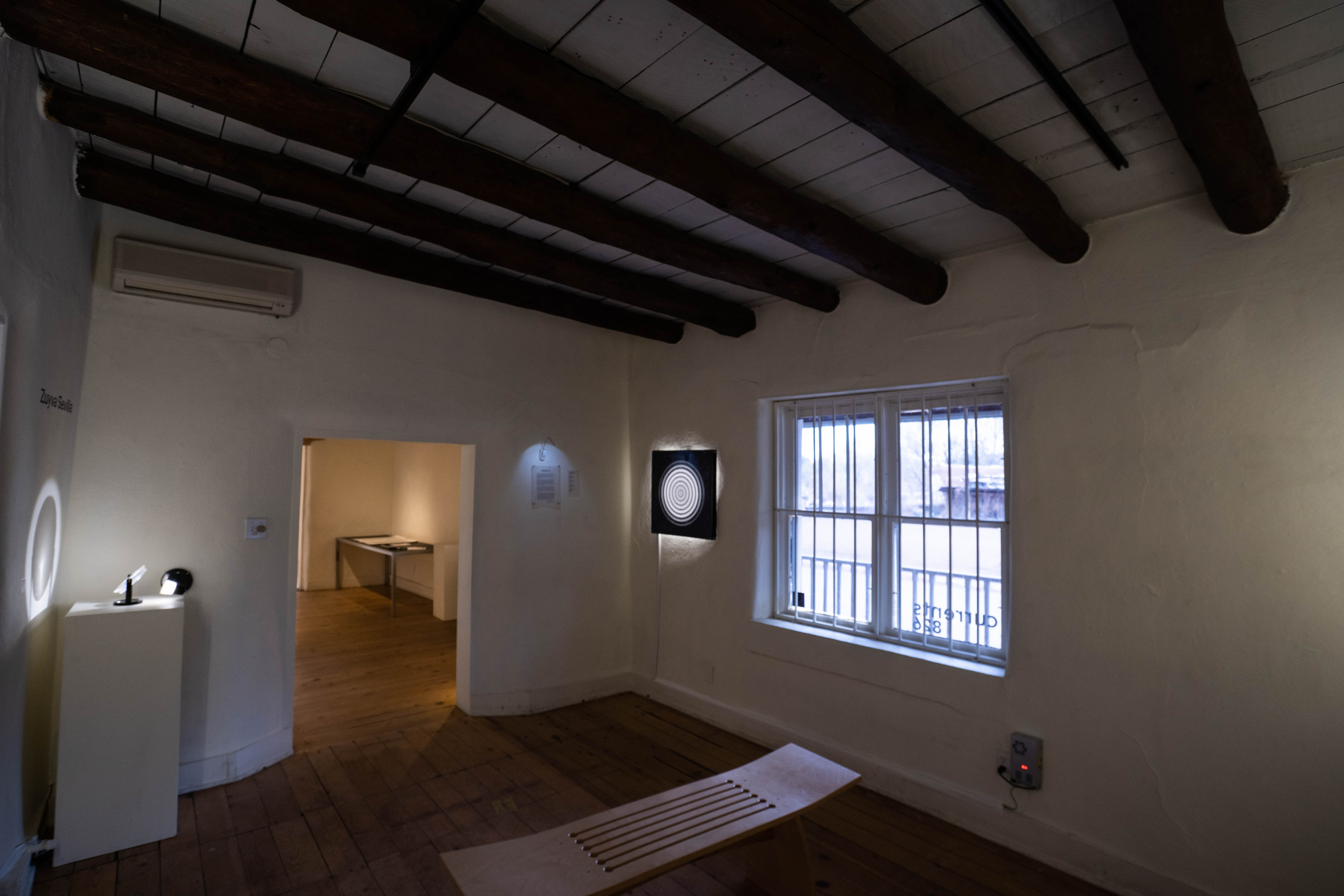
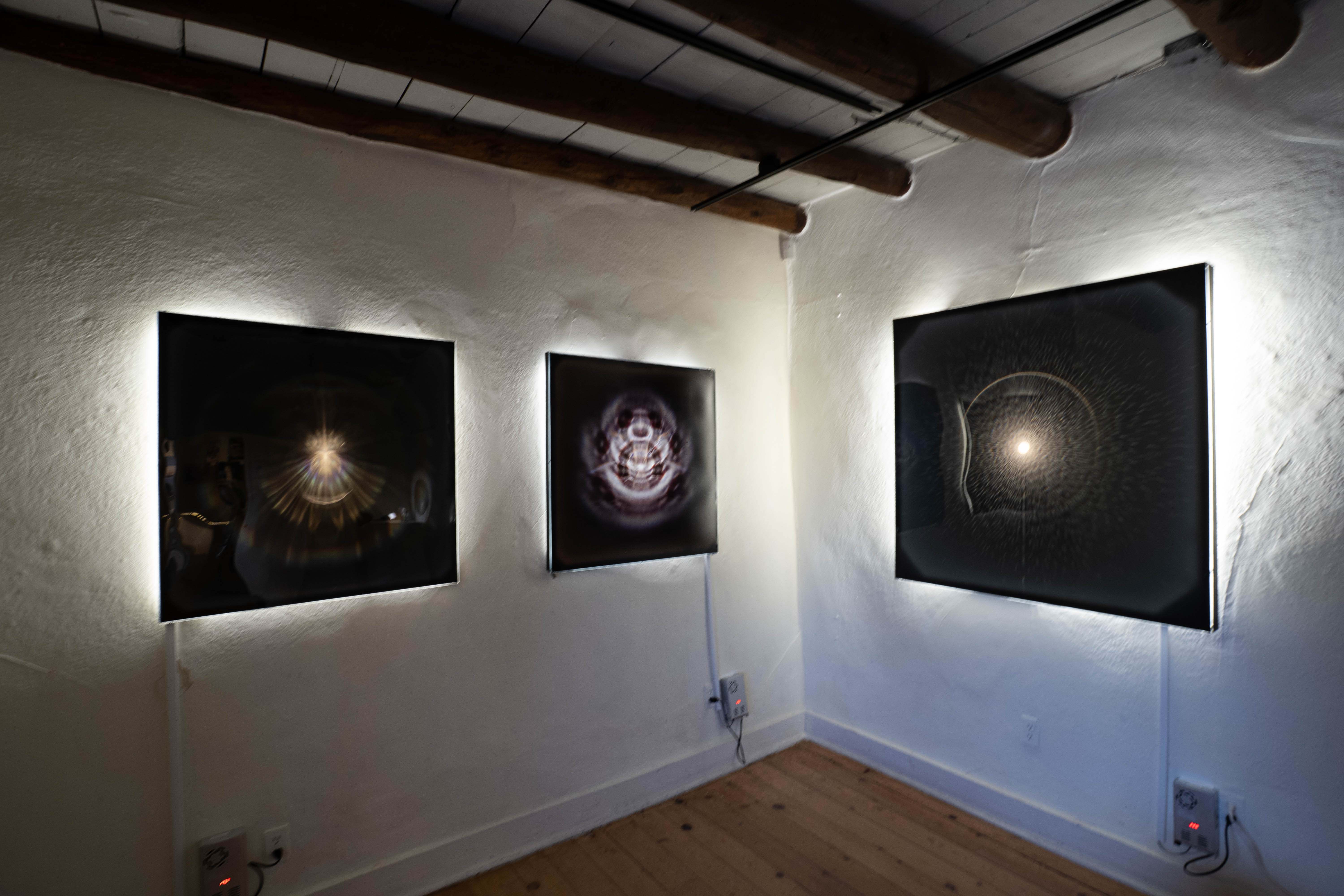
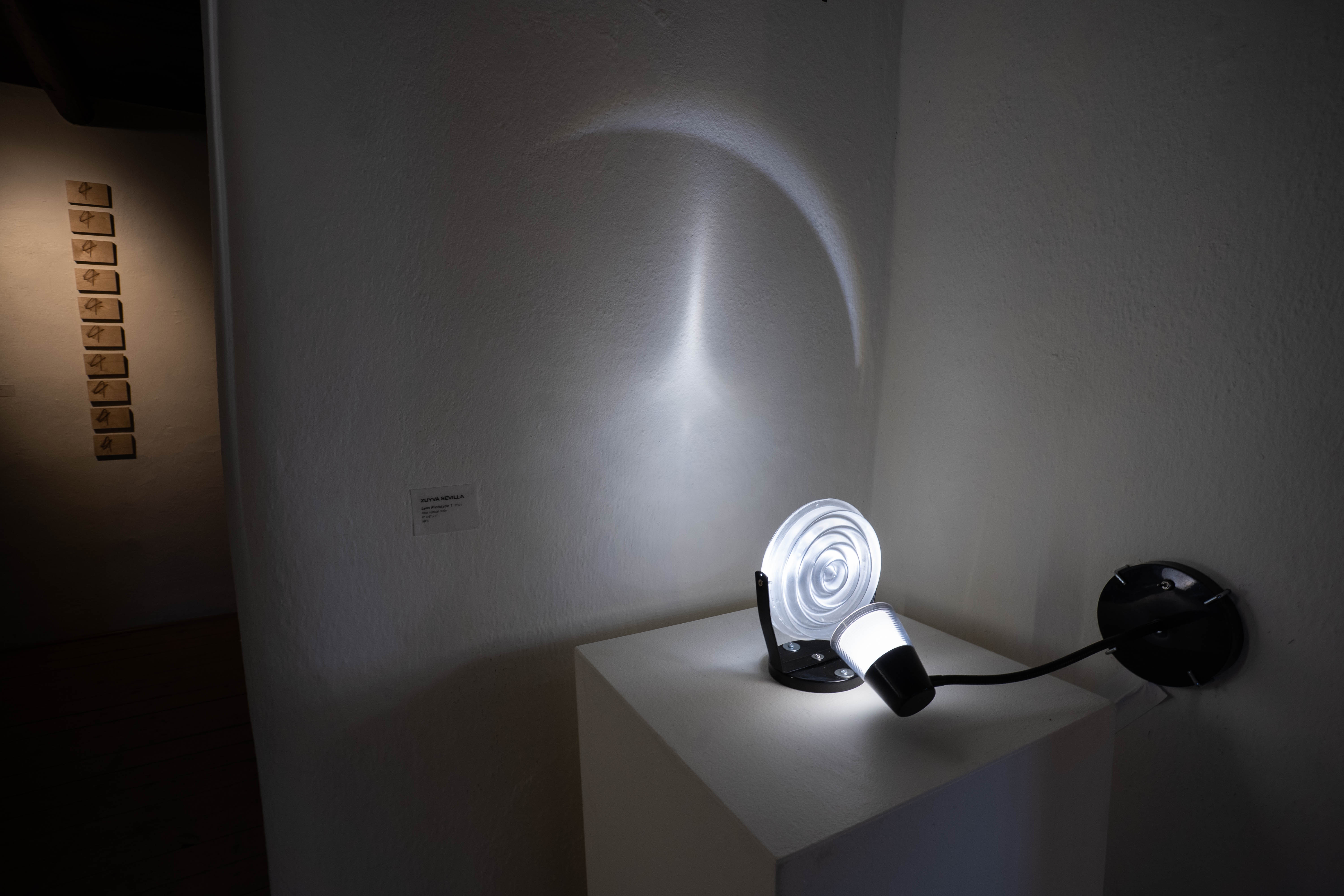
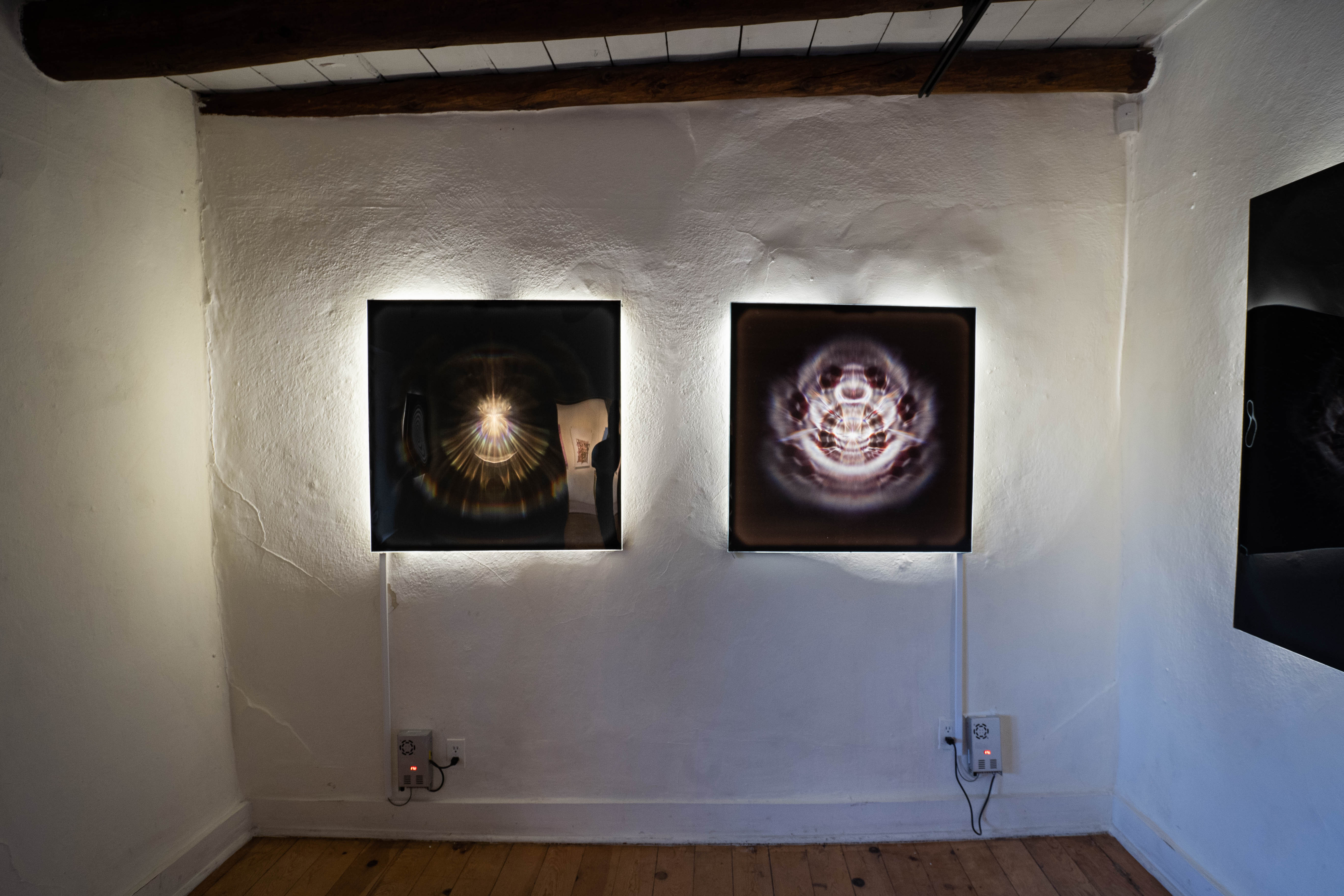
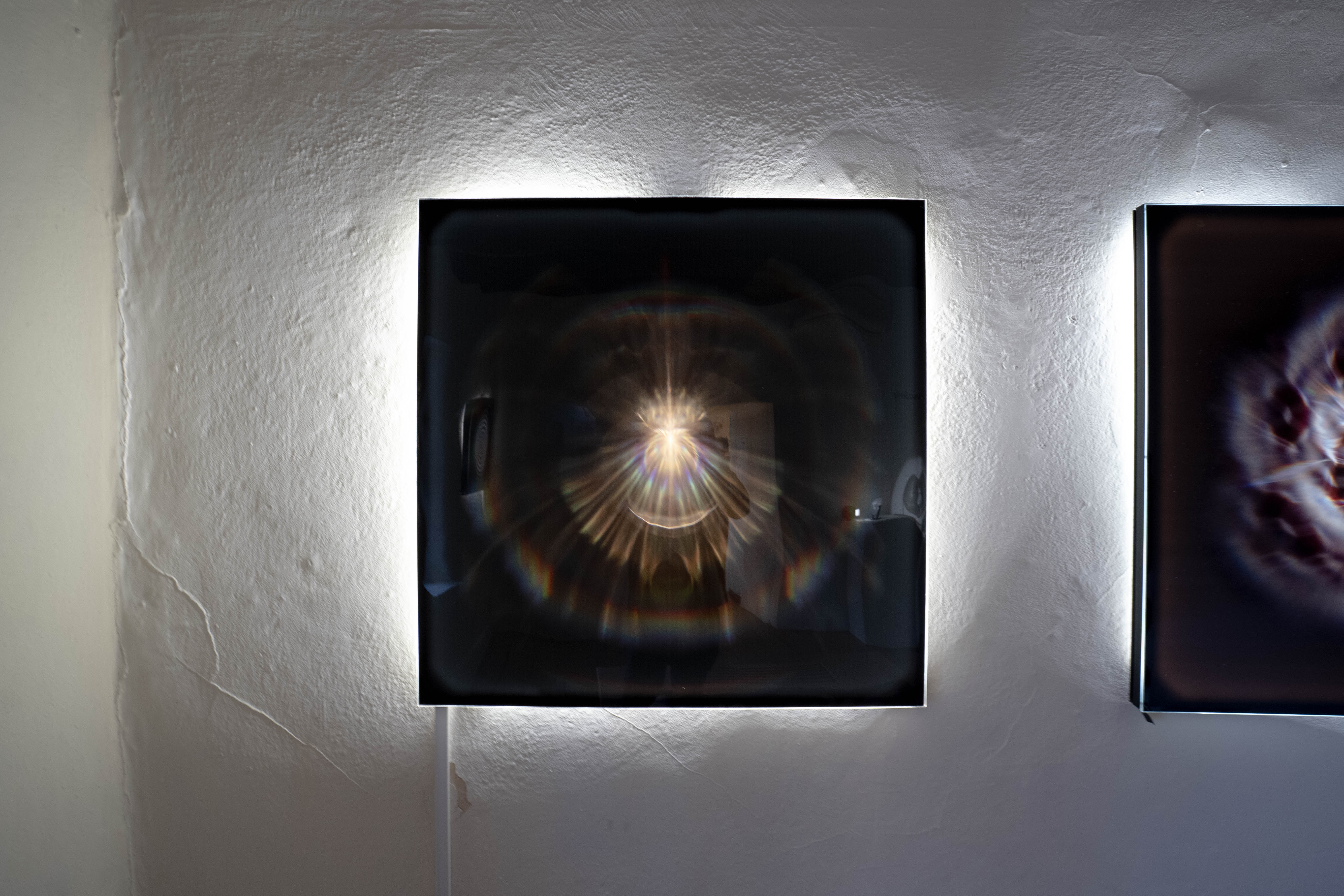
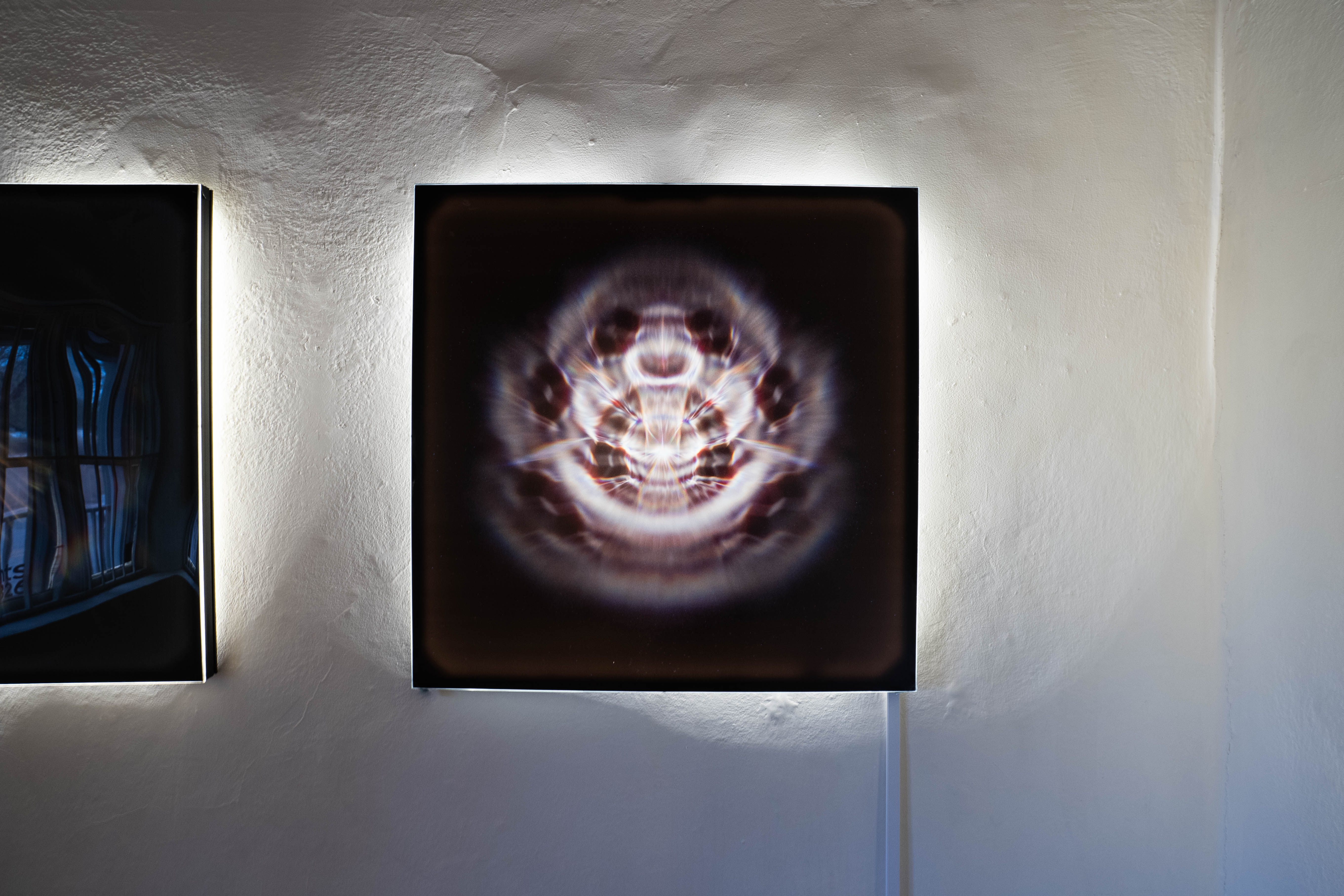
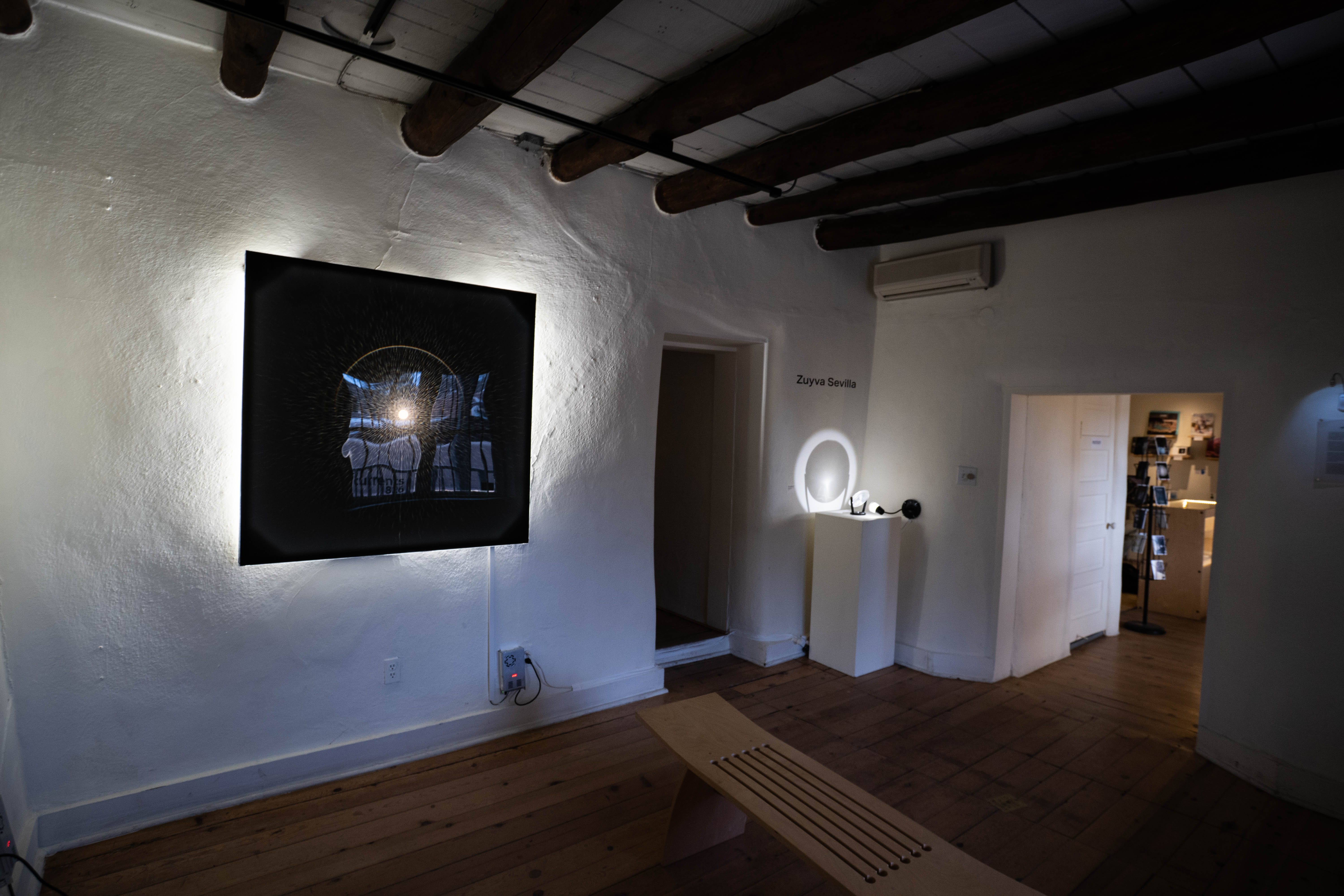
LightSpace at Outpost! Performance Space
Hyperlux at 516ARTS in Albuquerque
